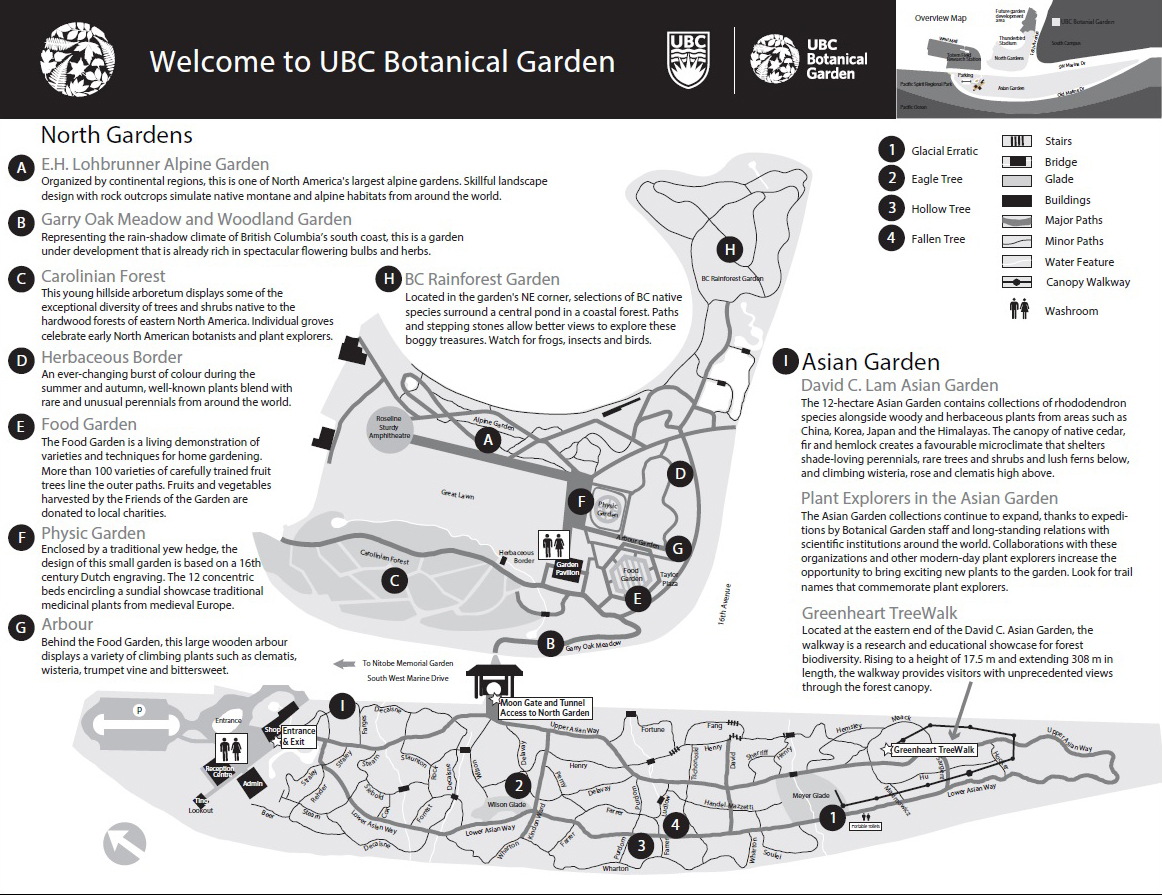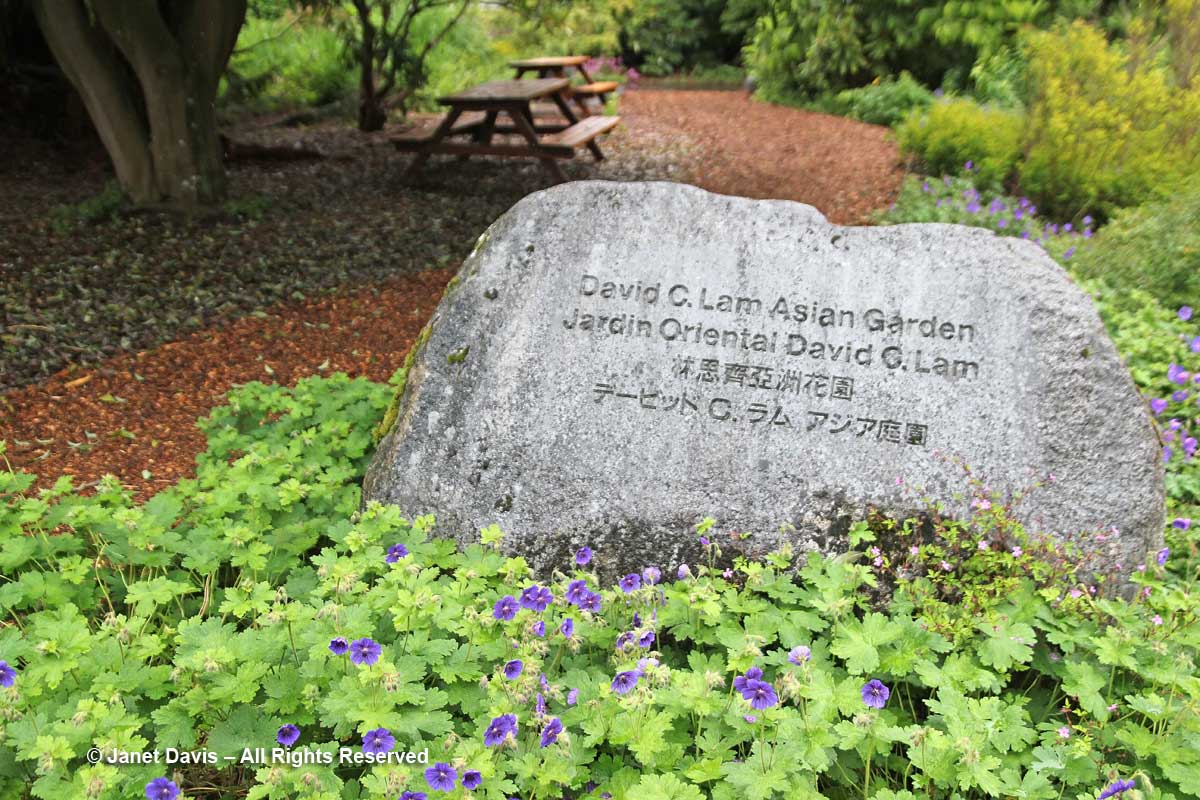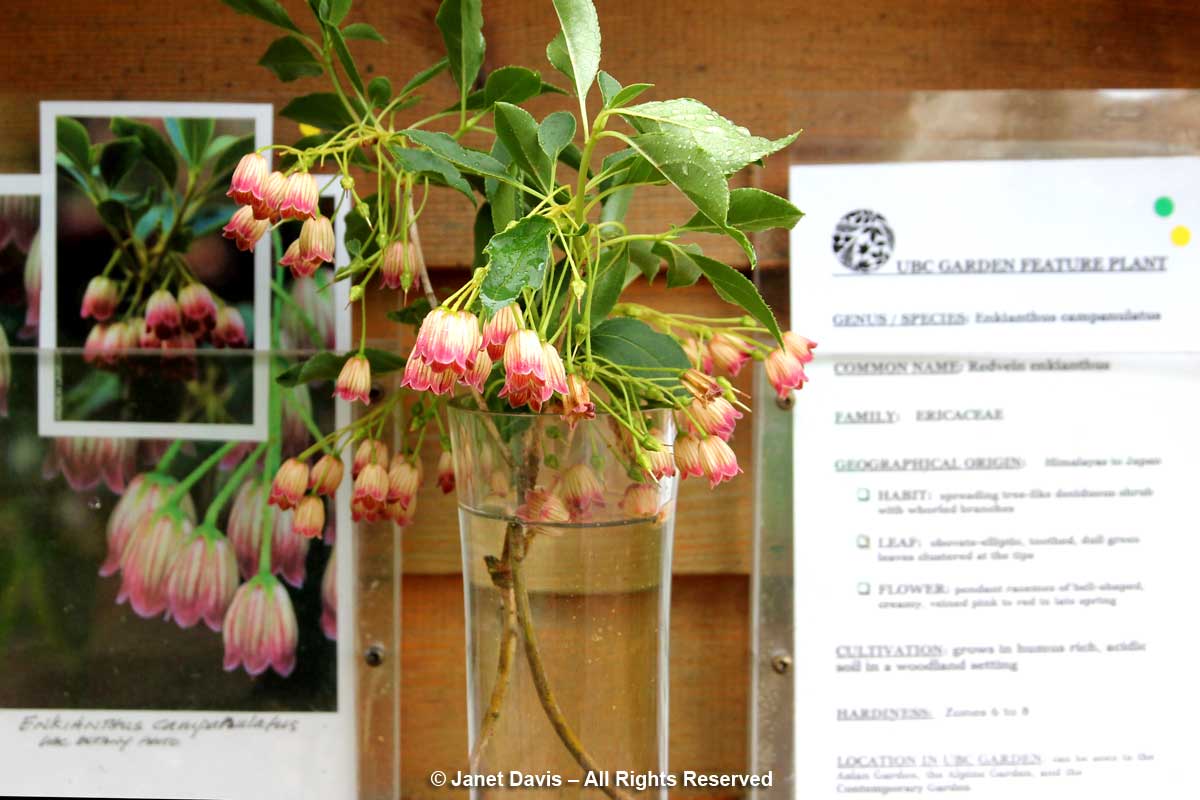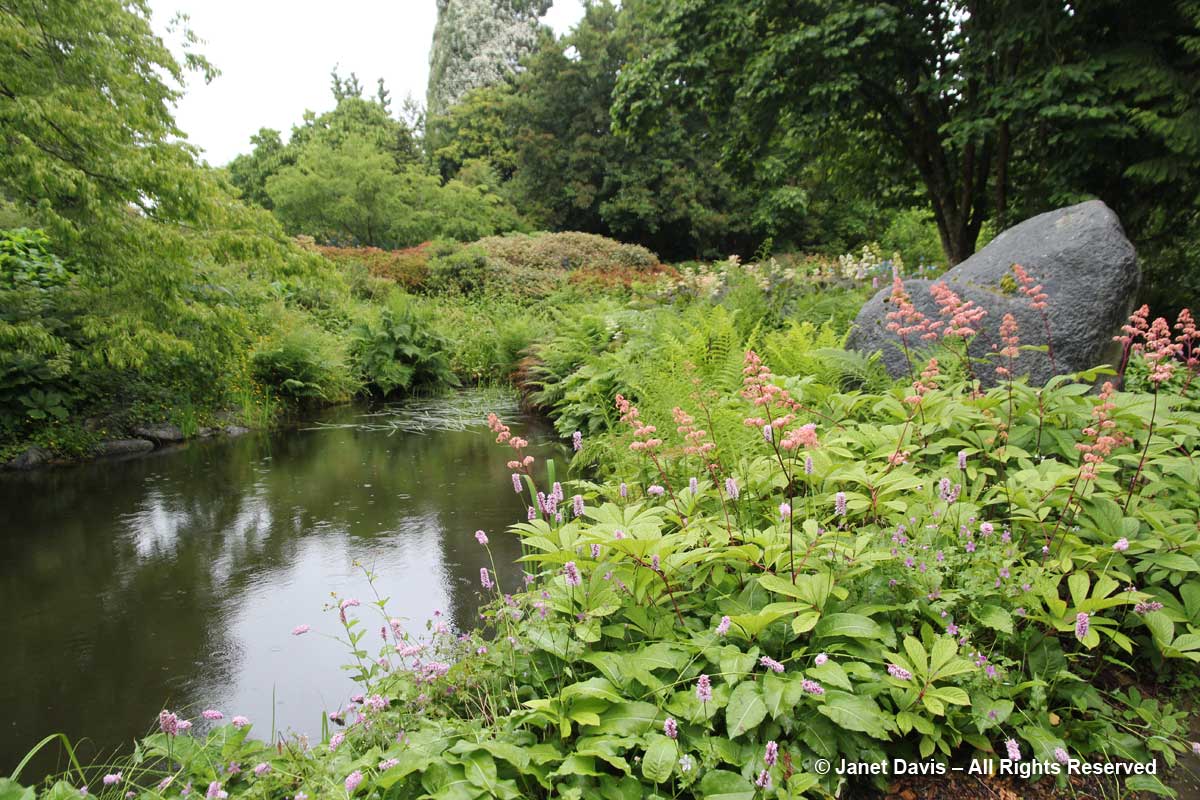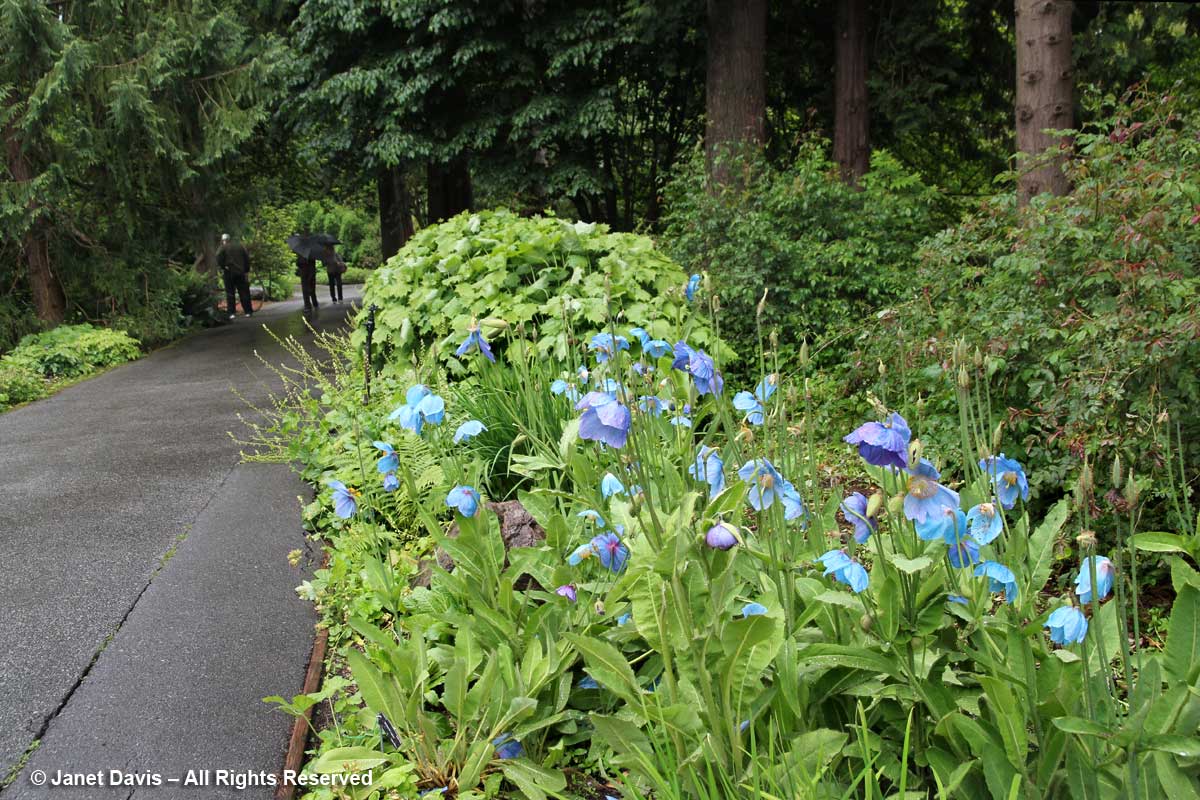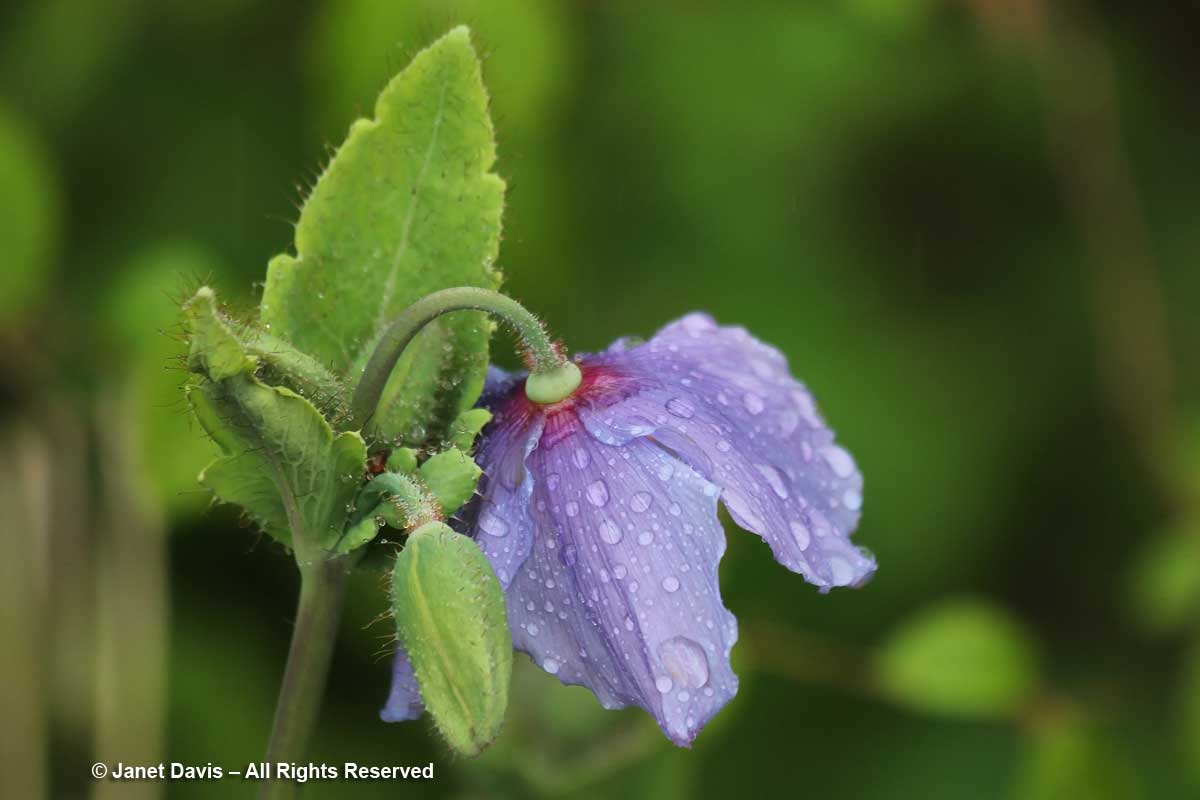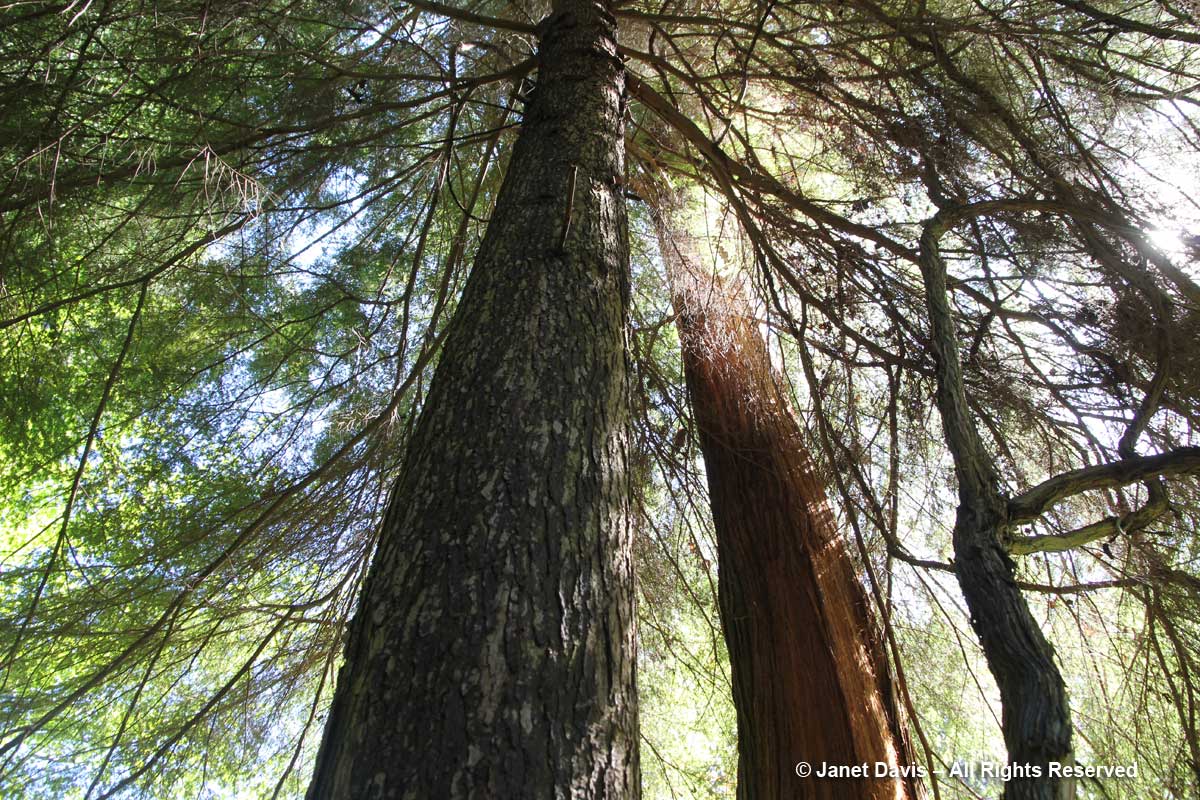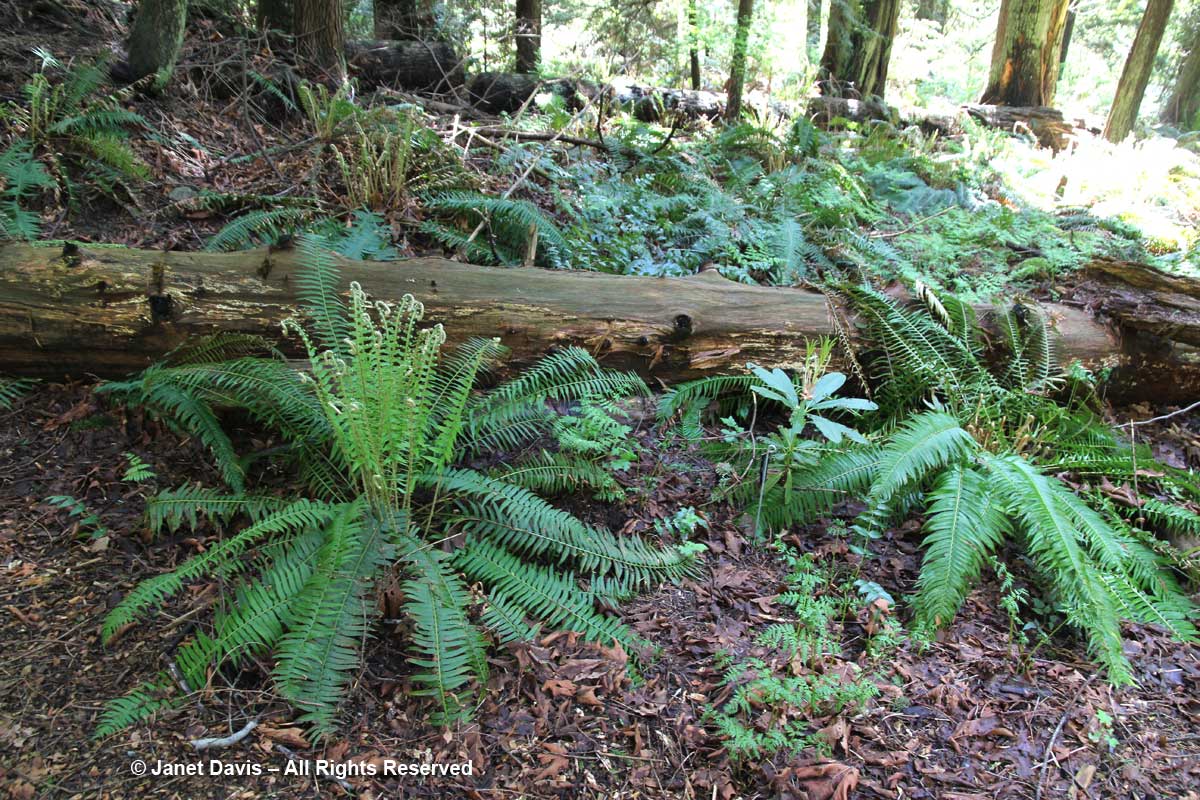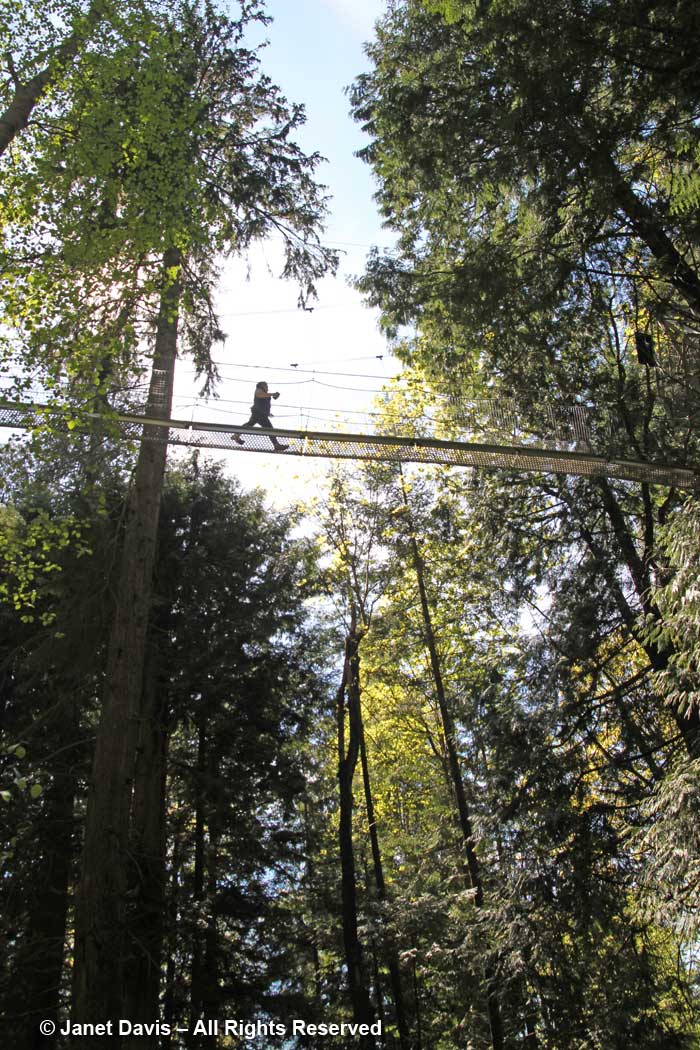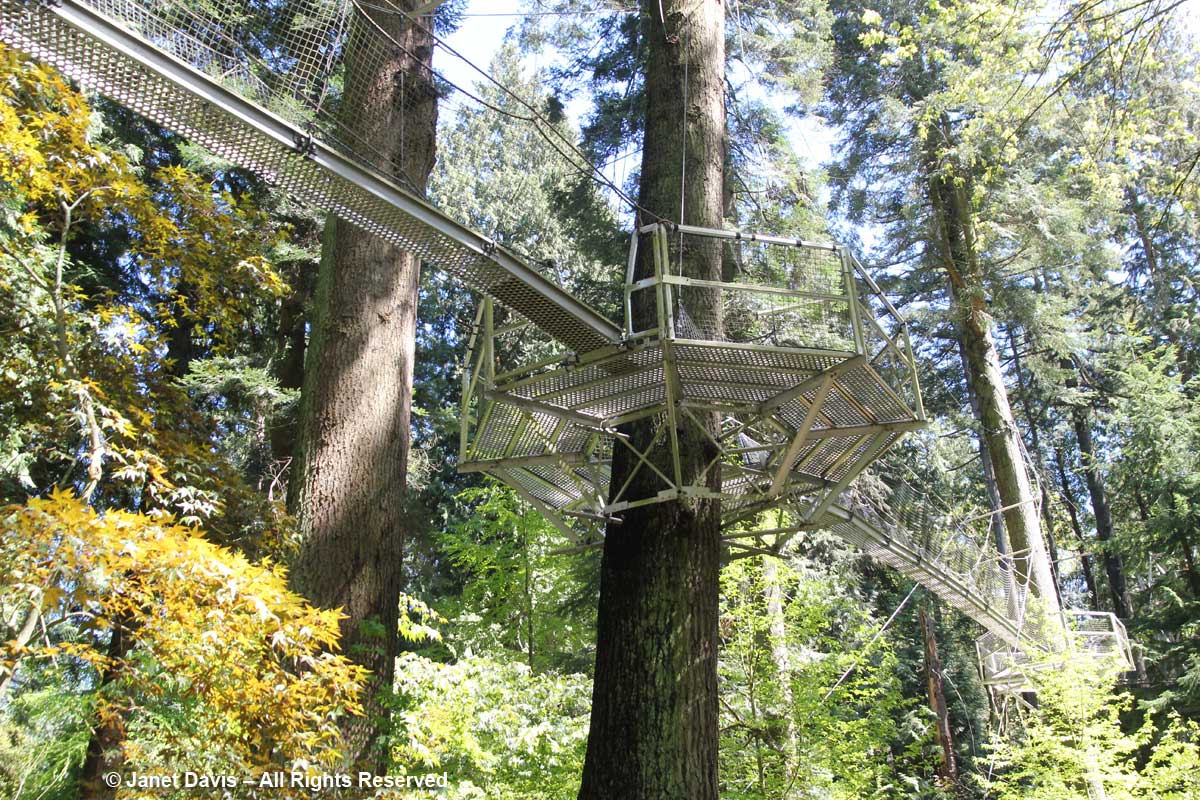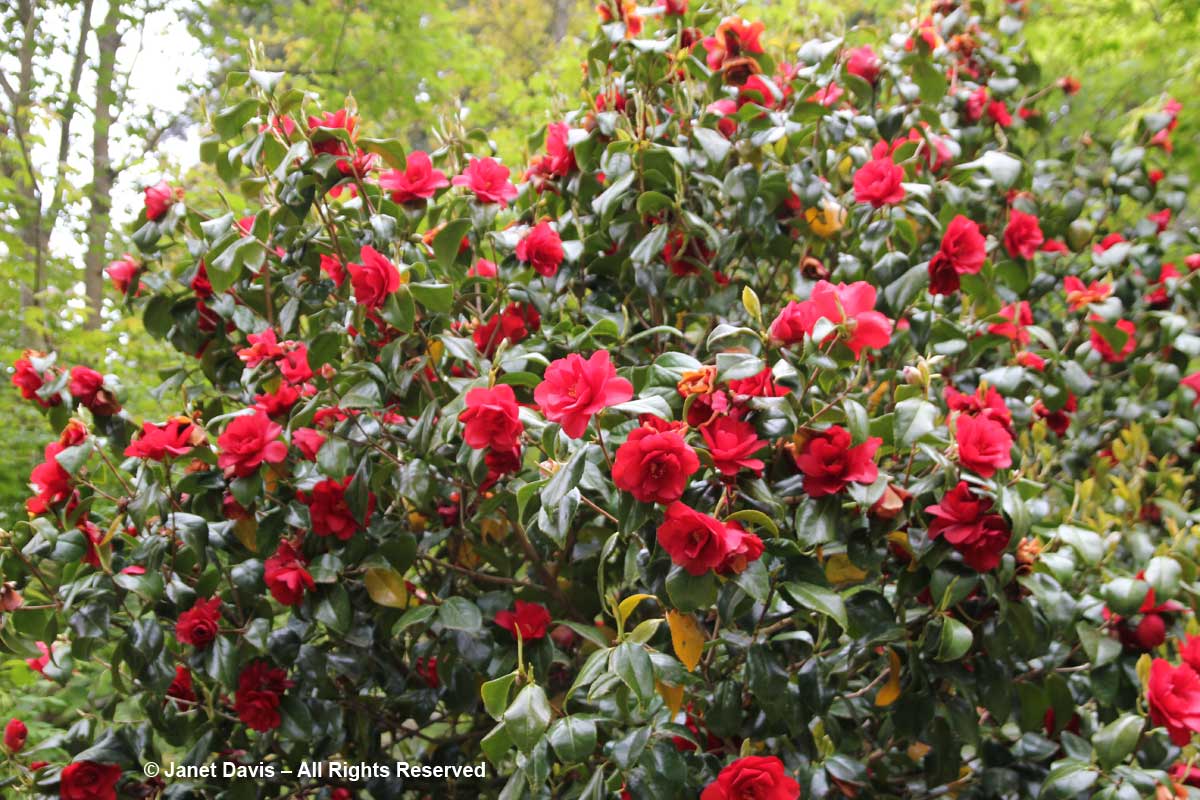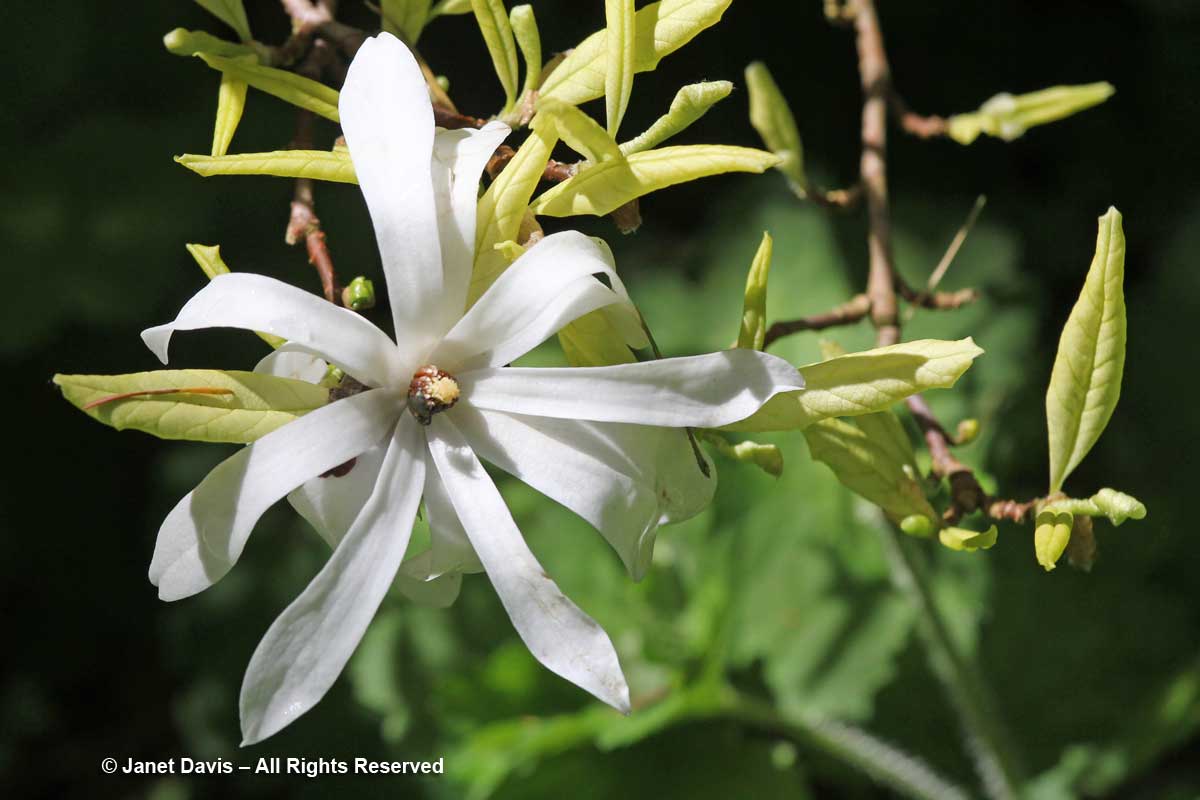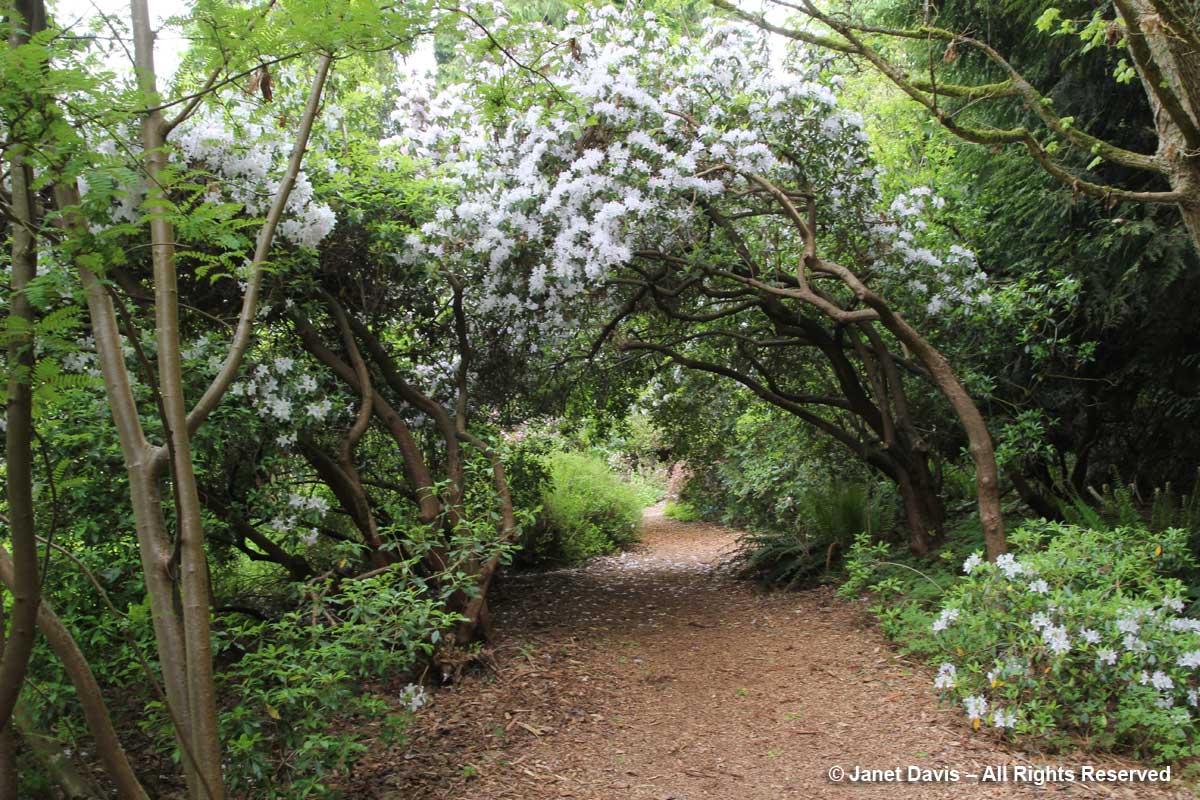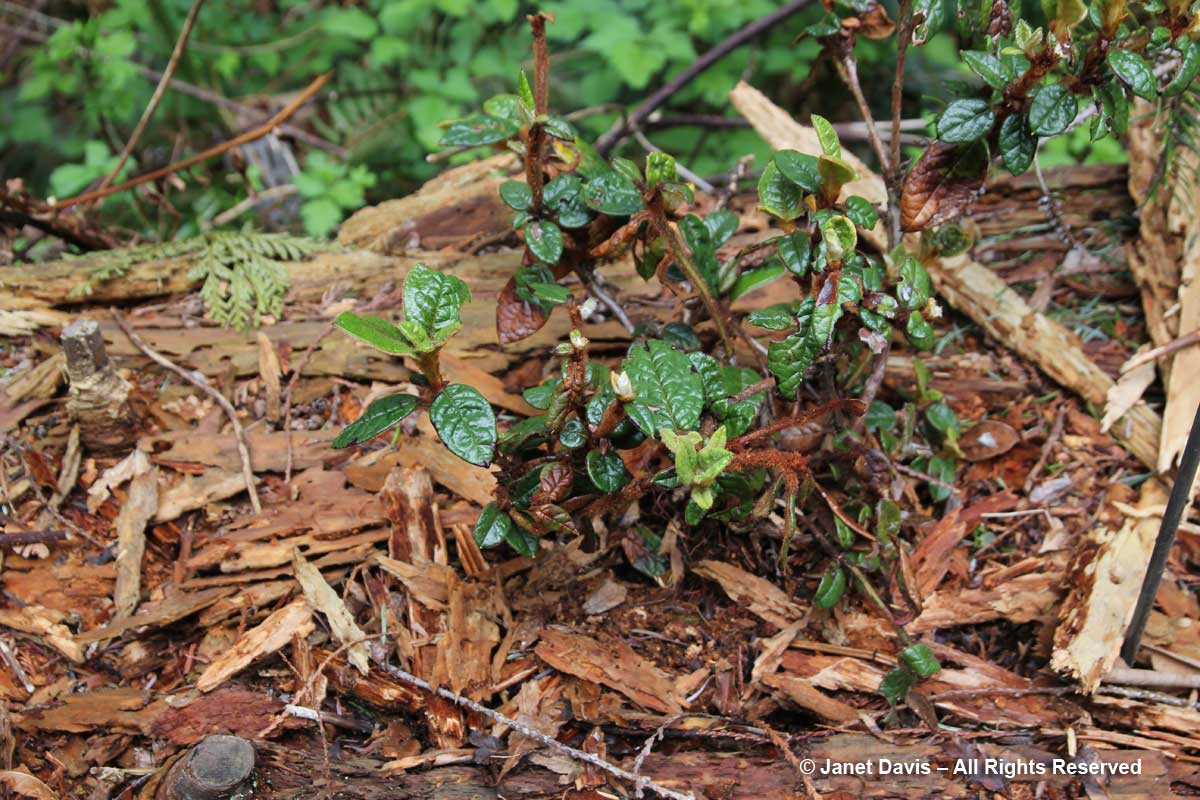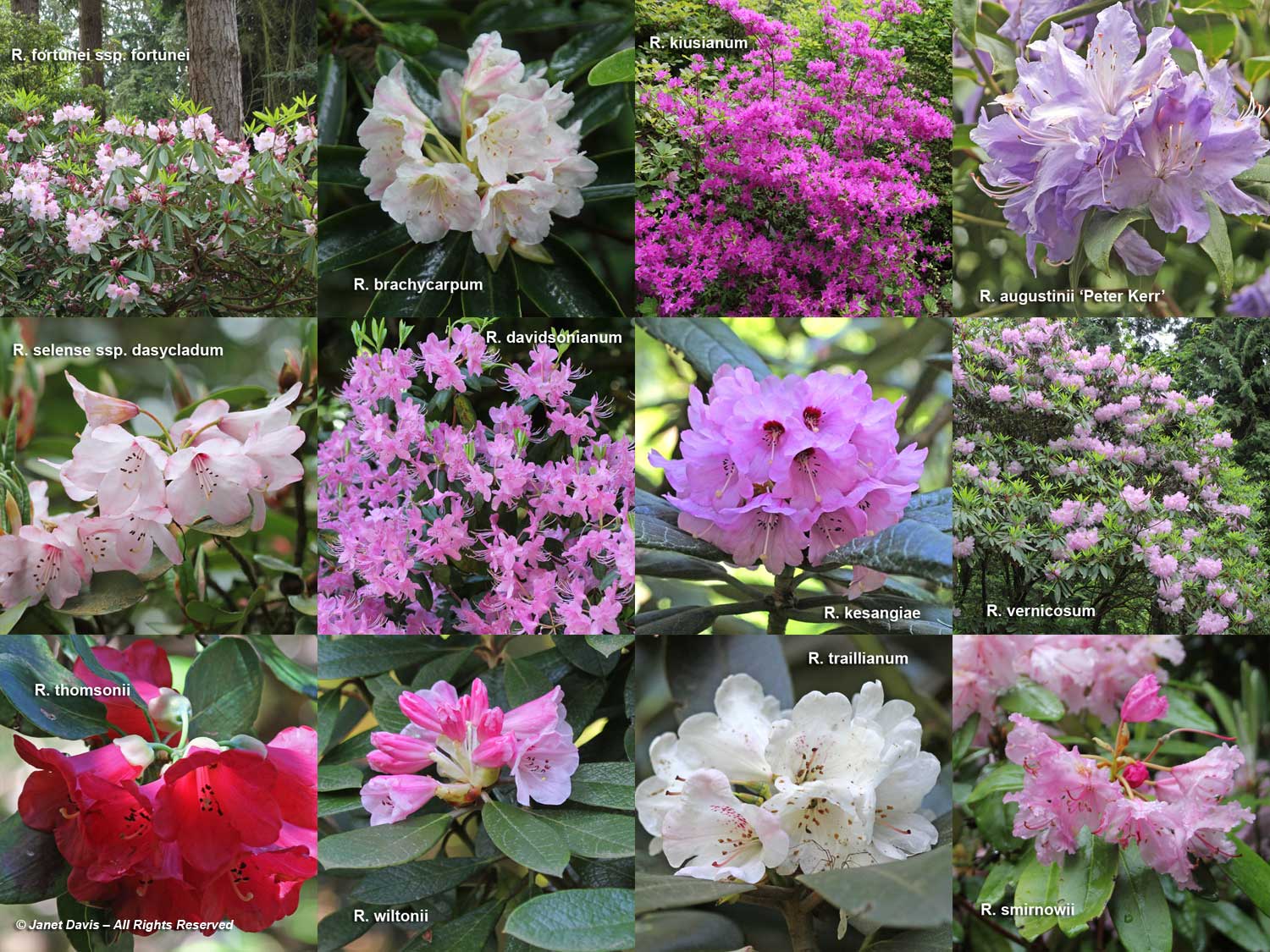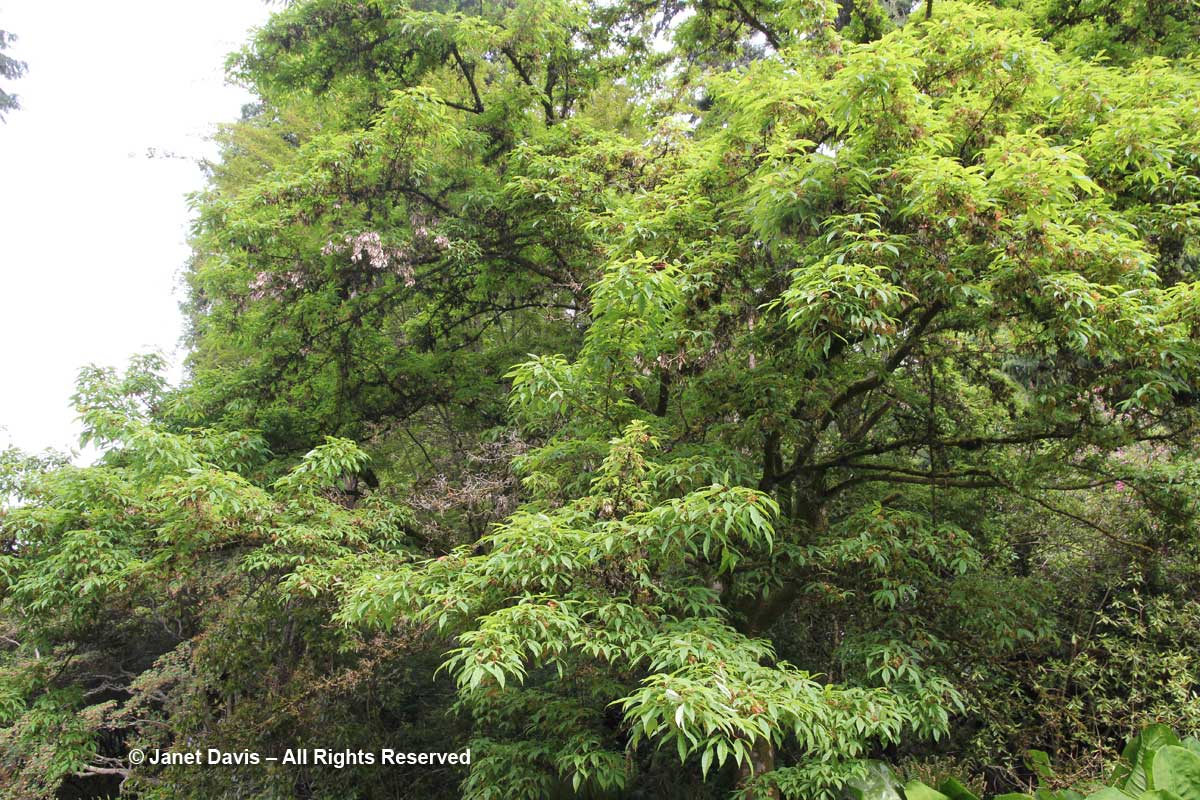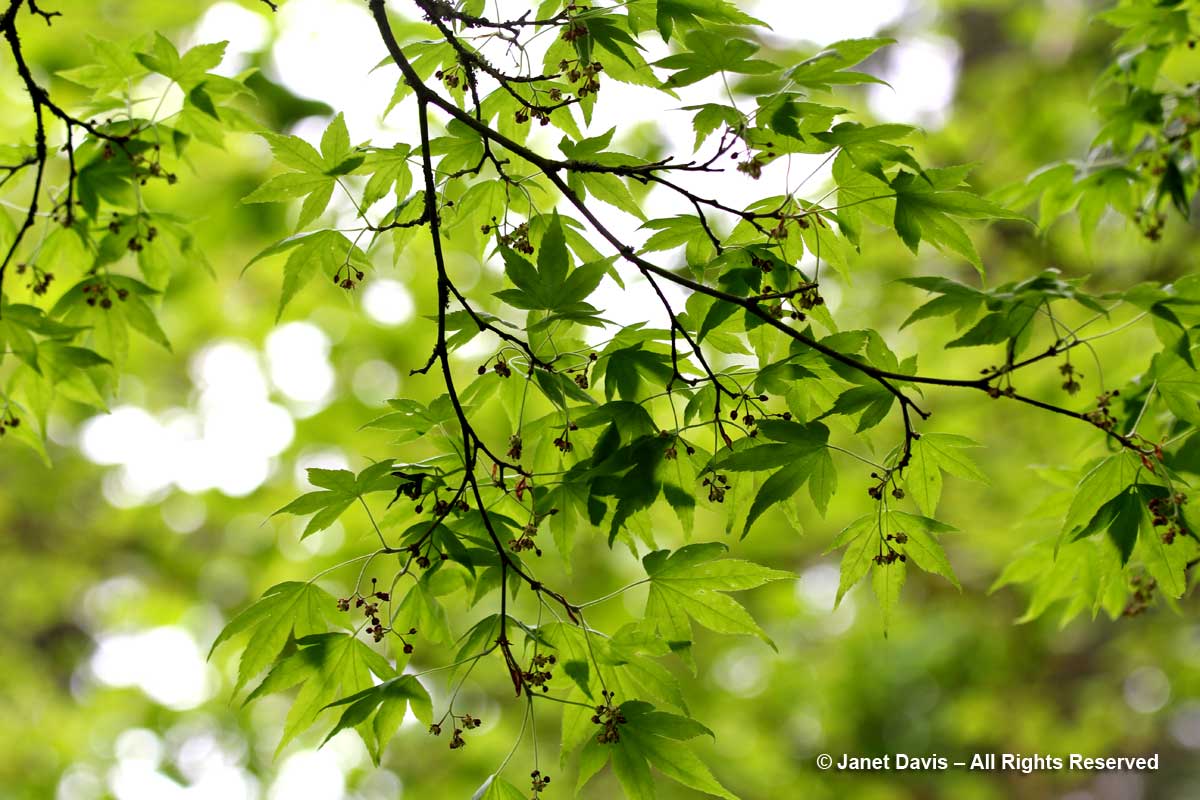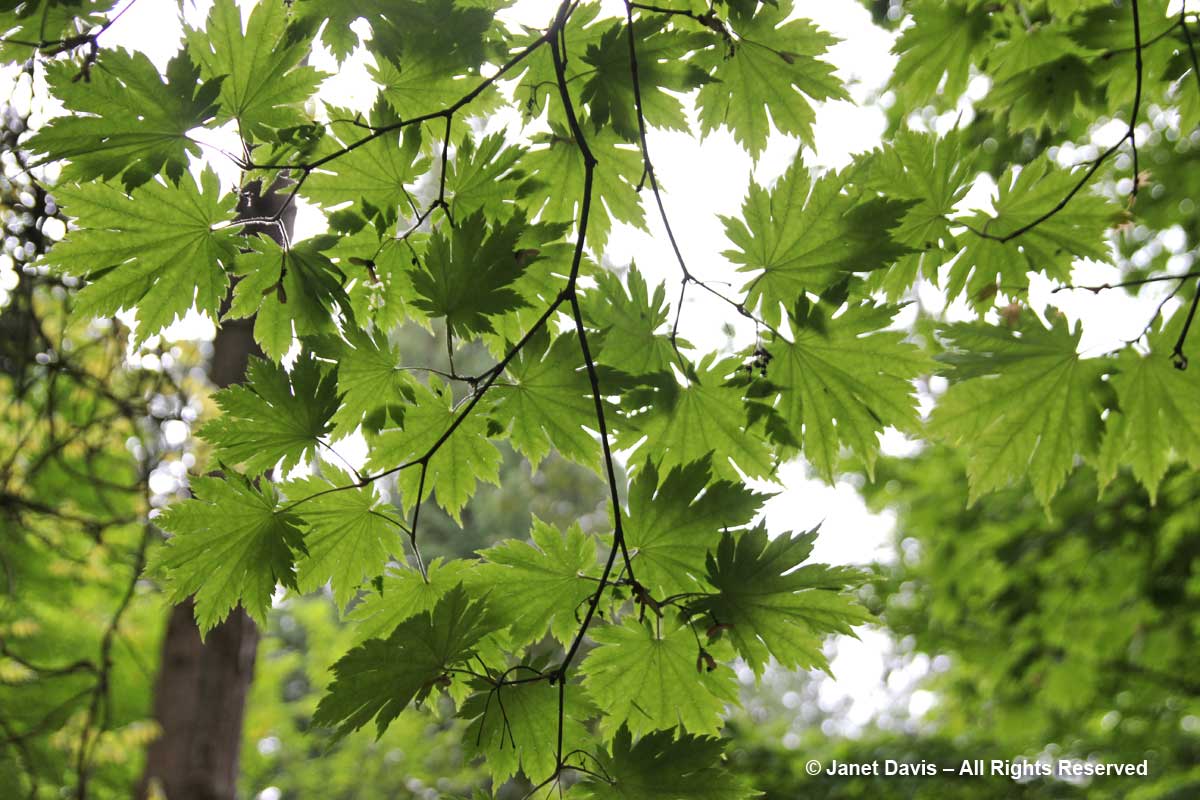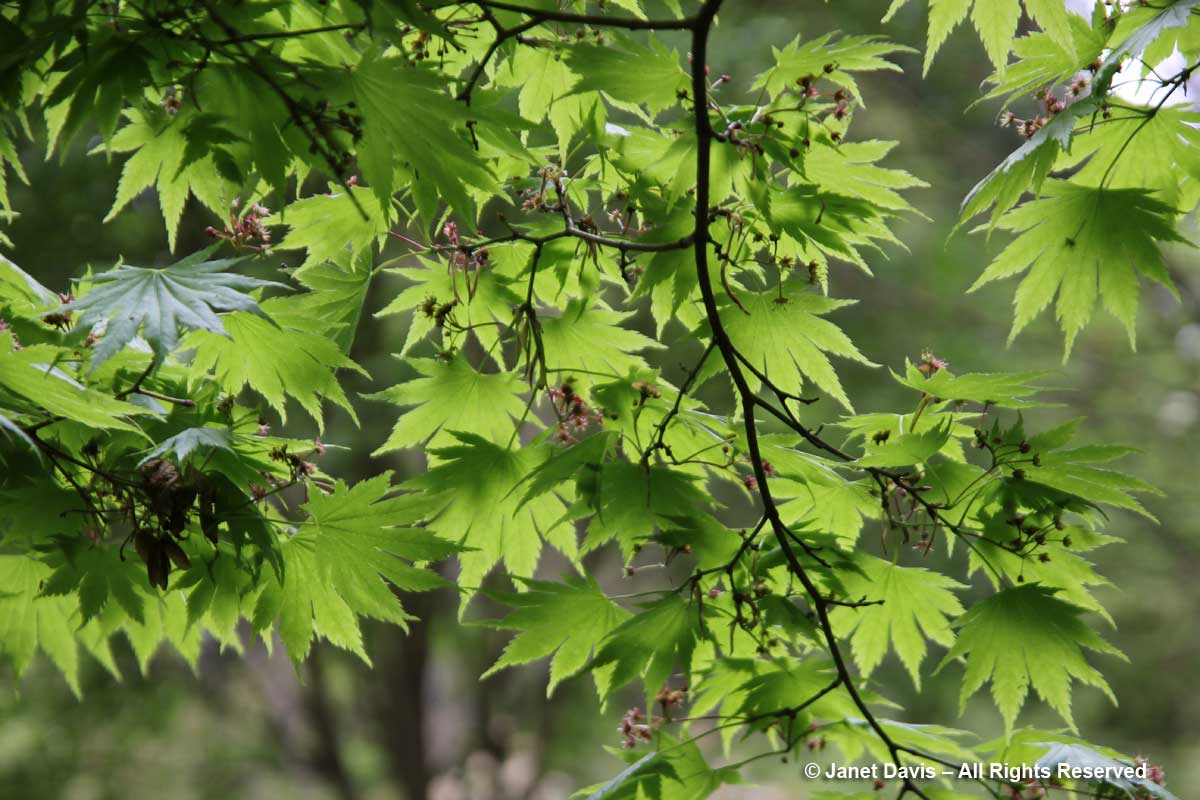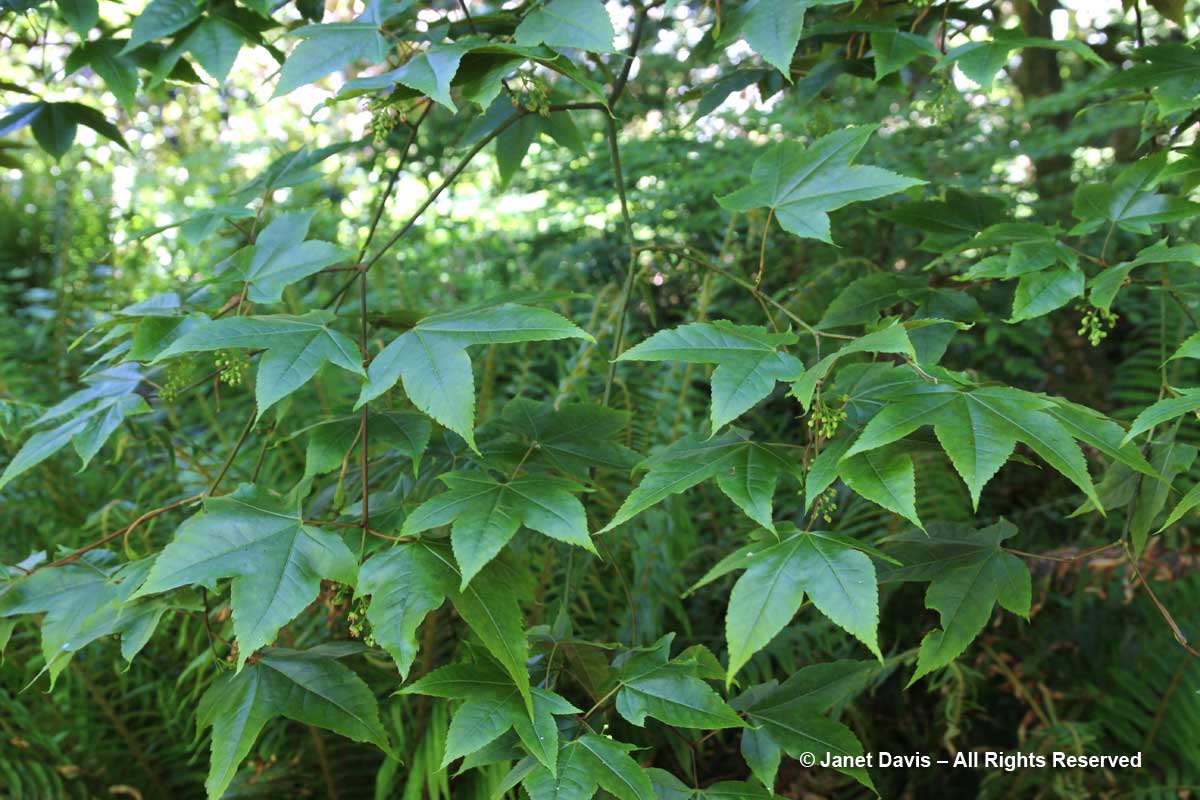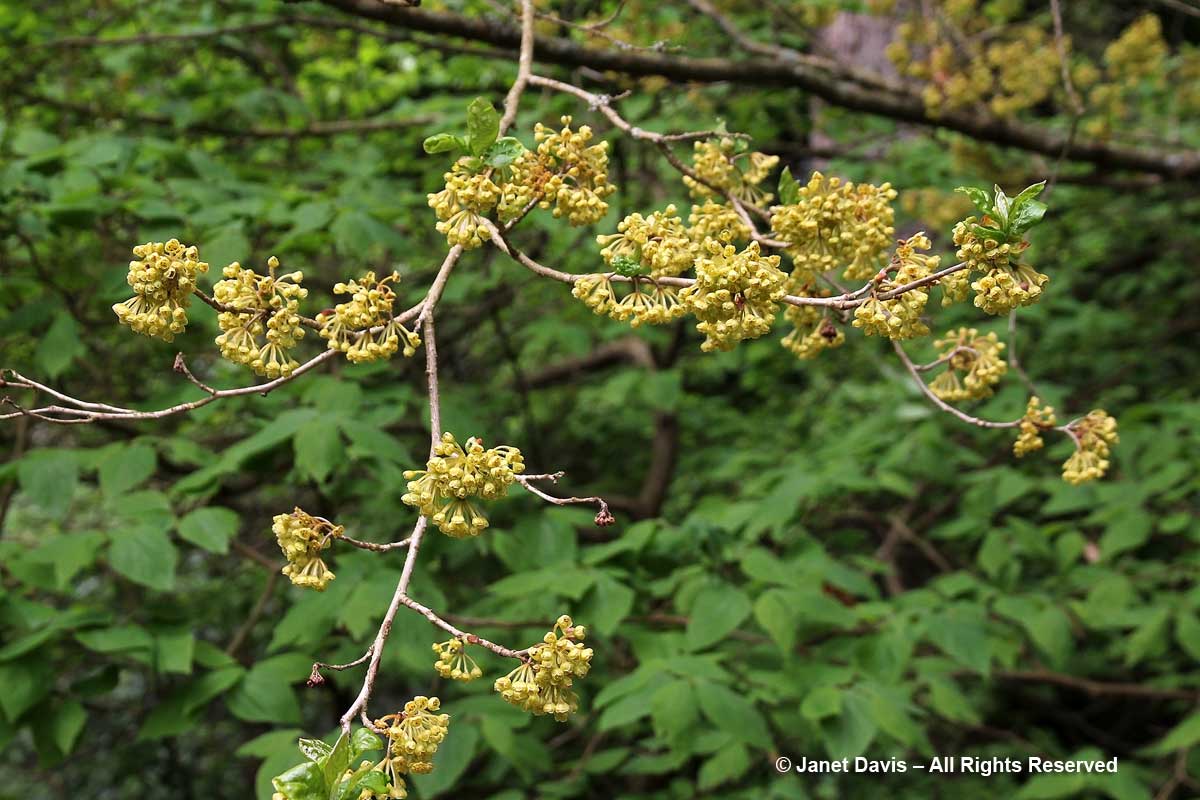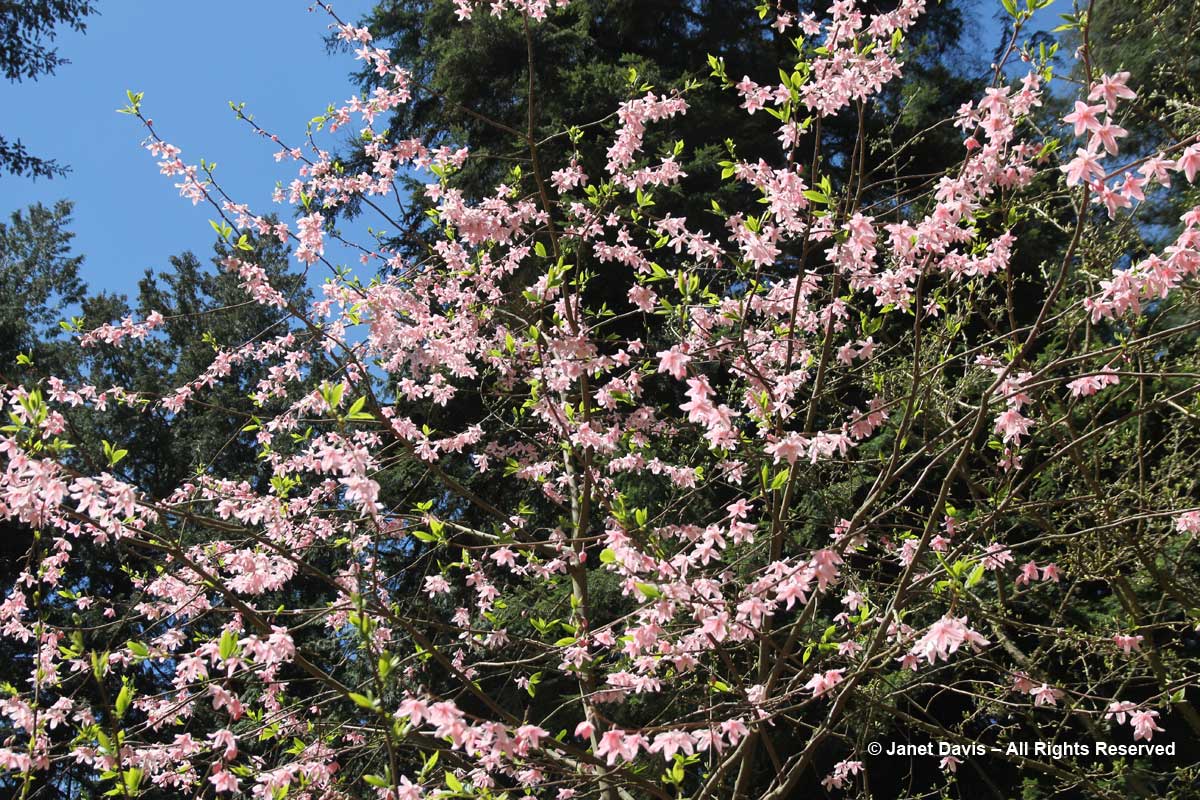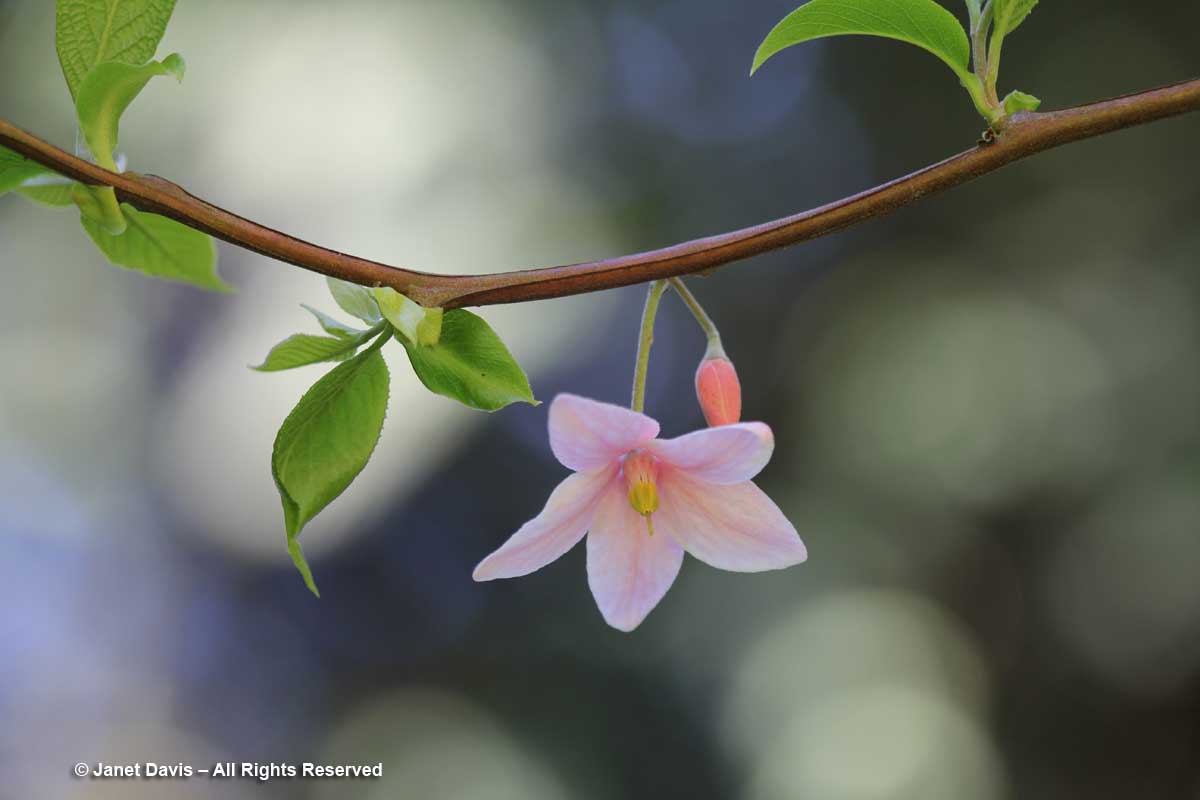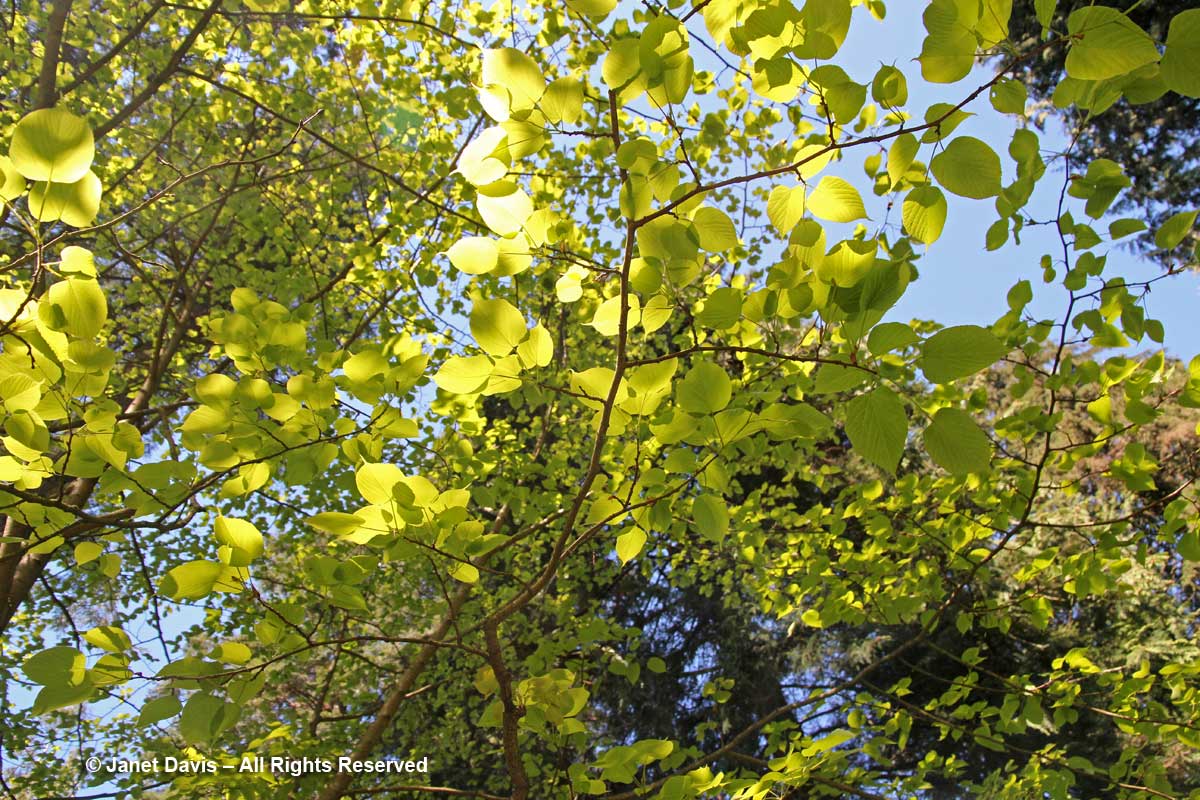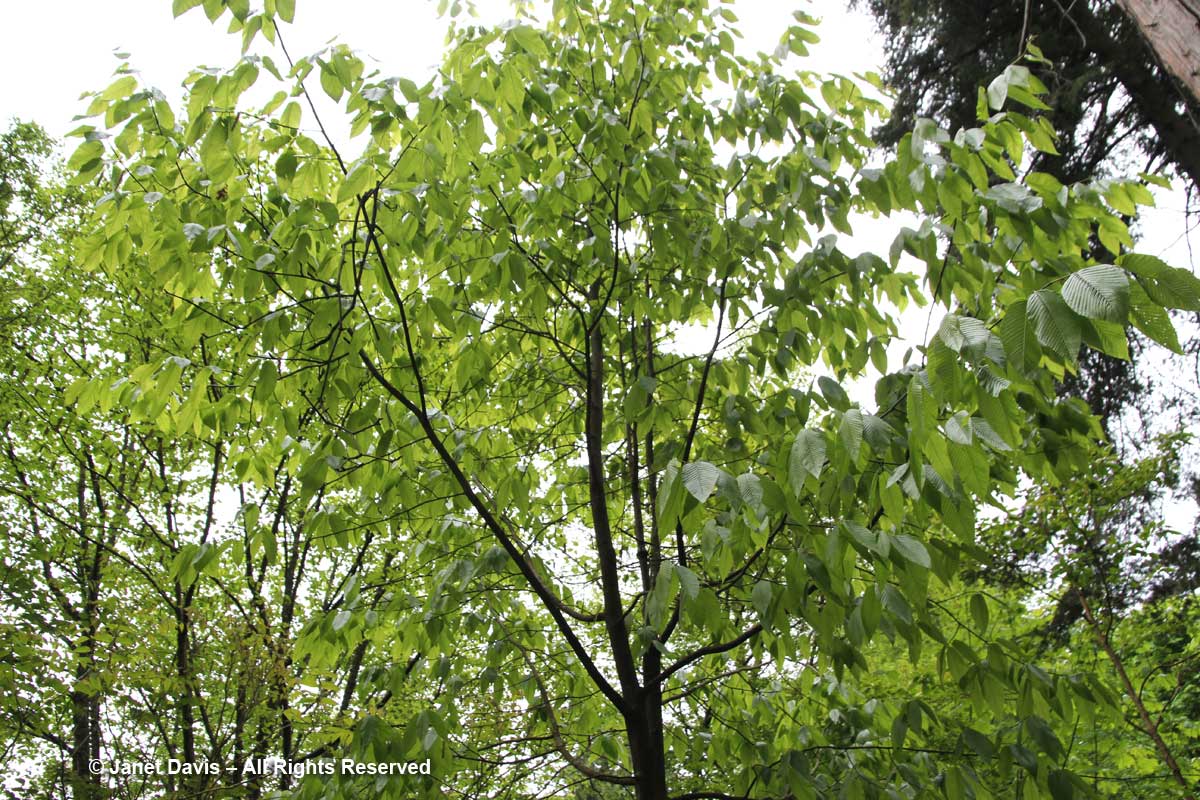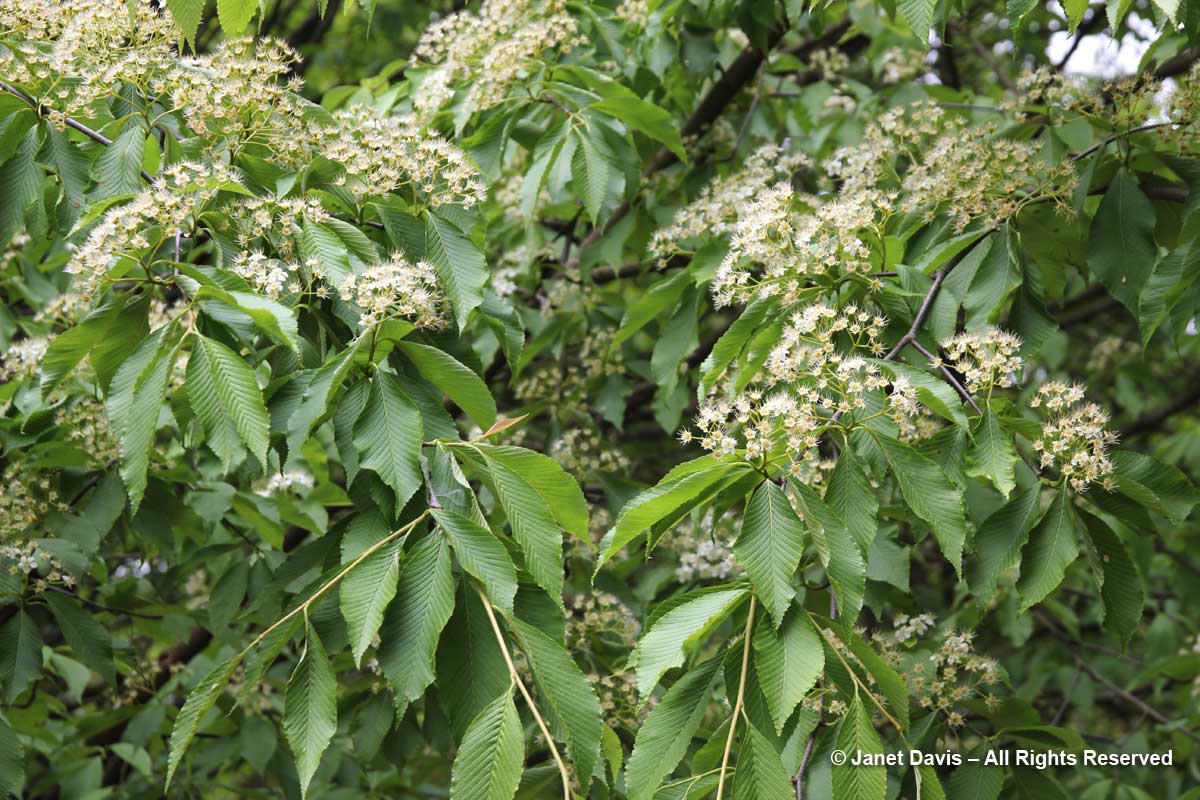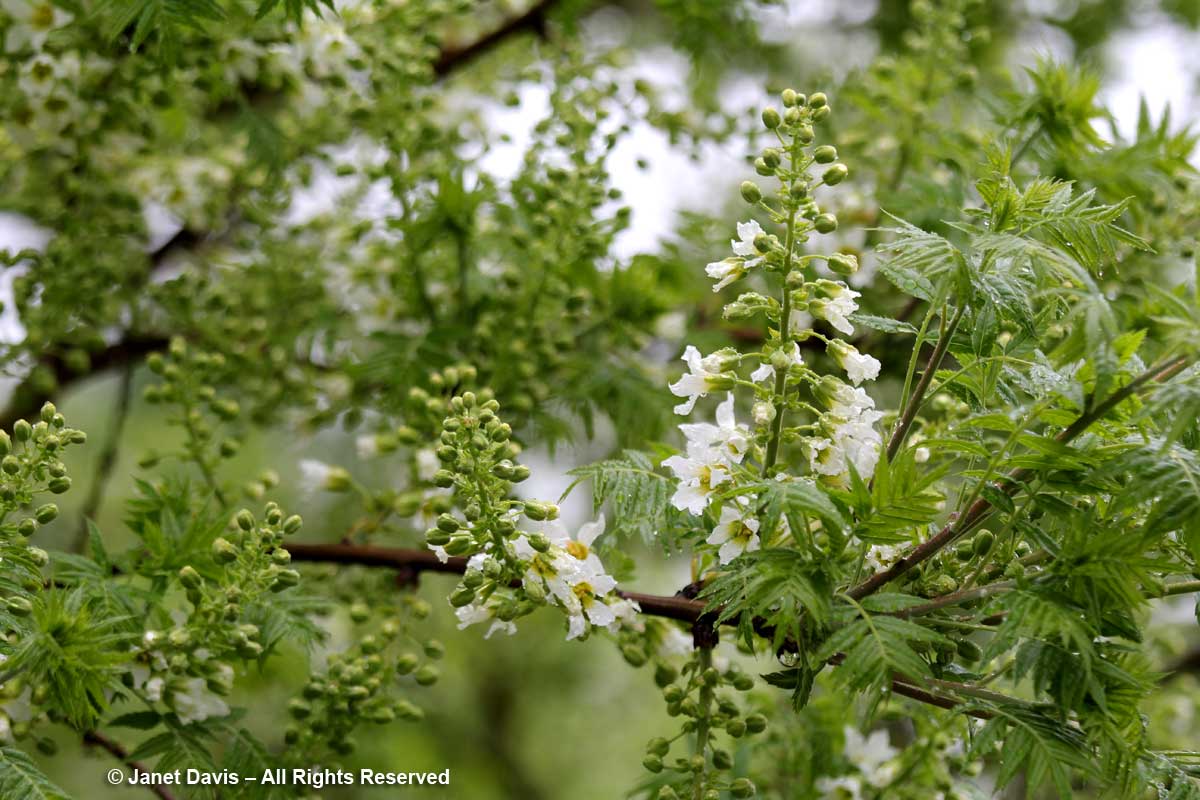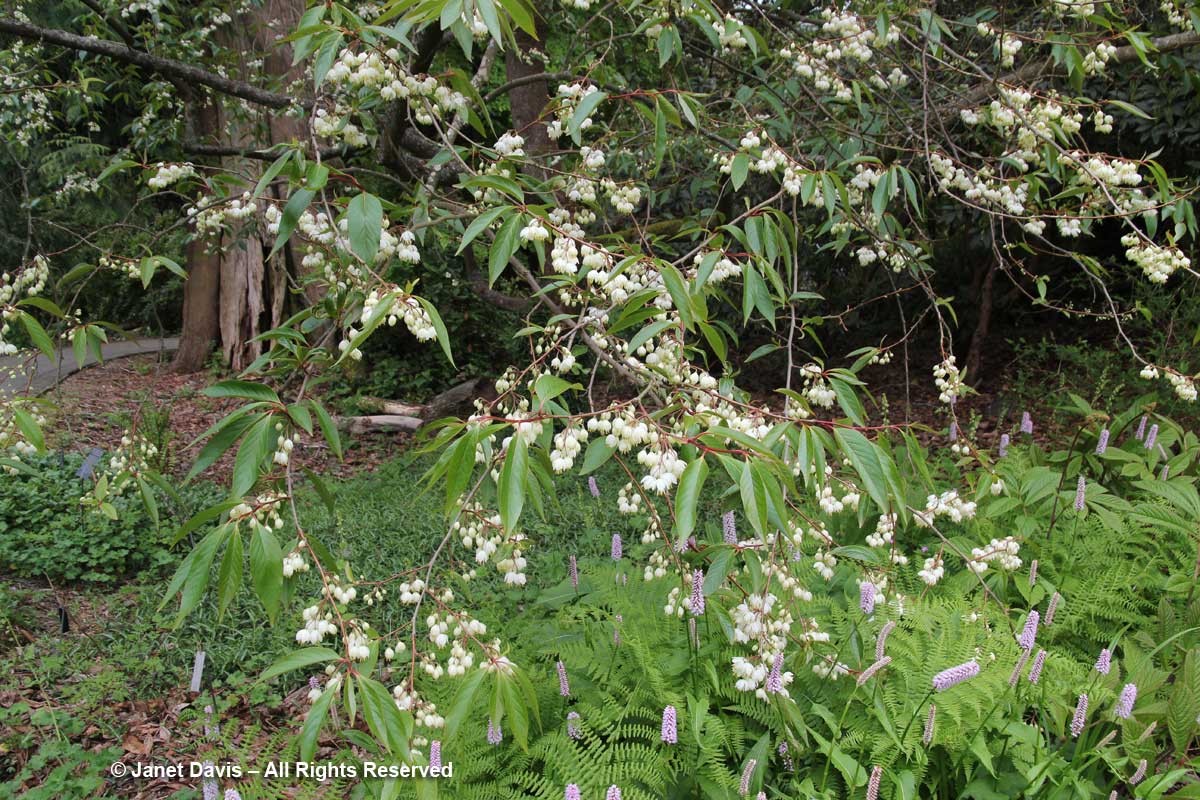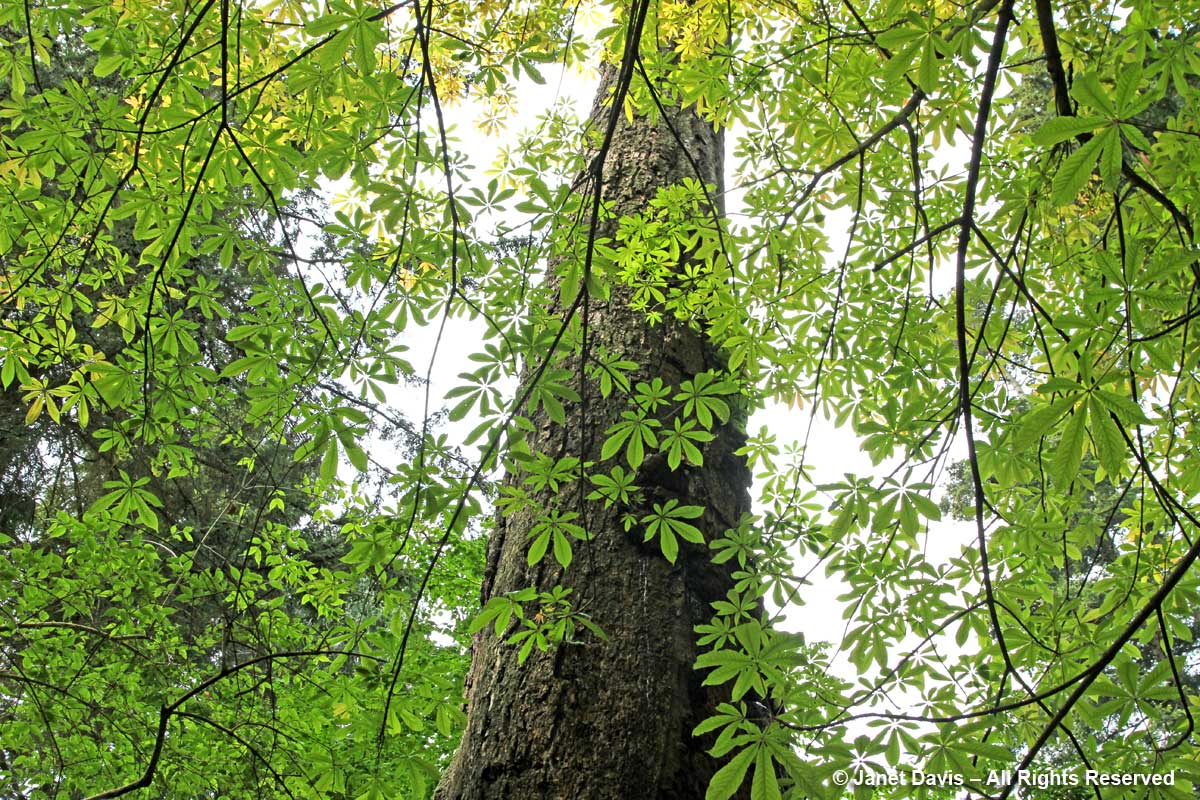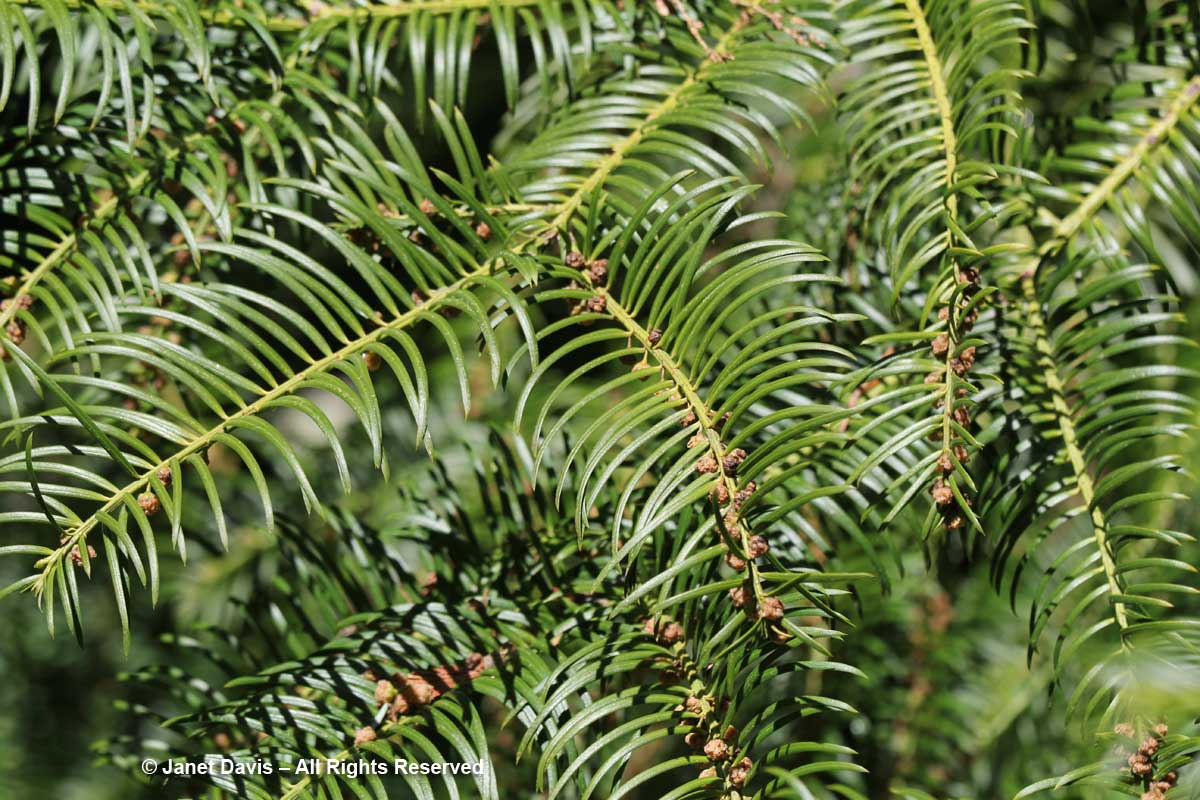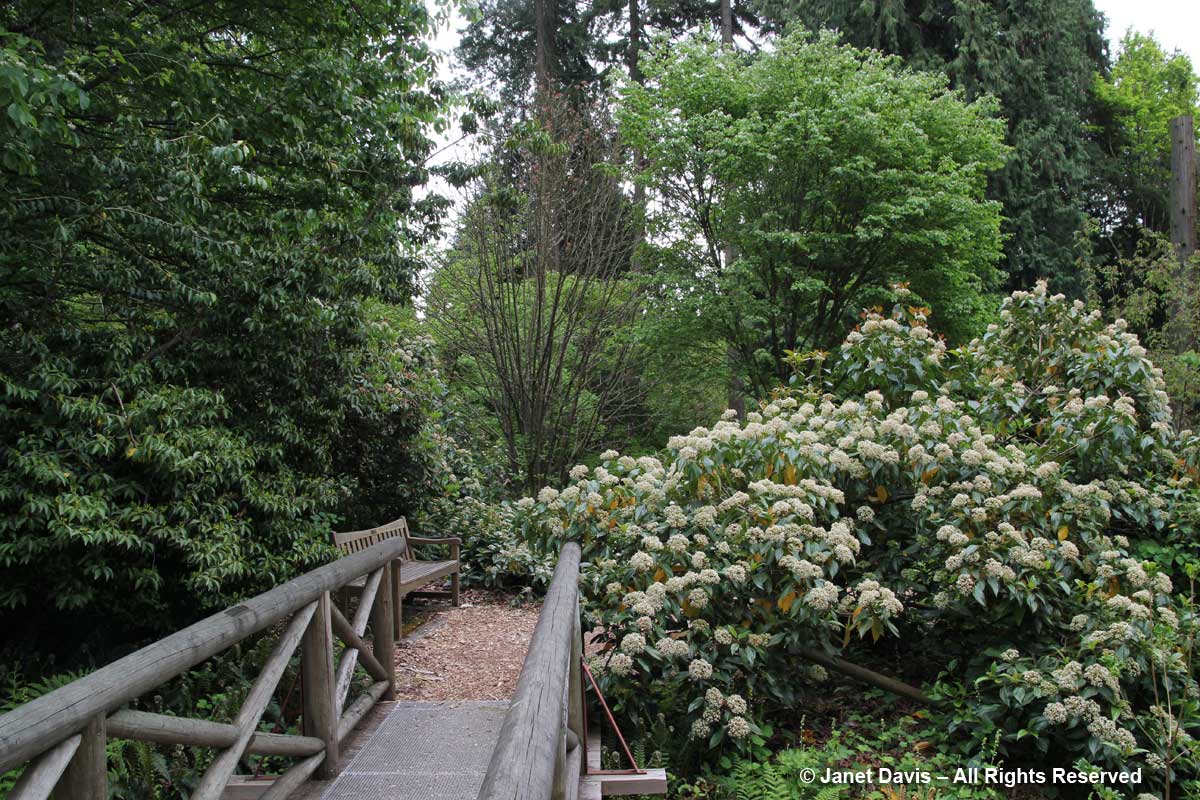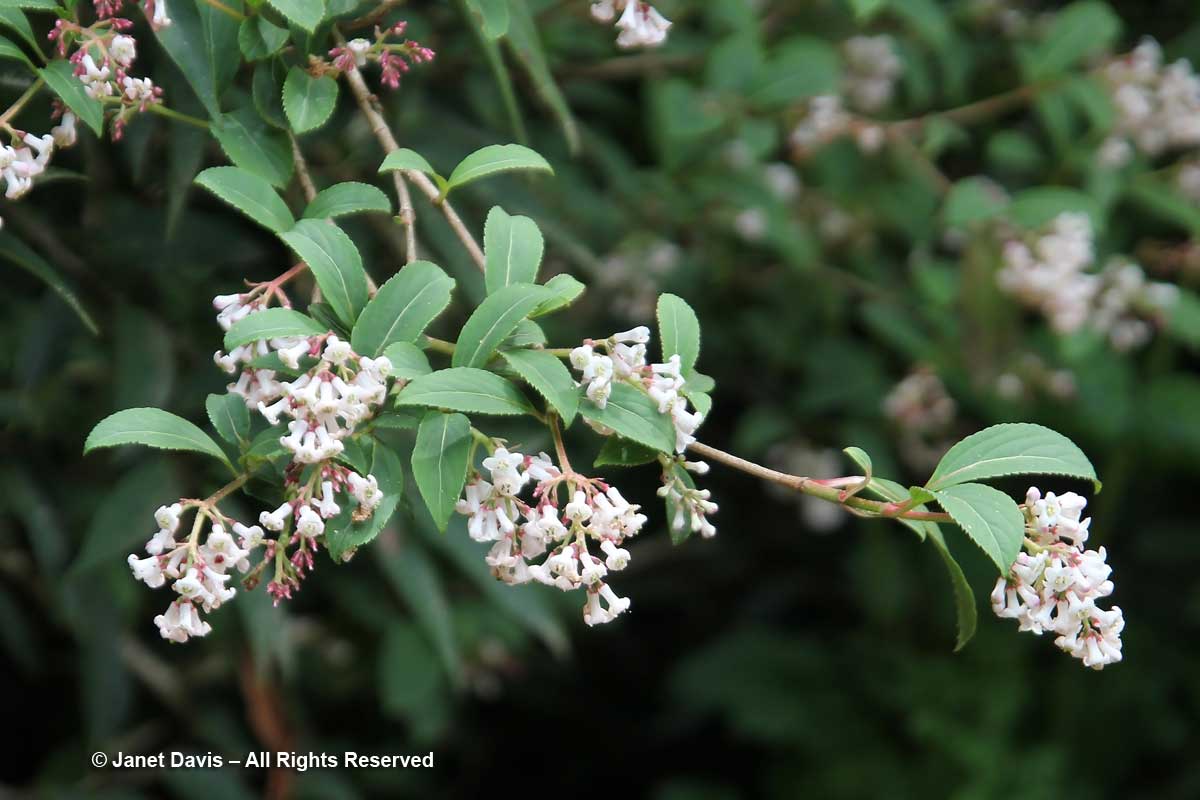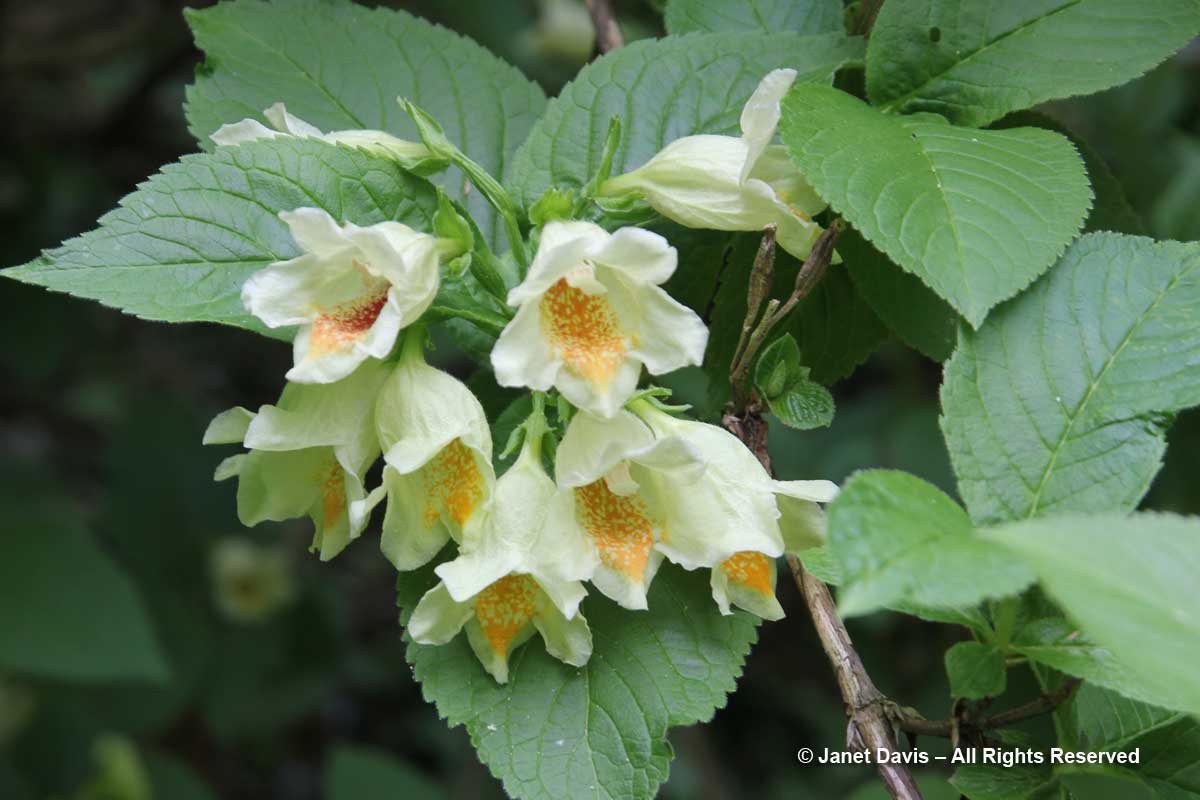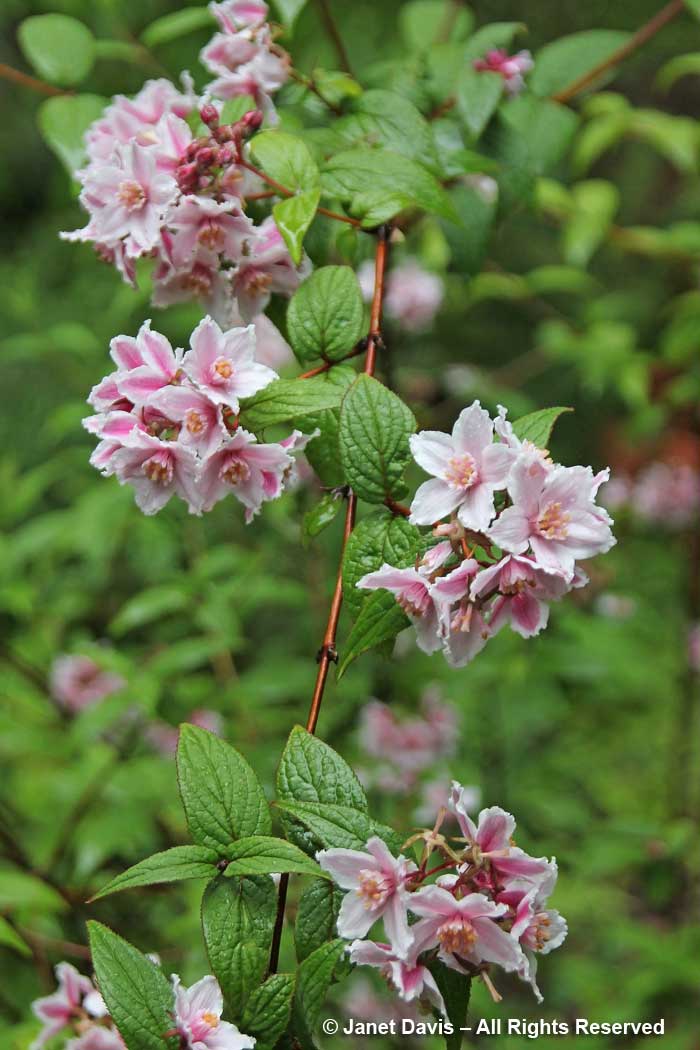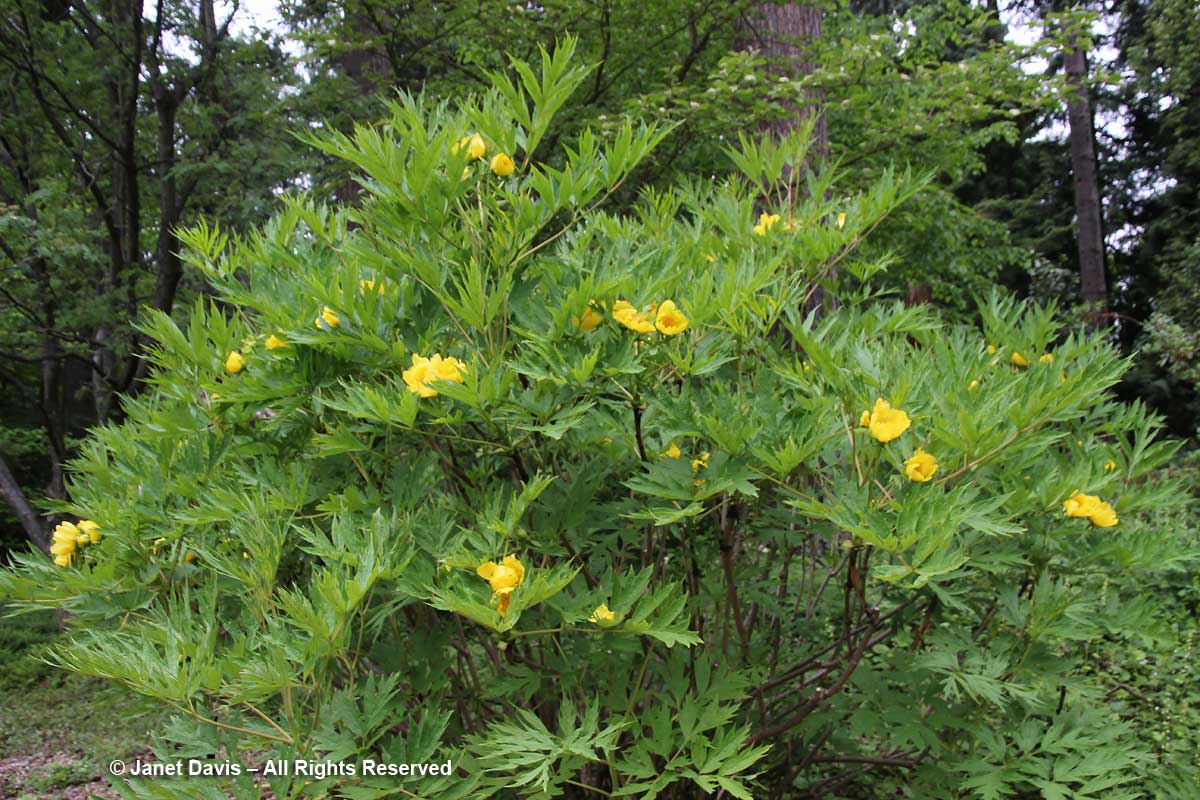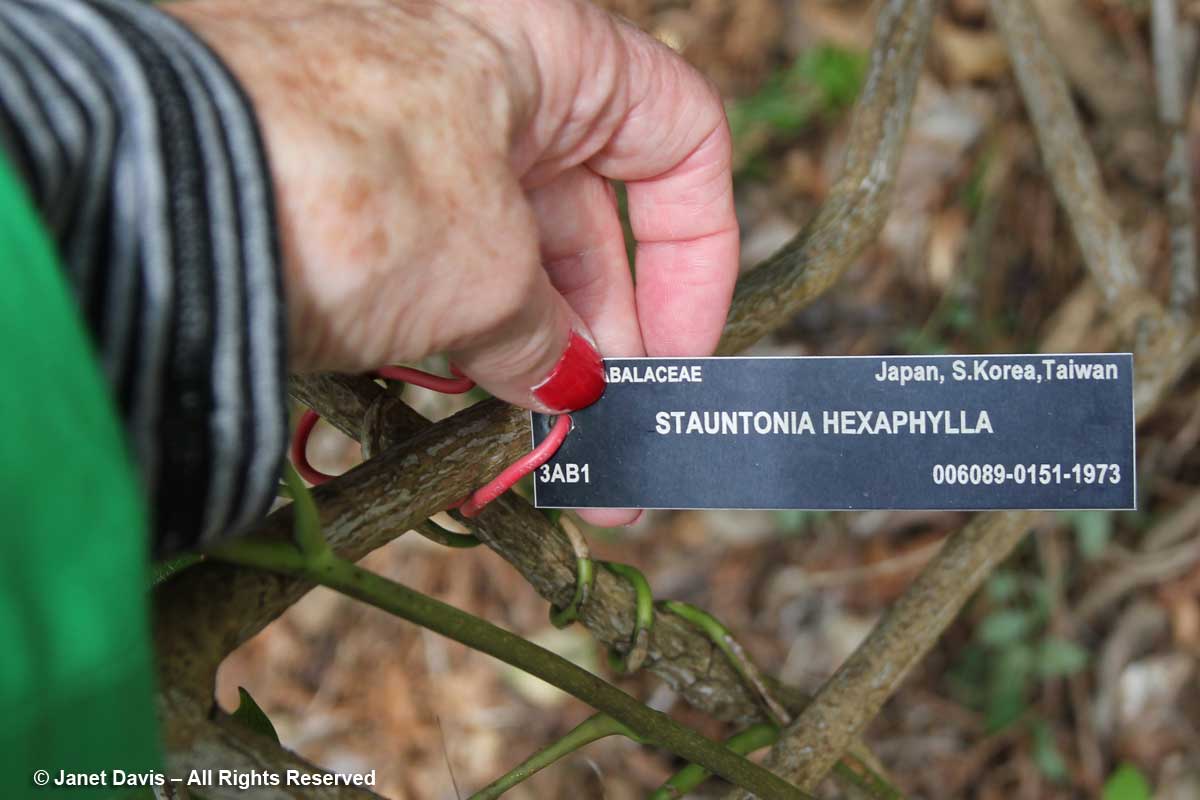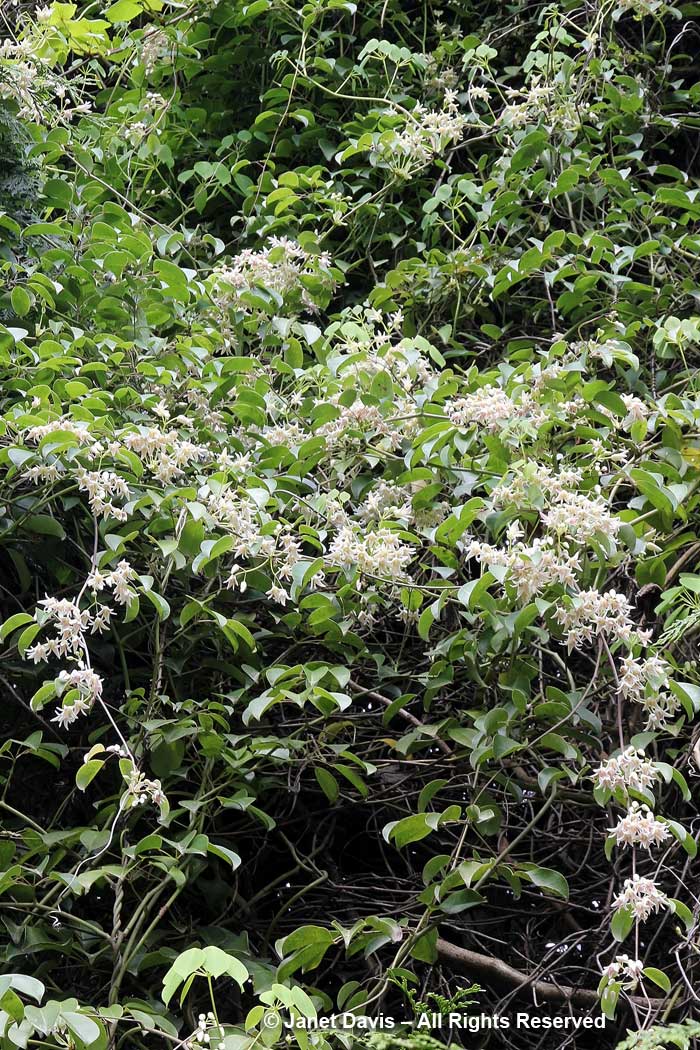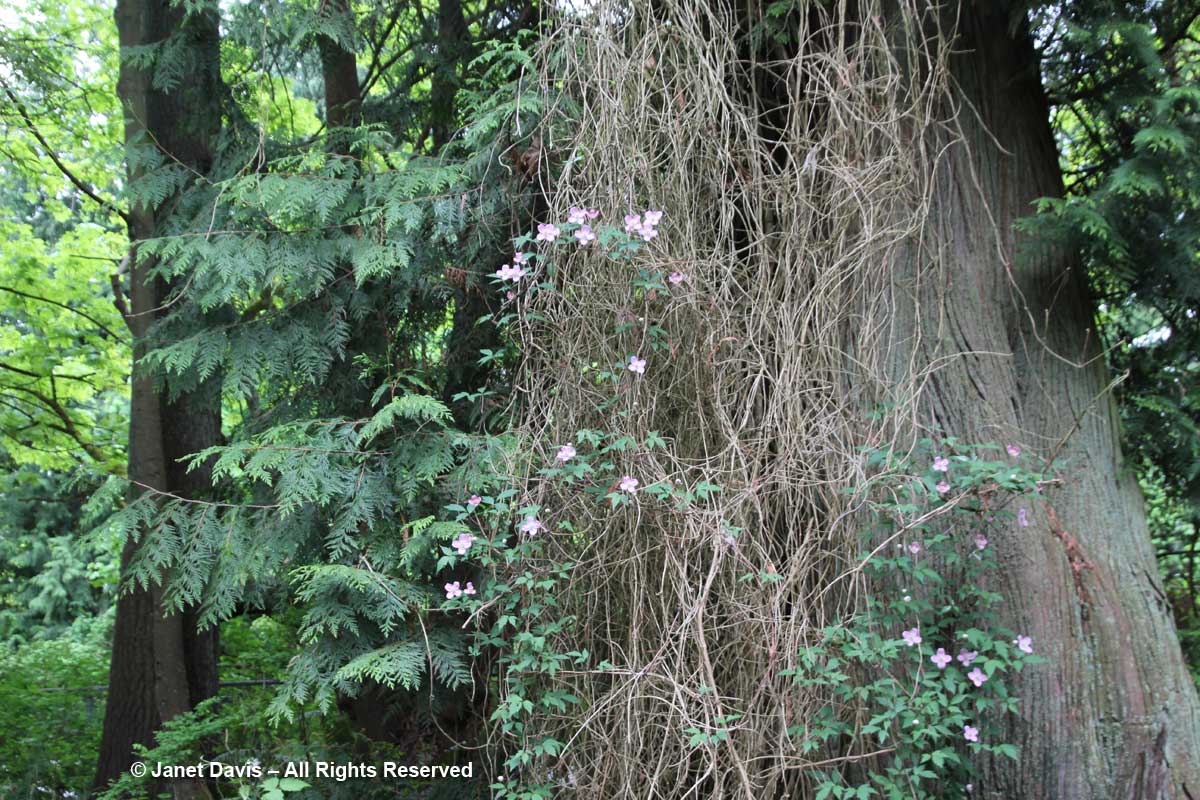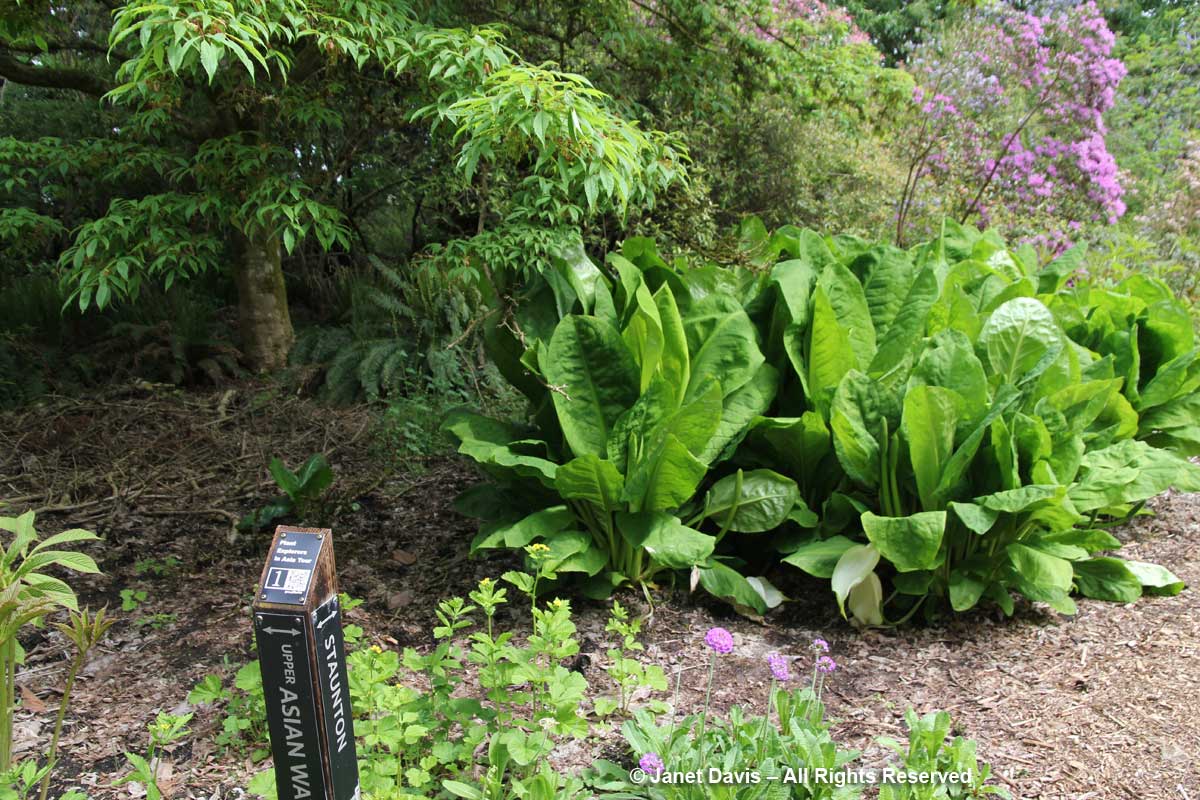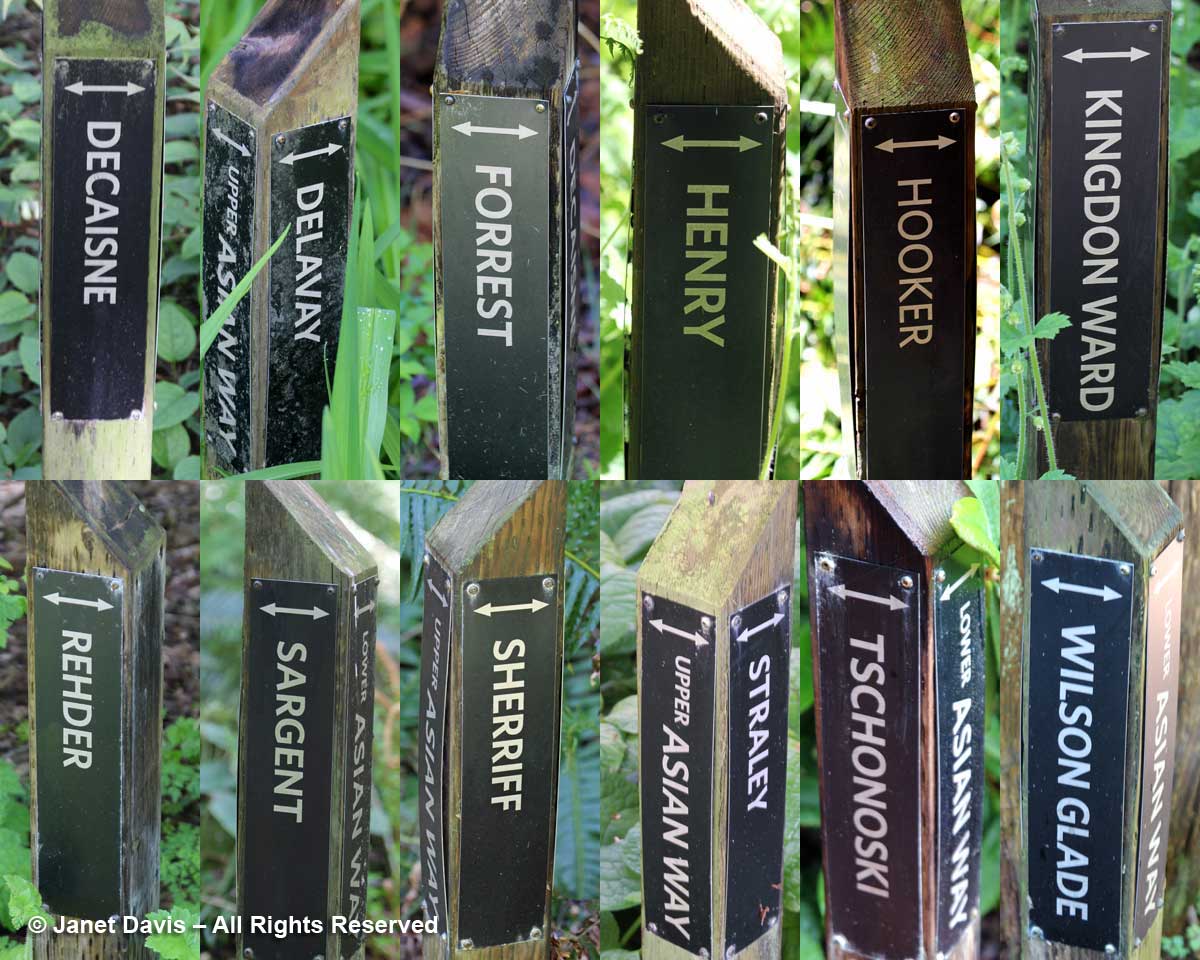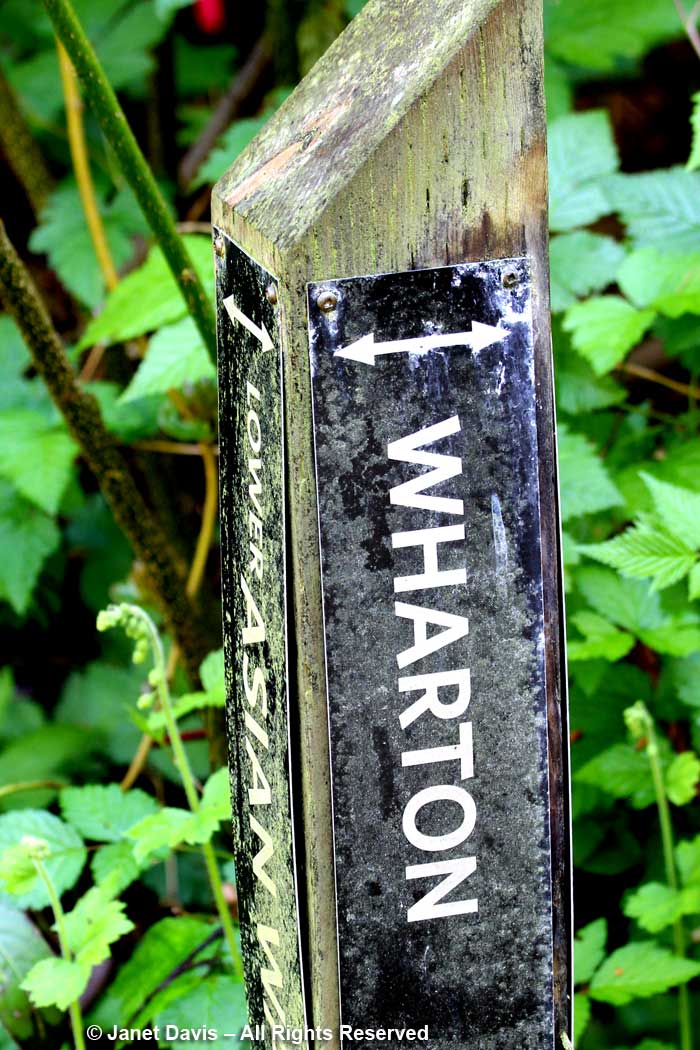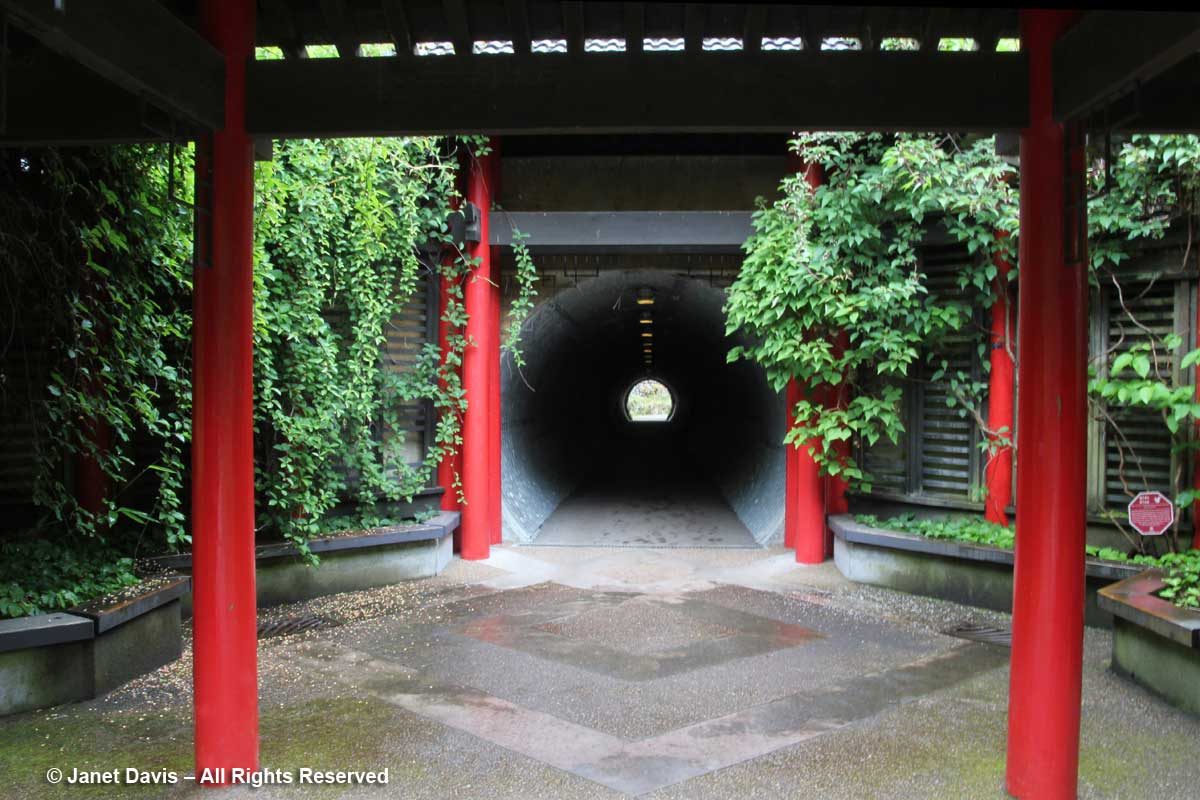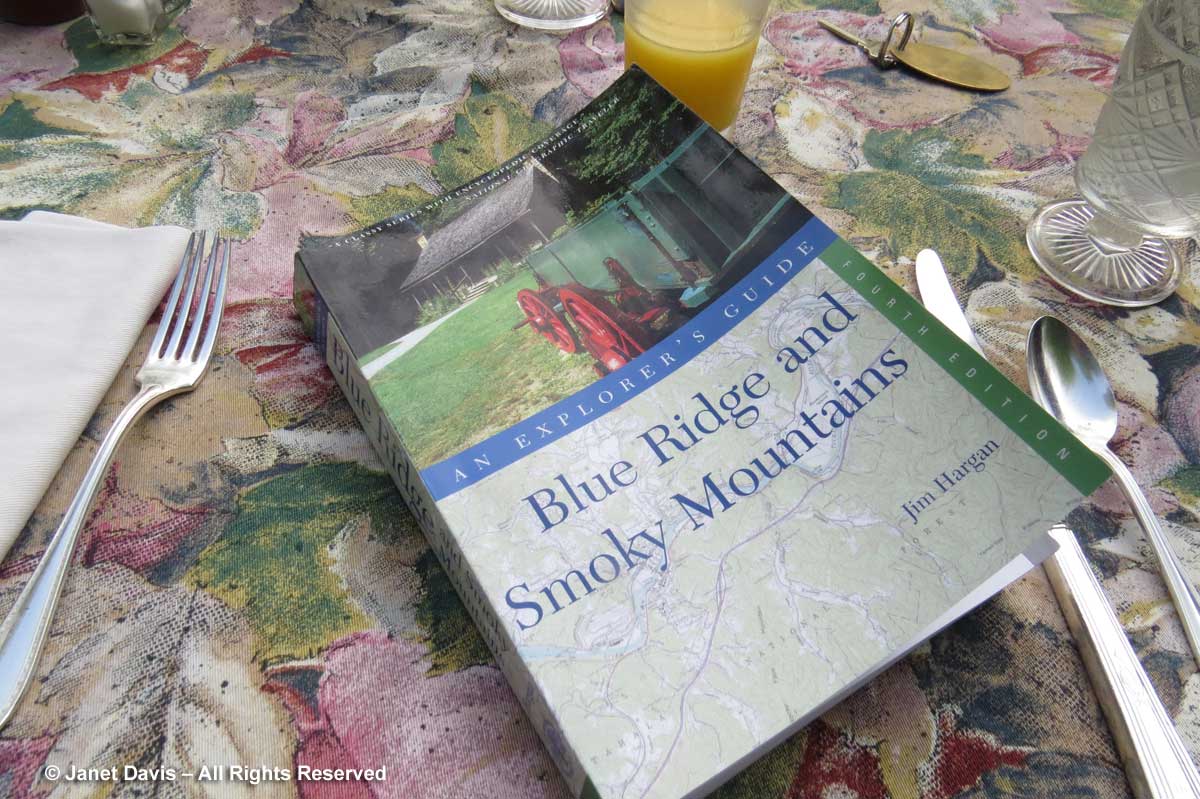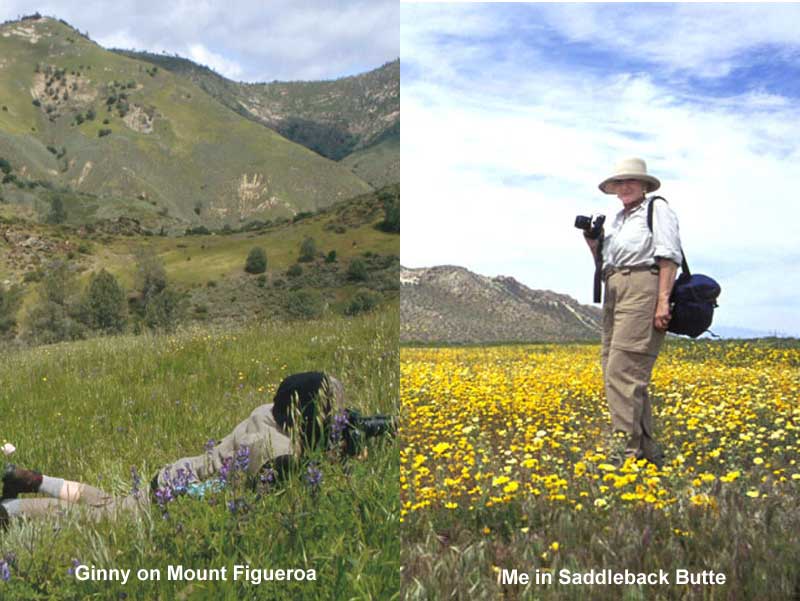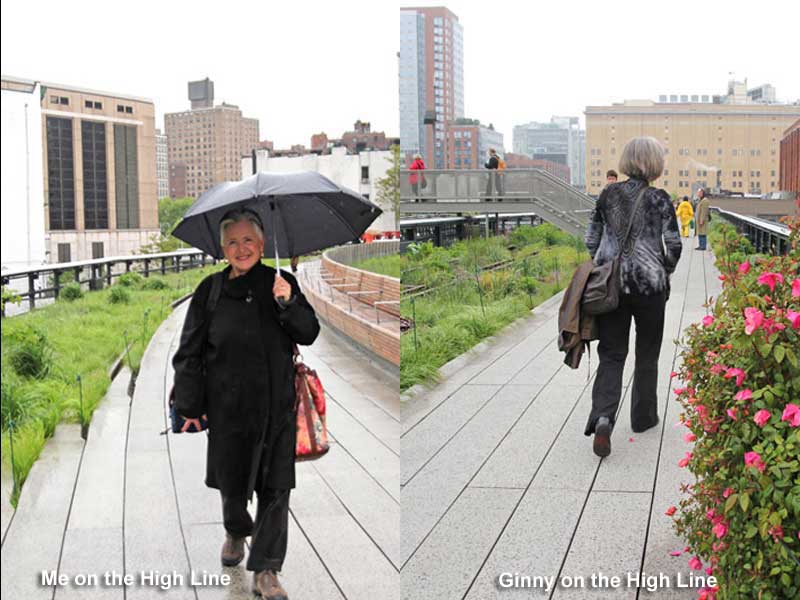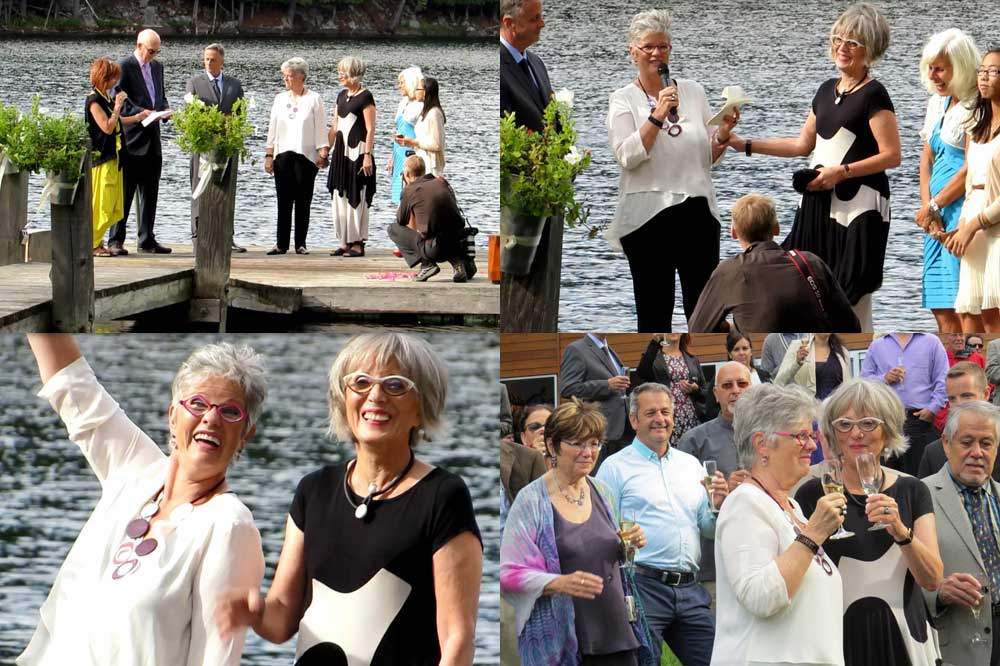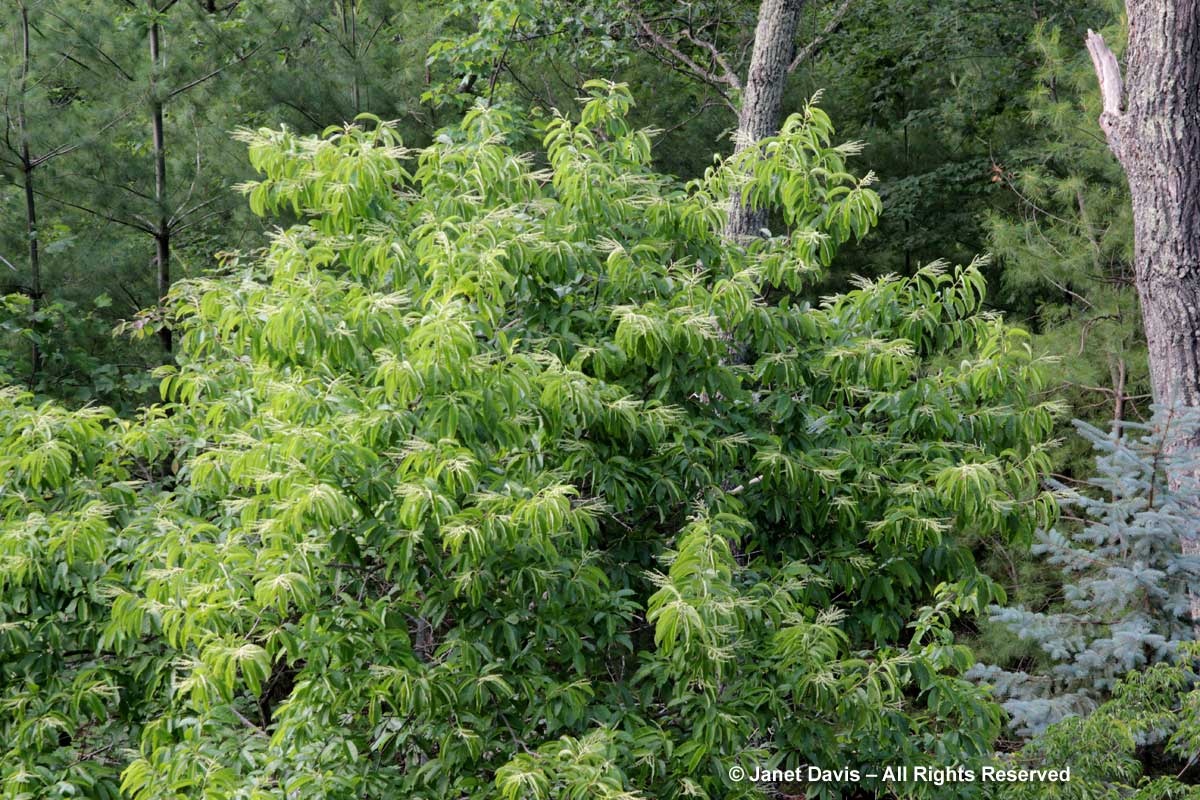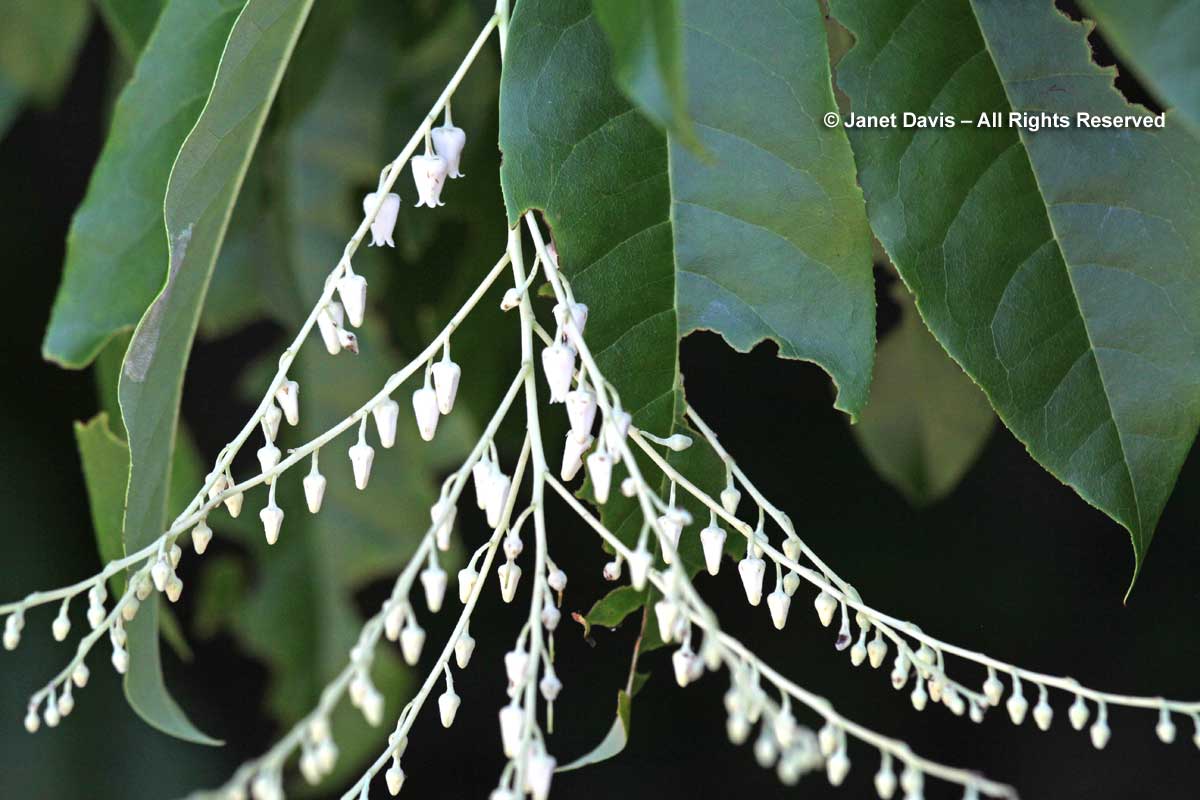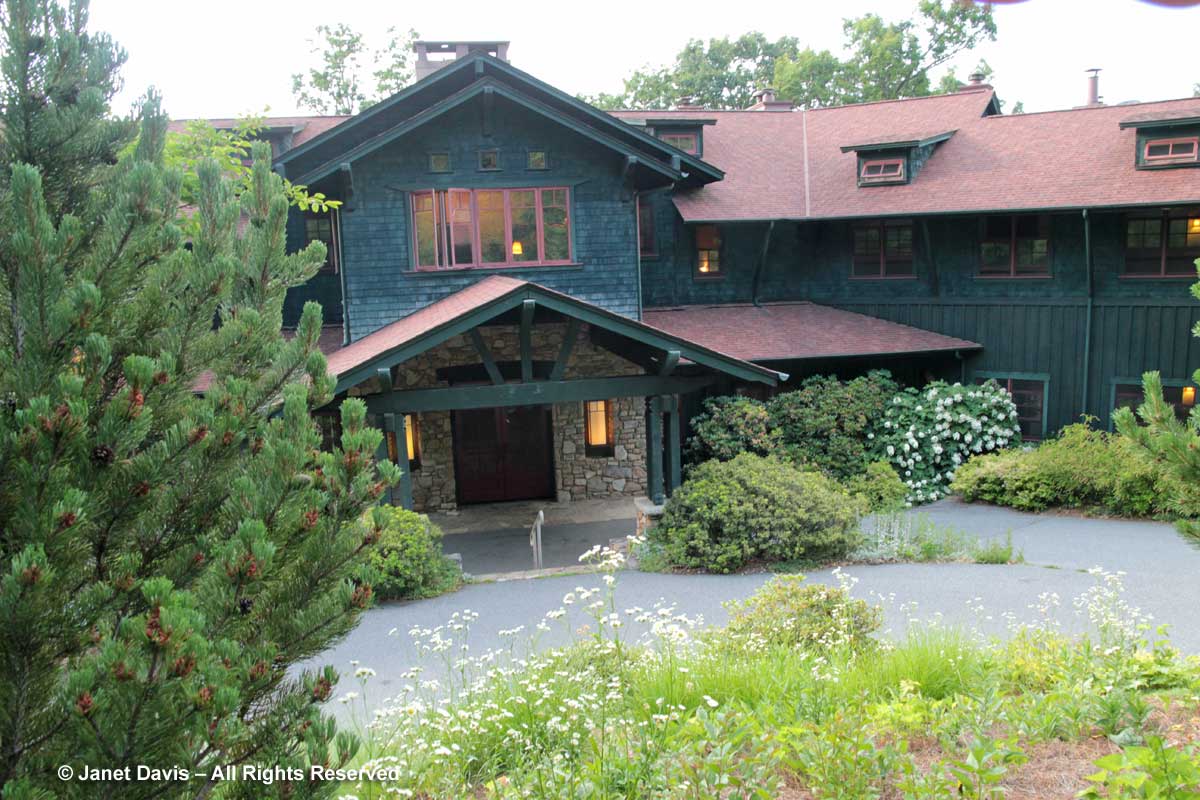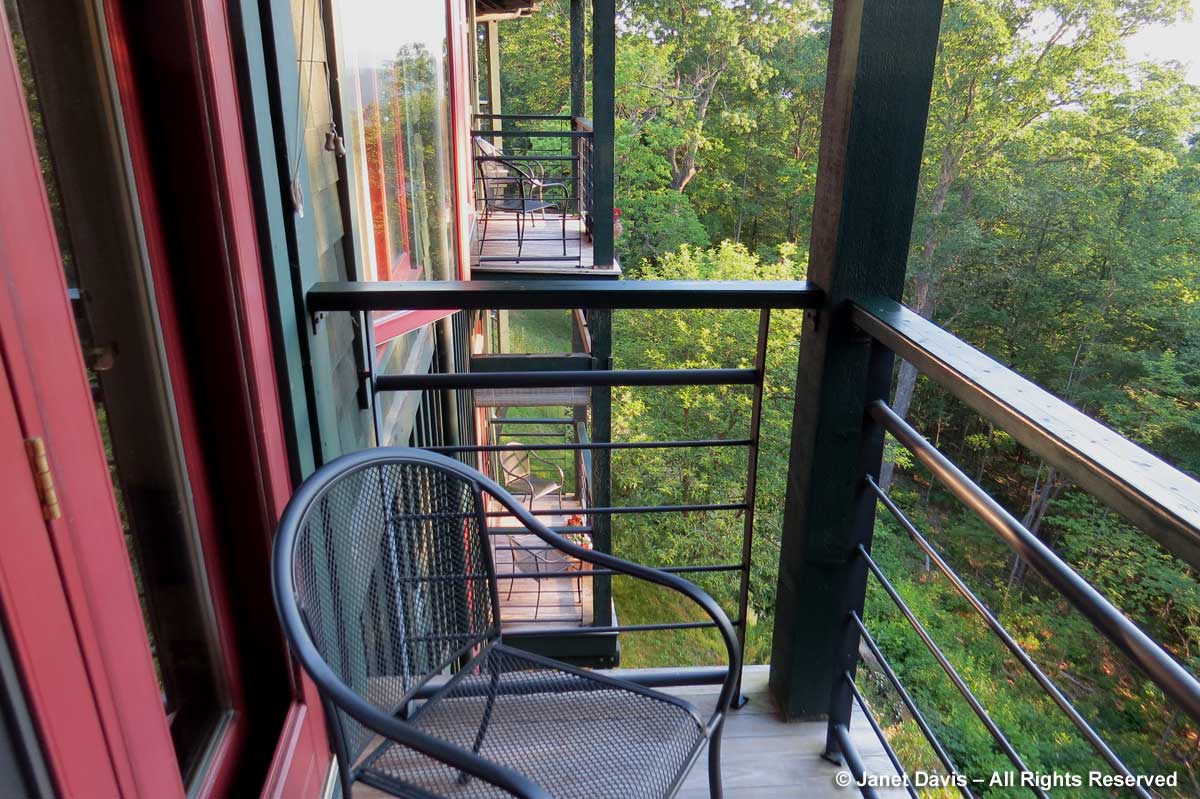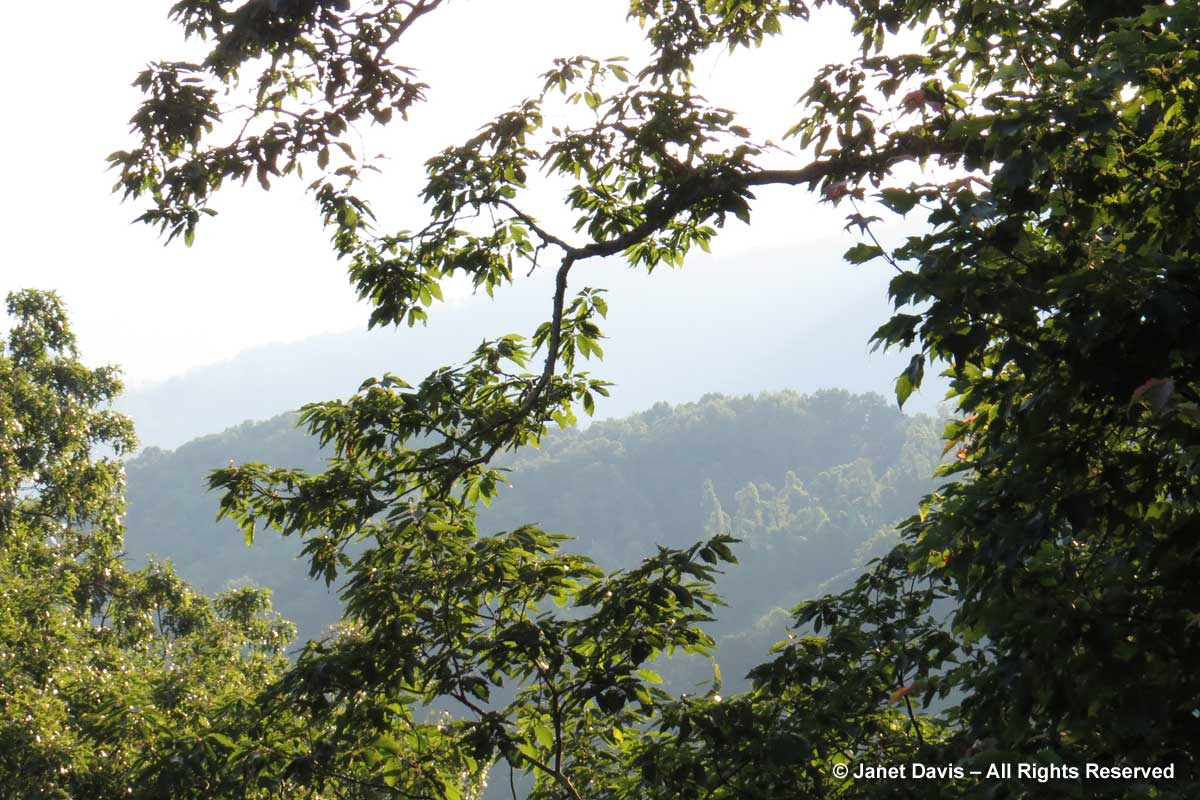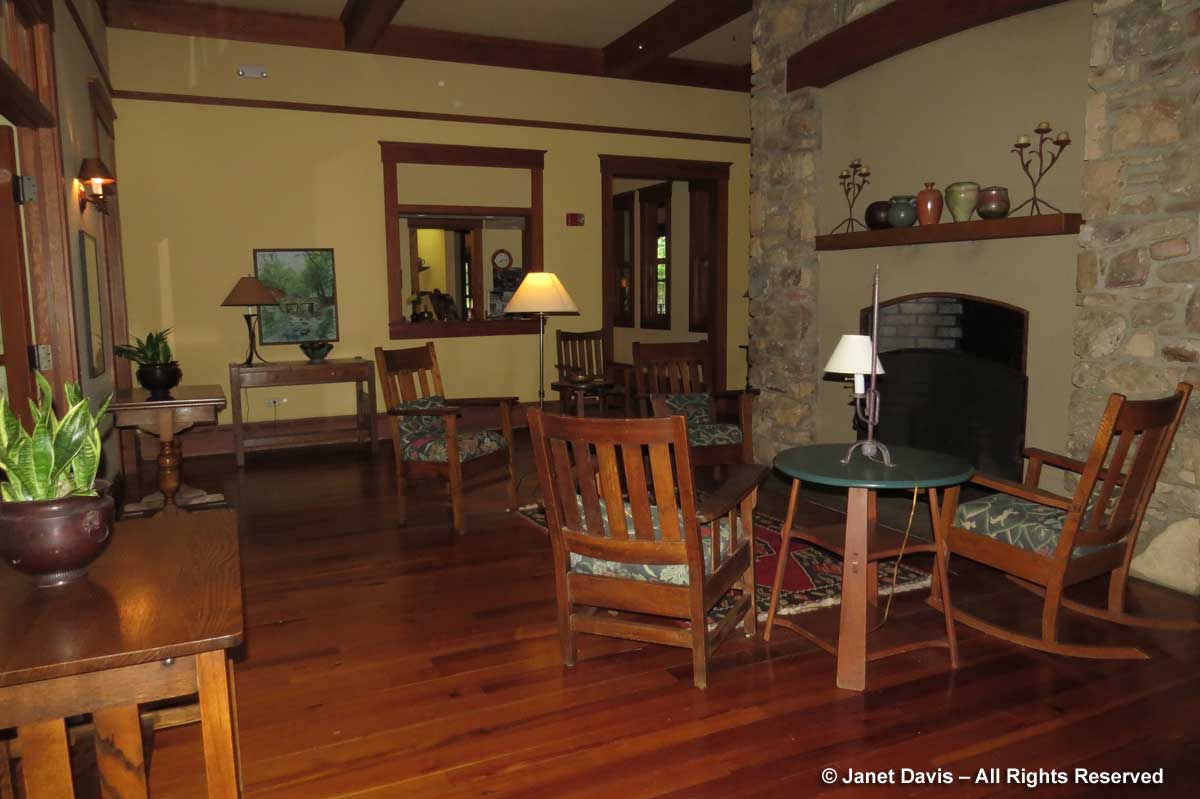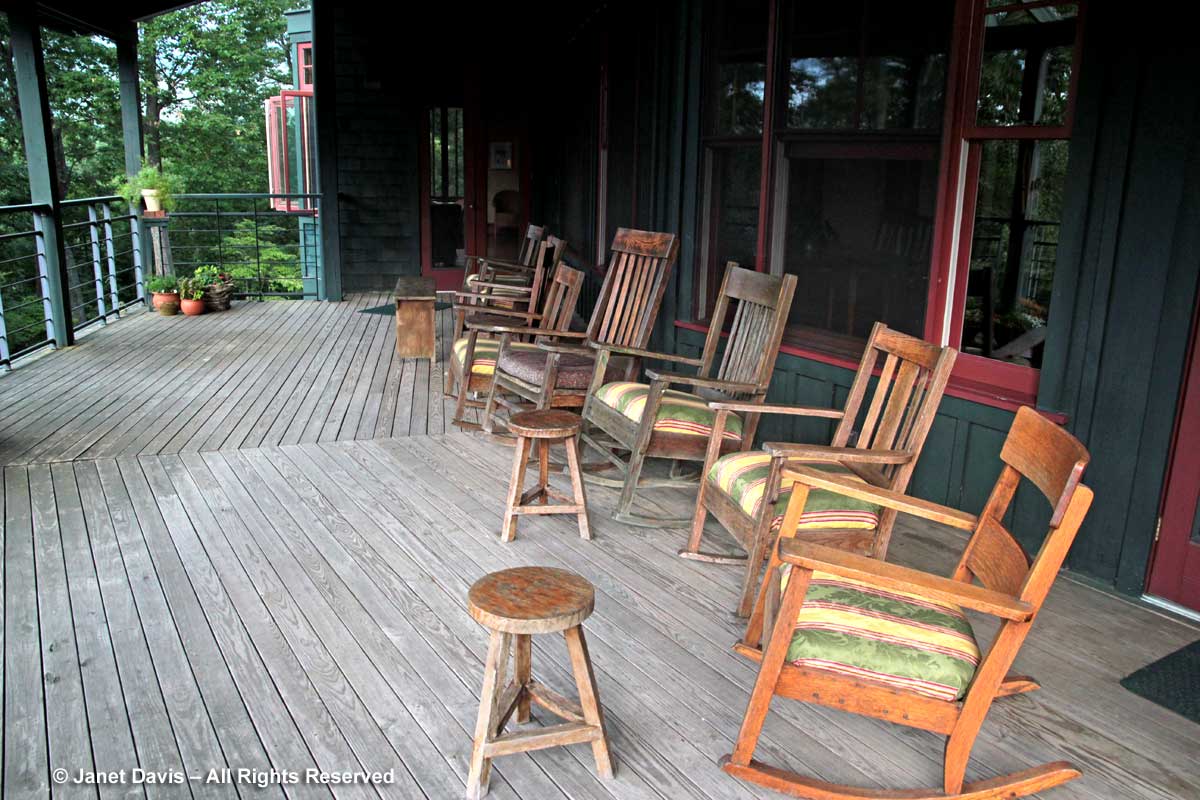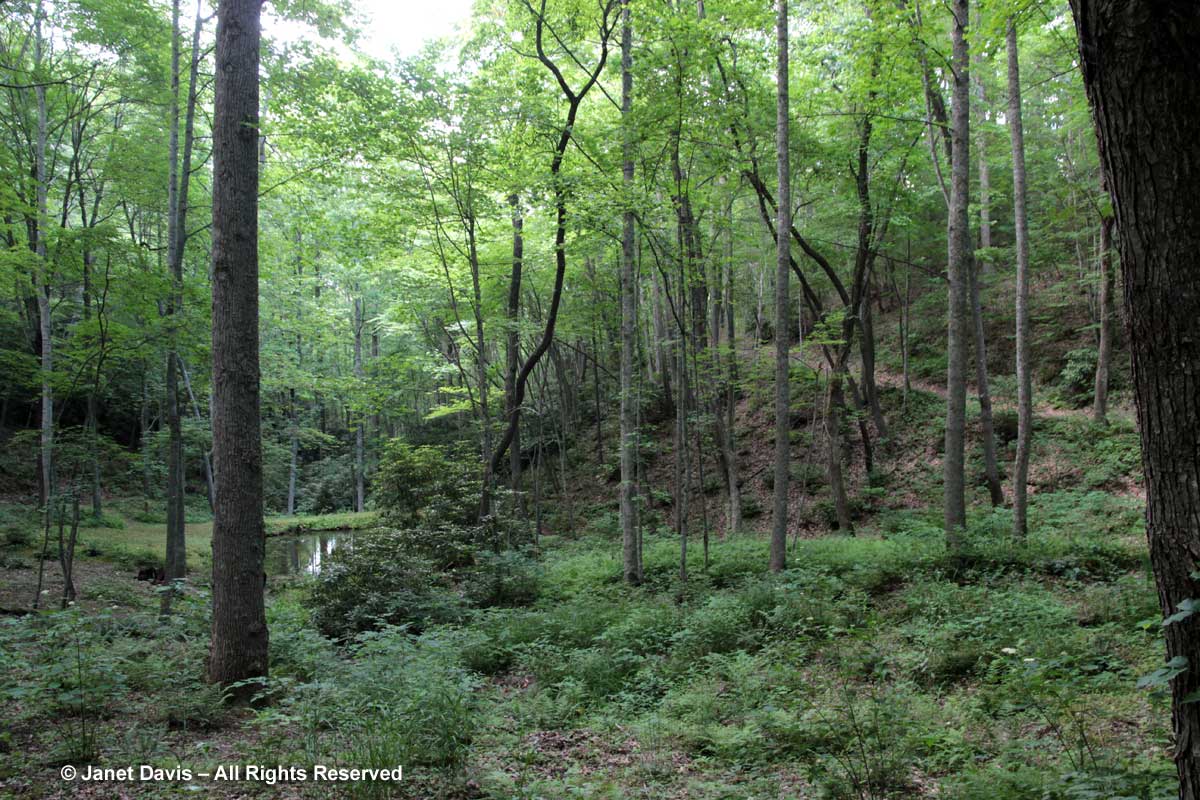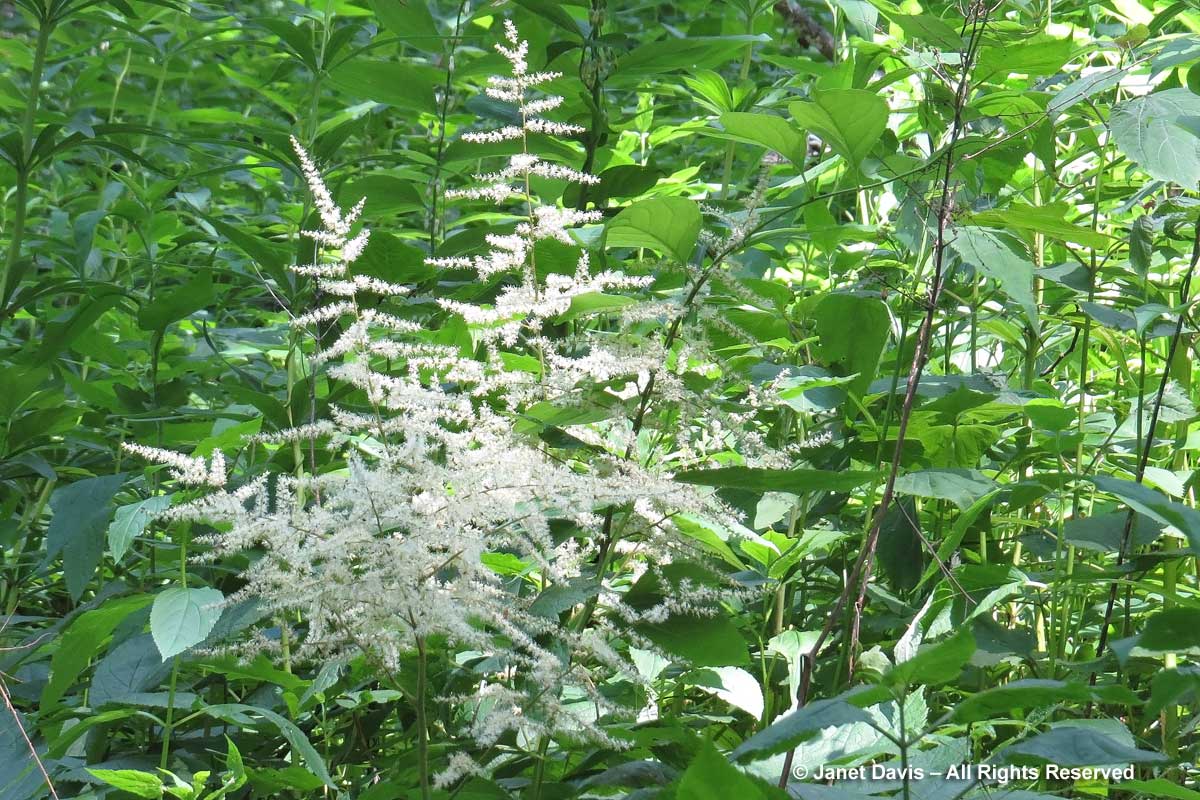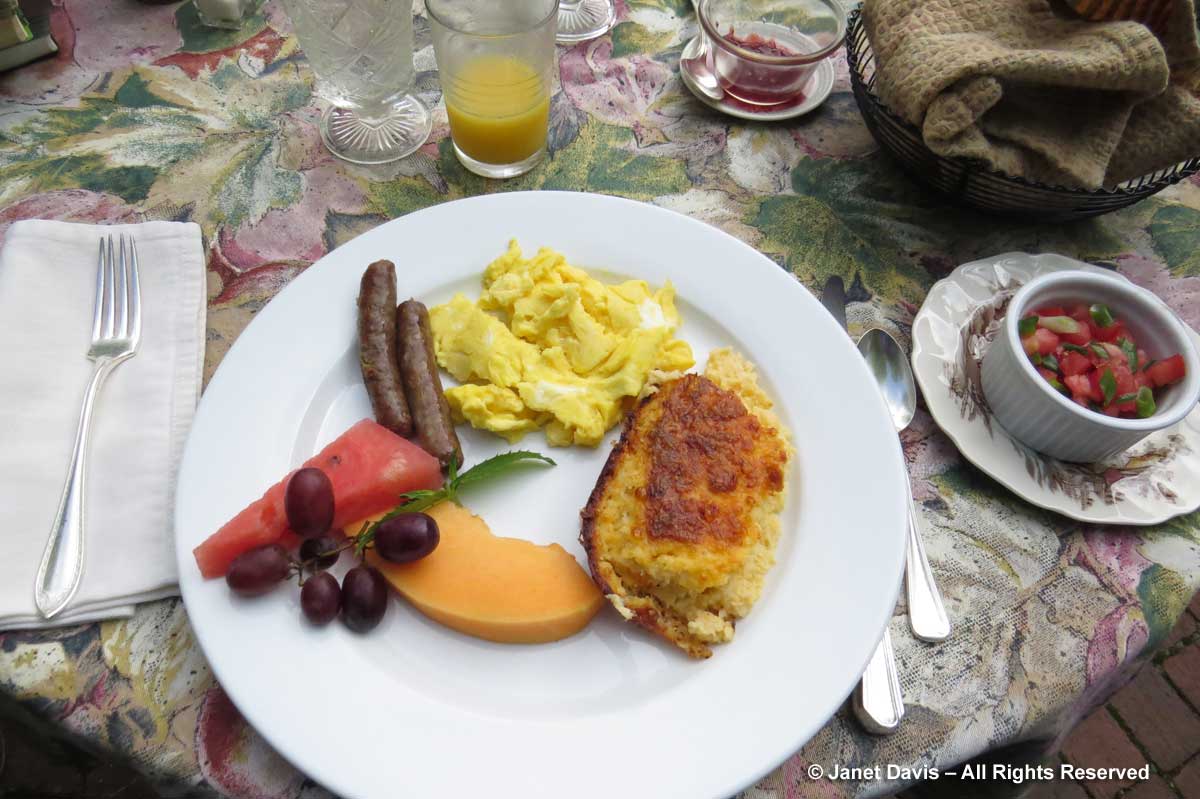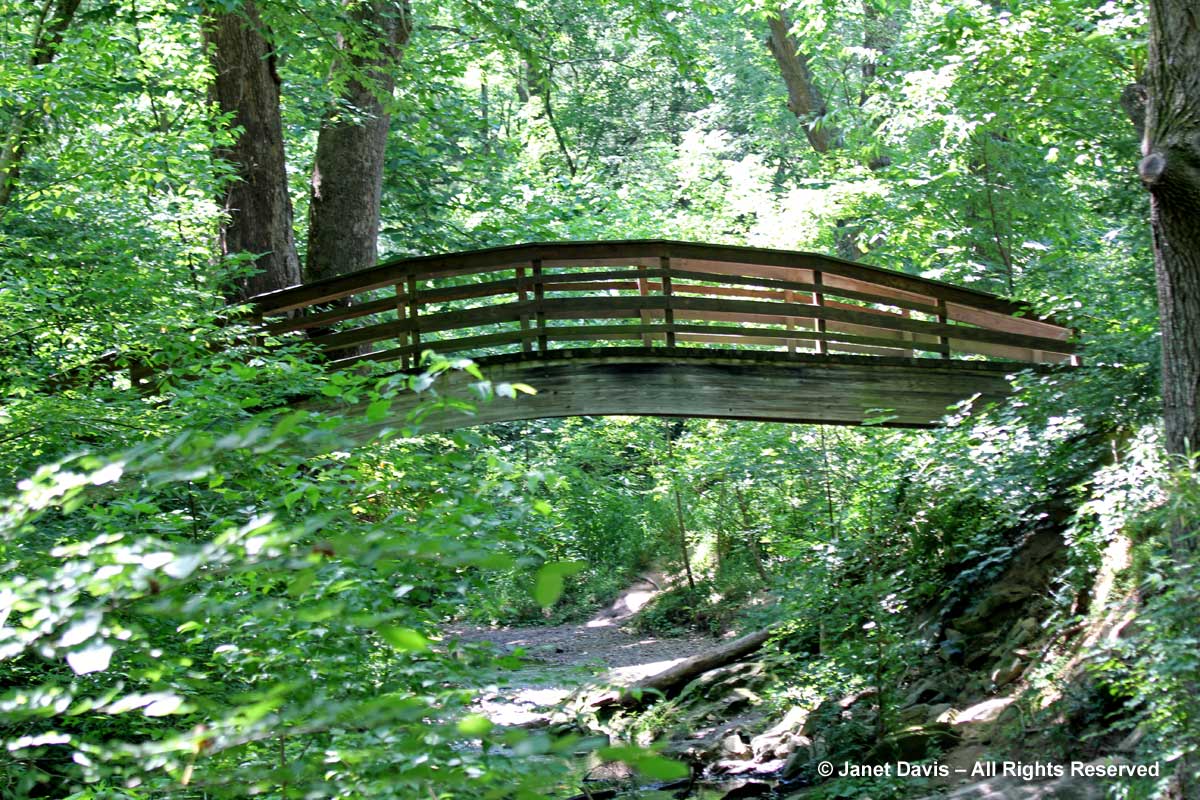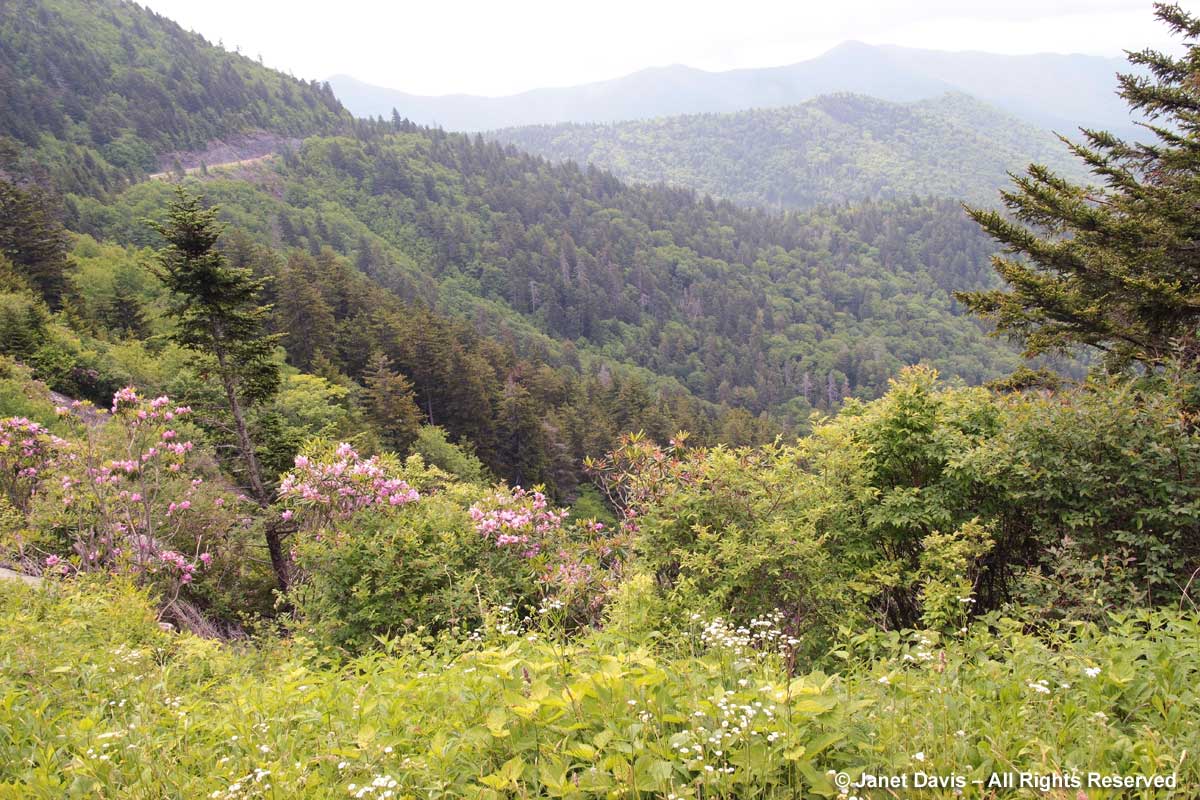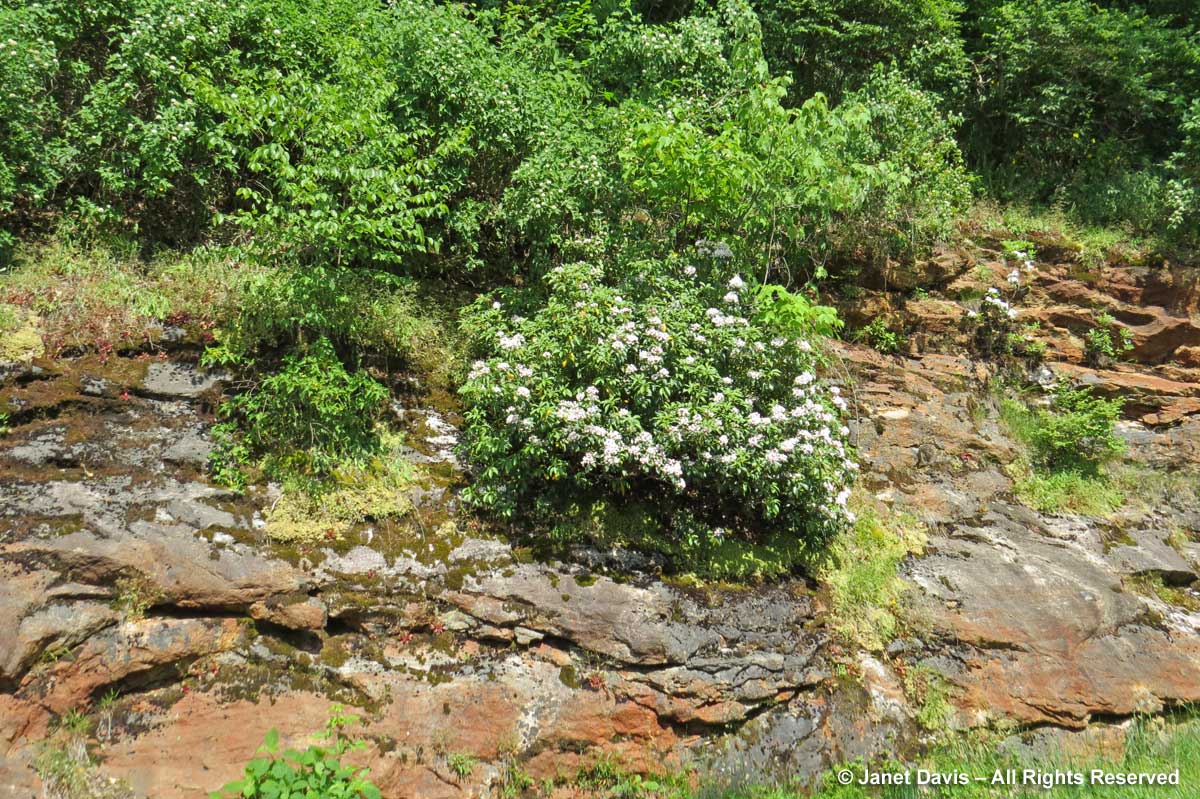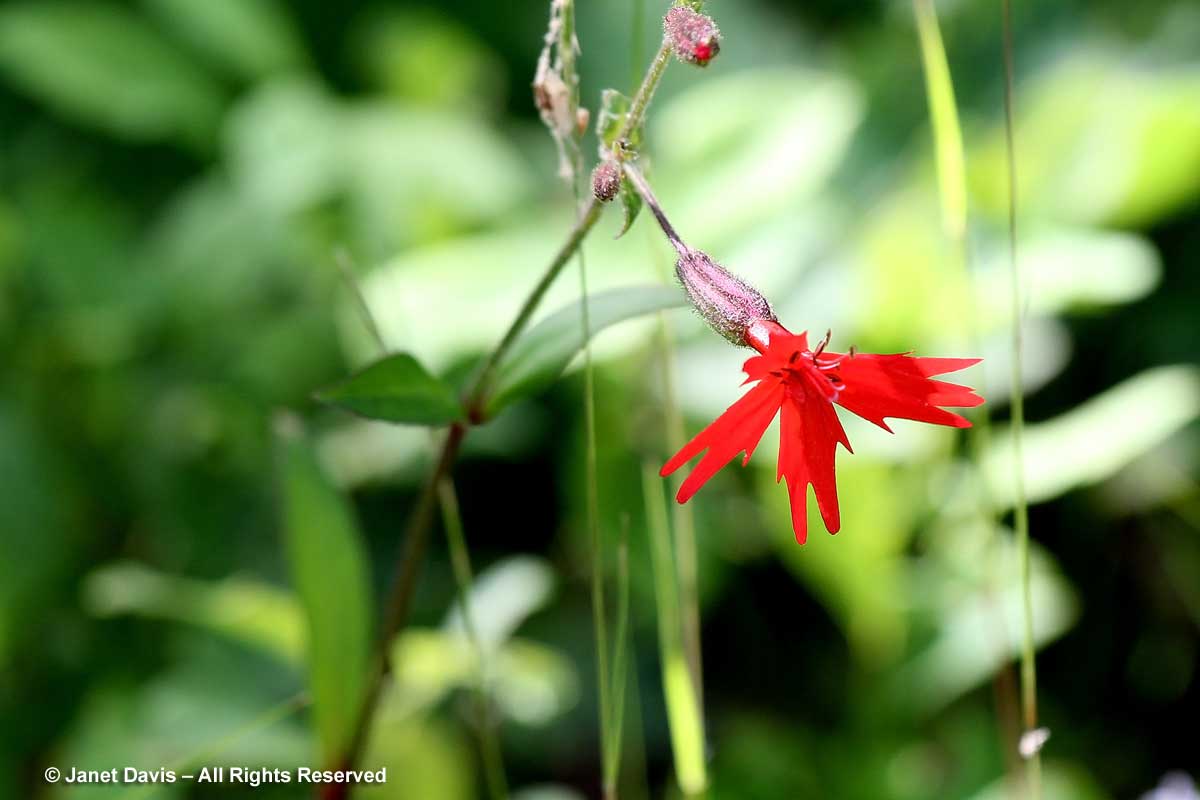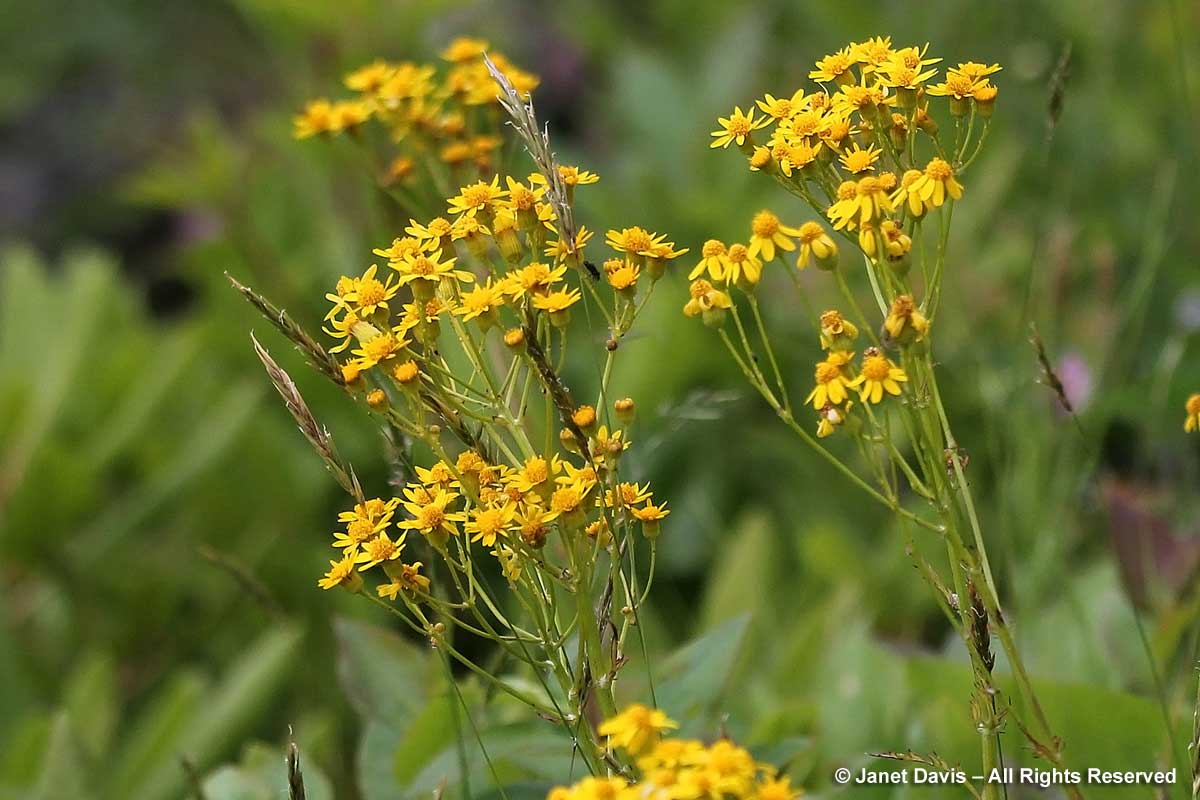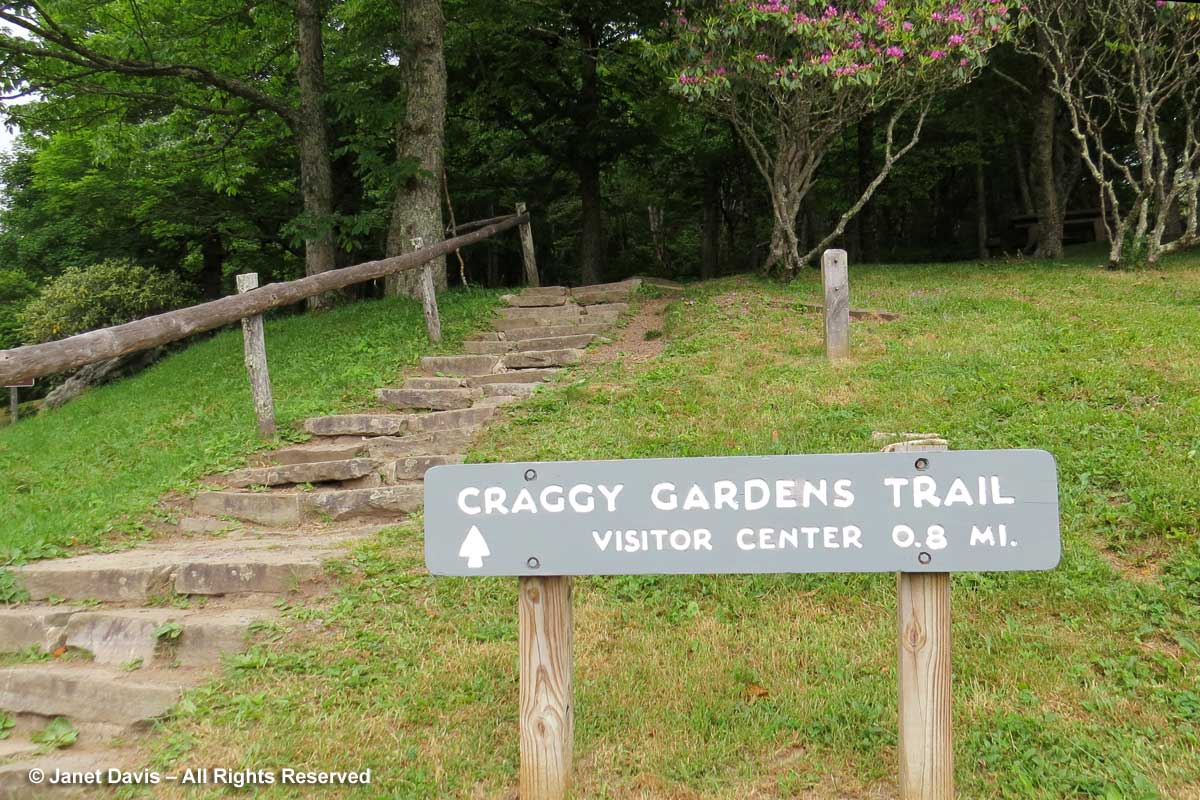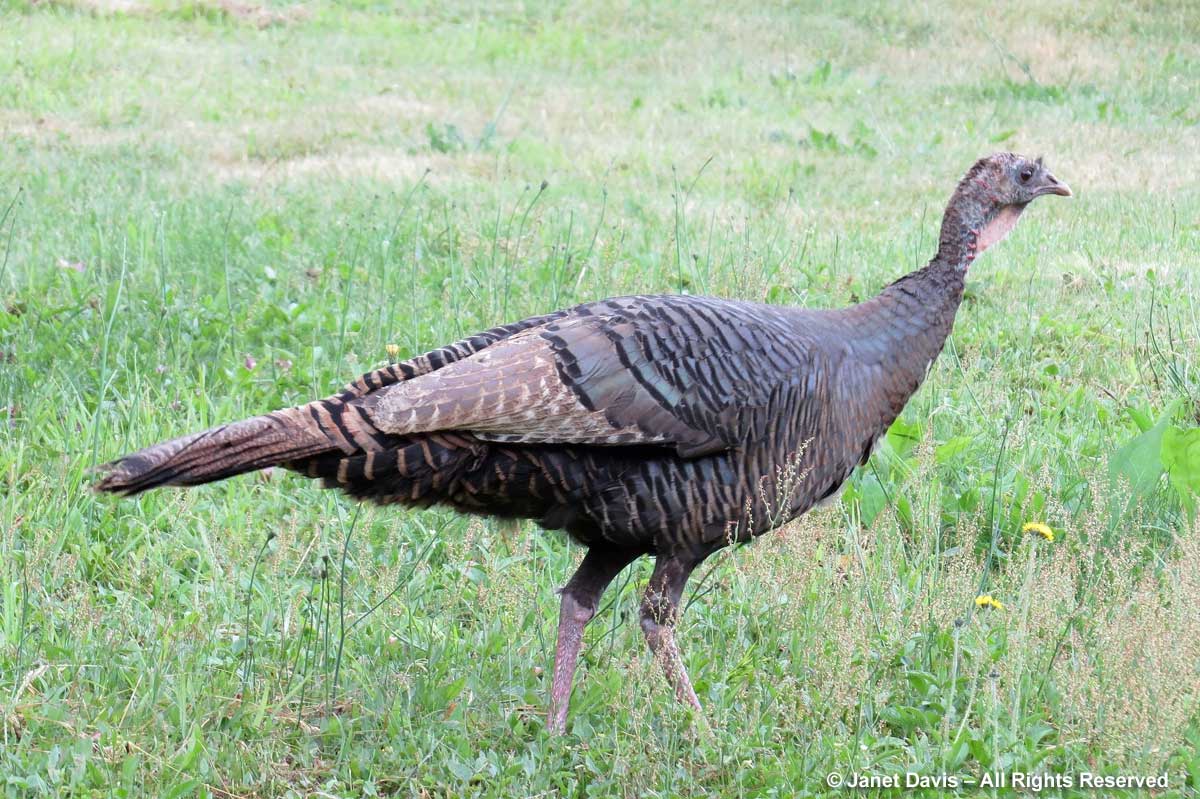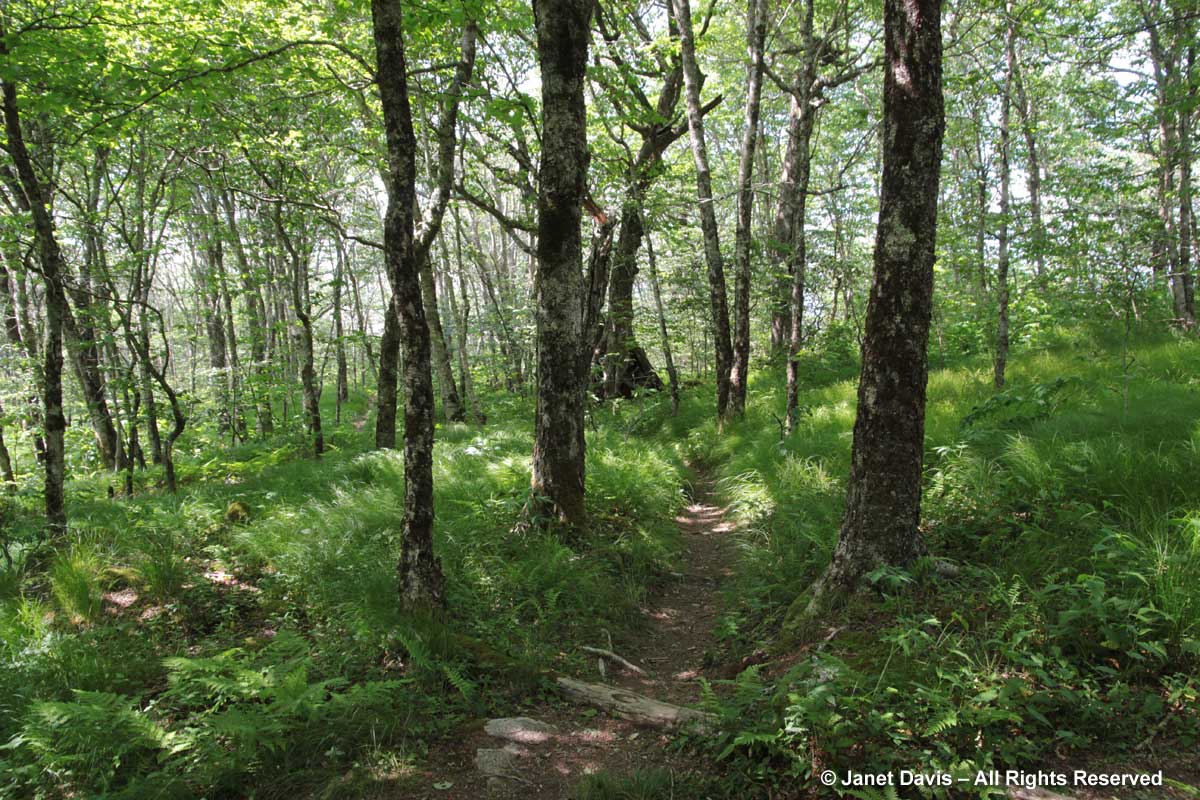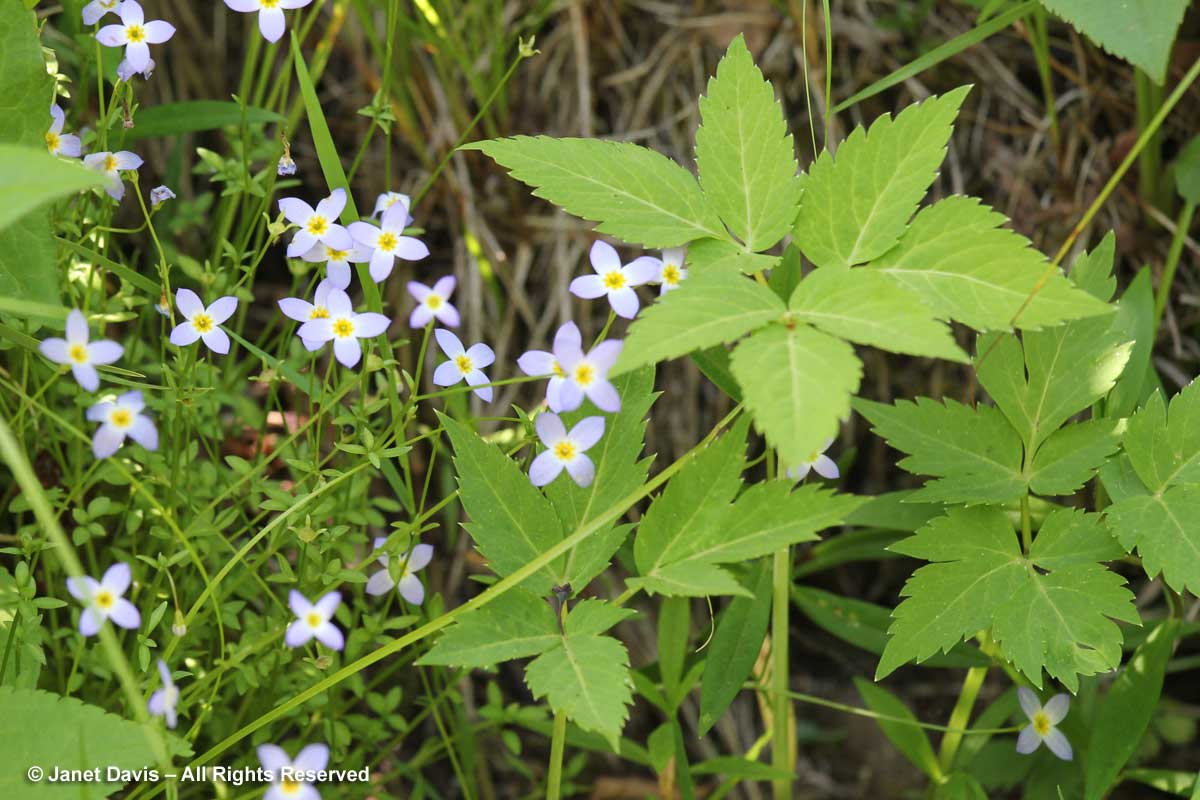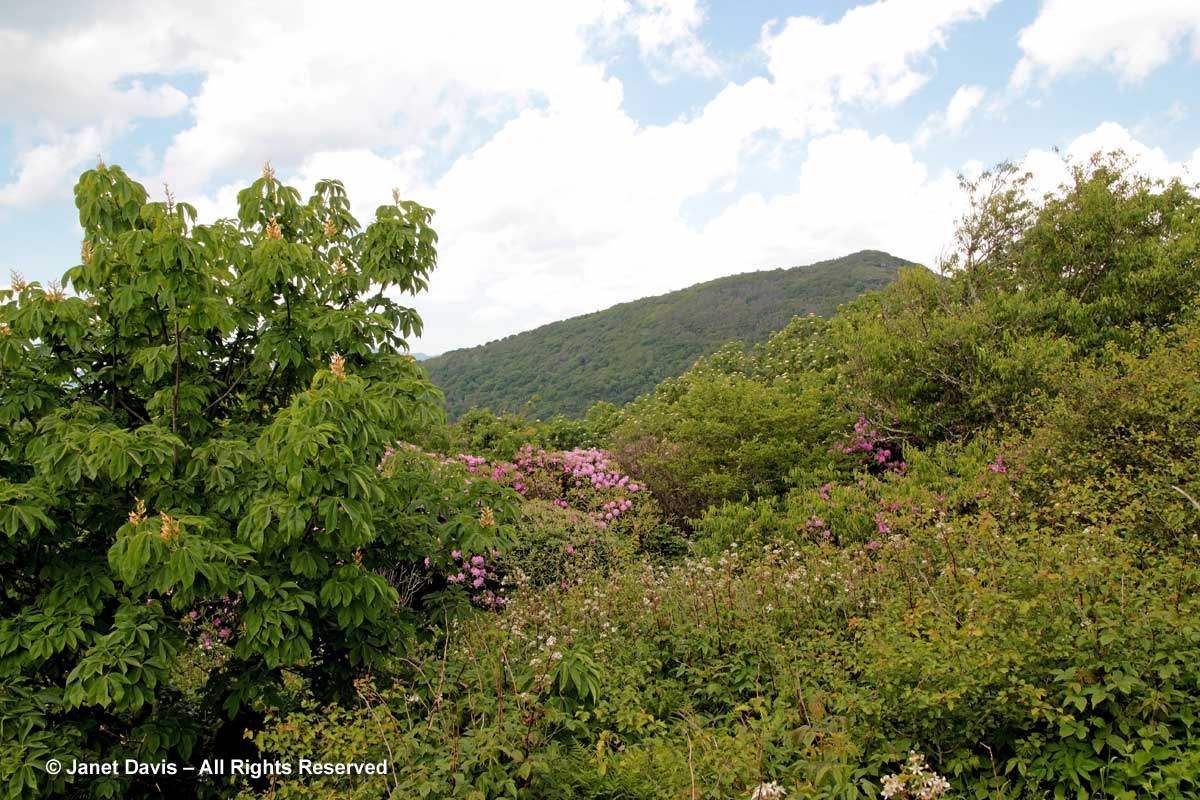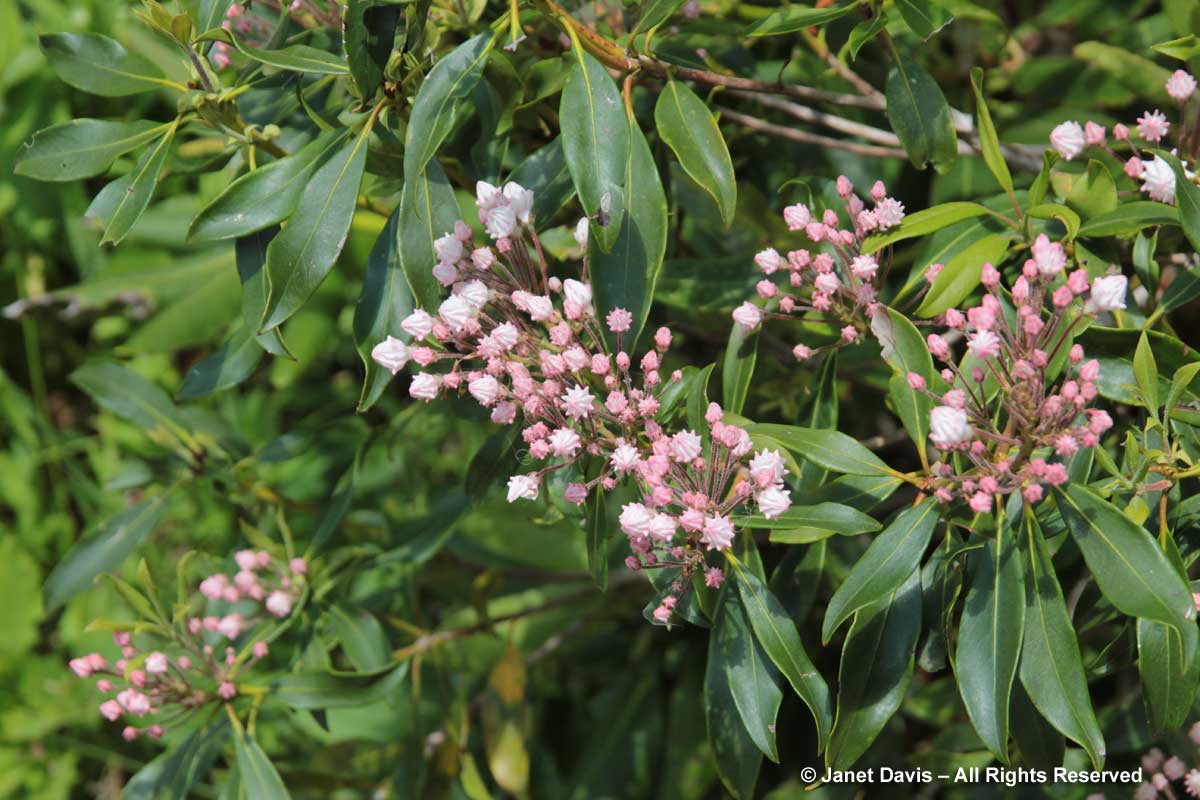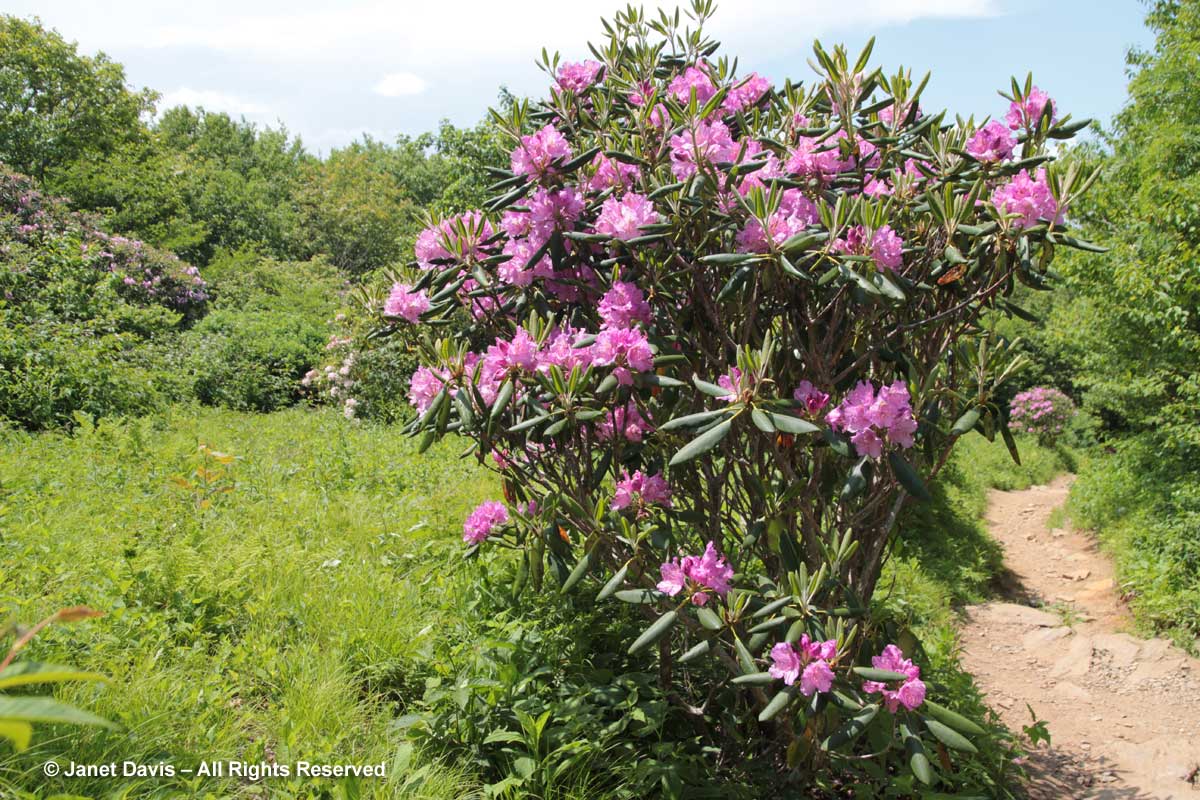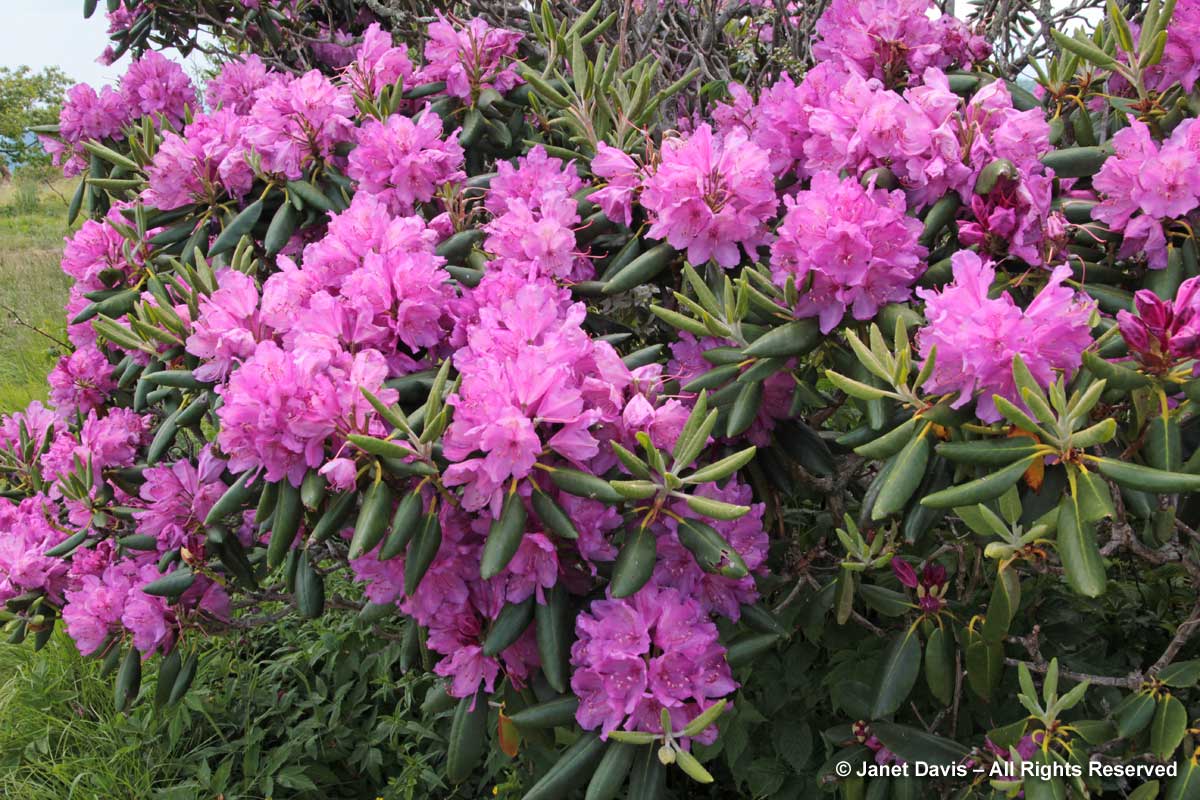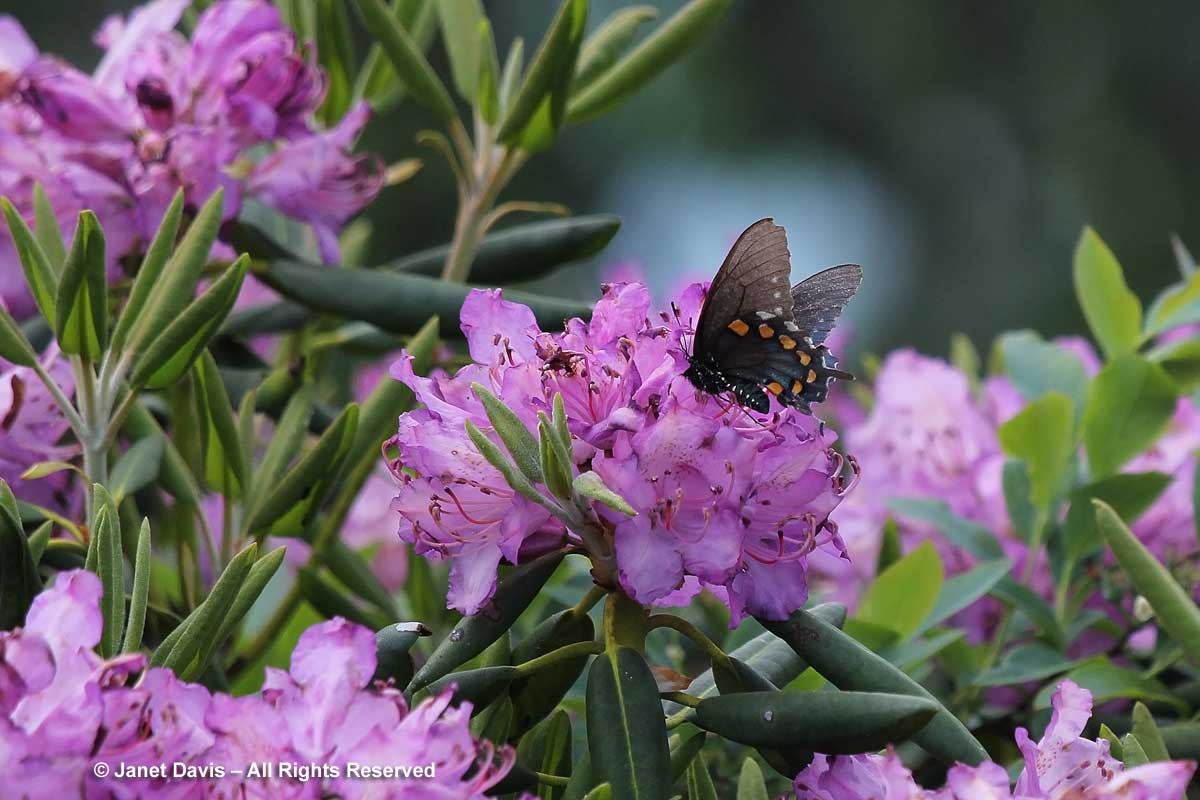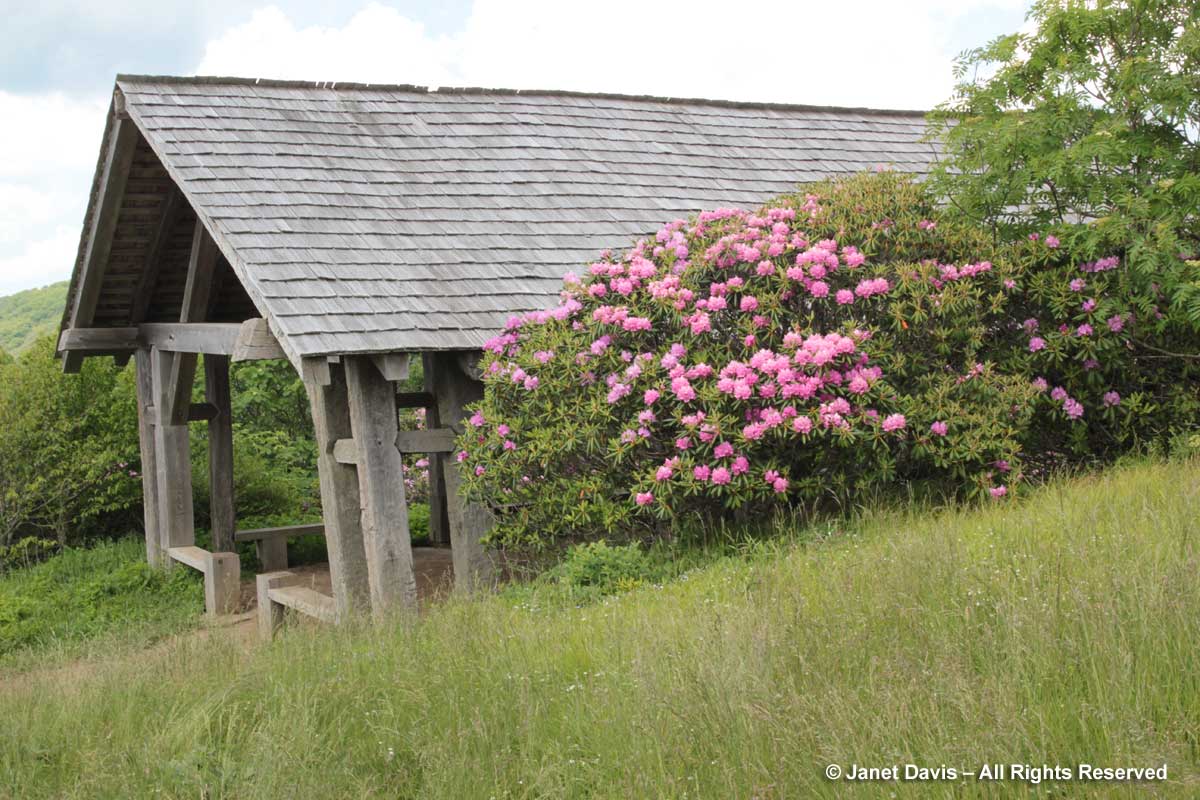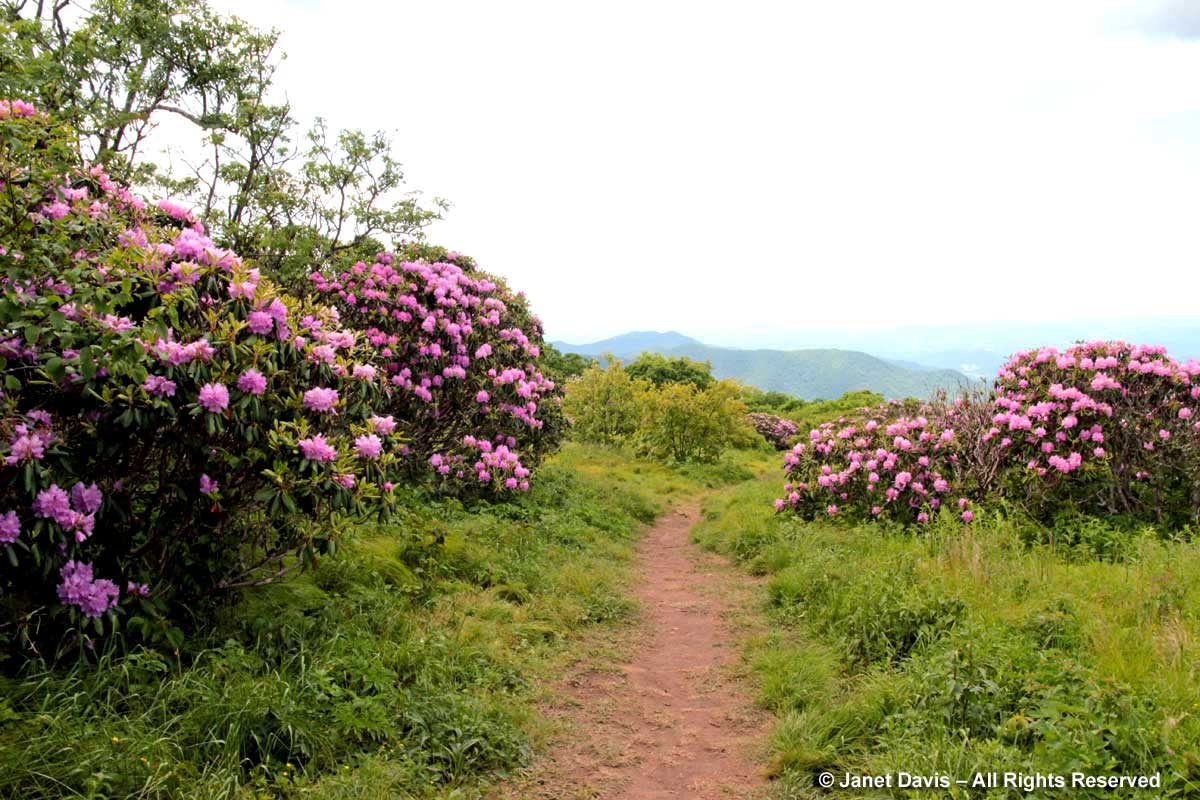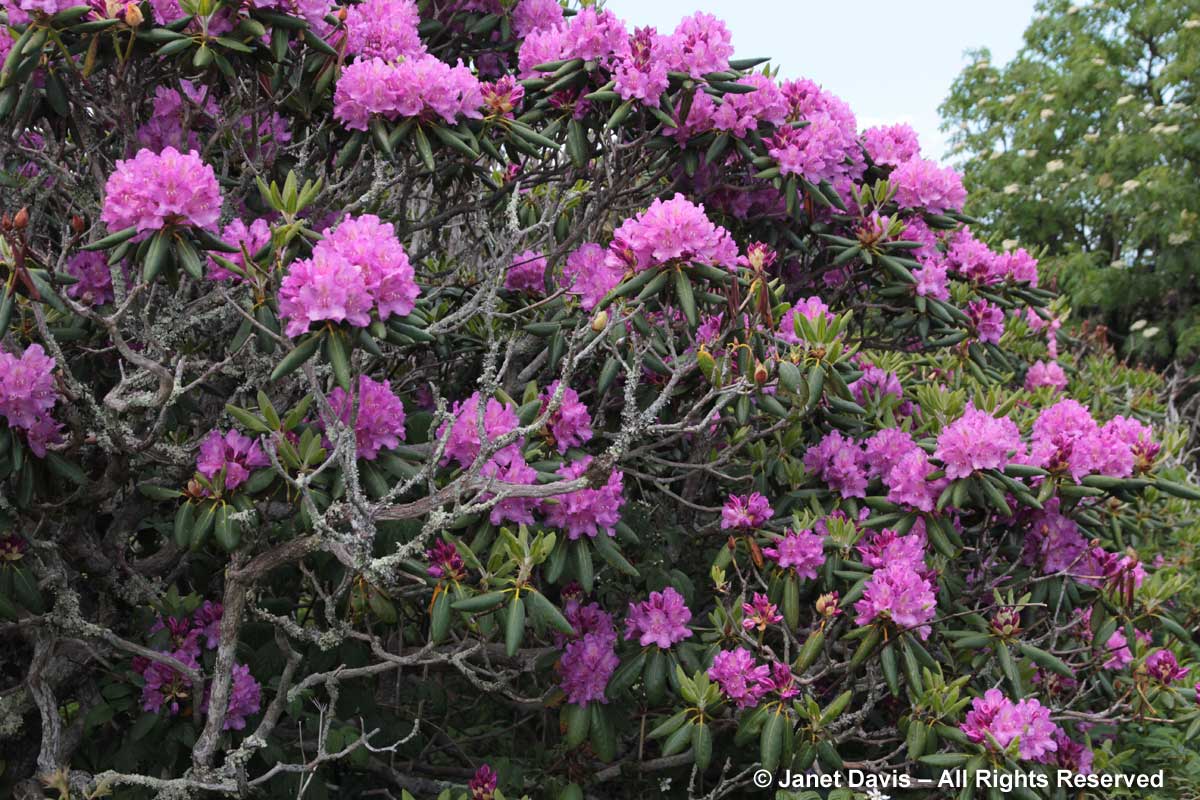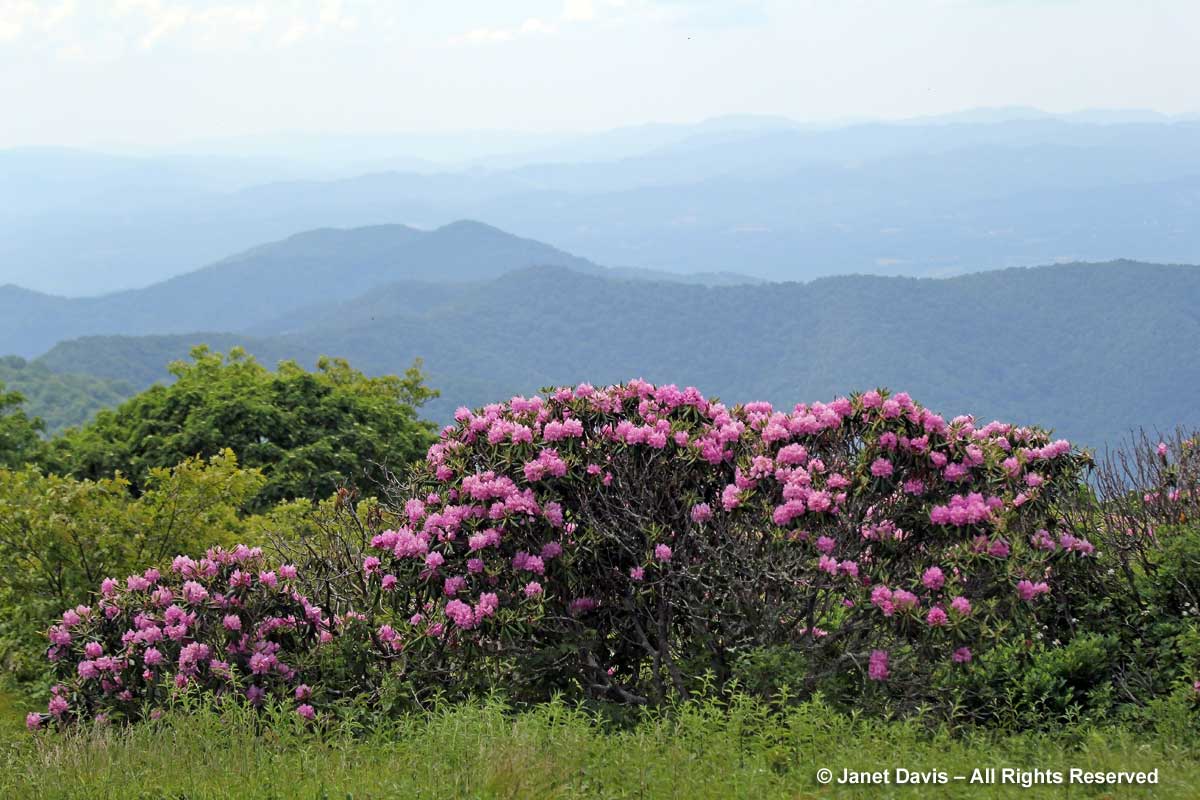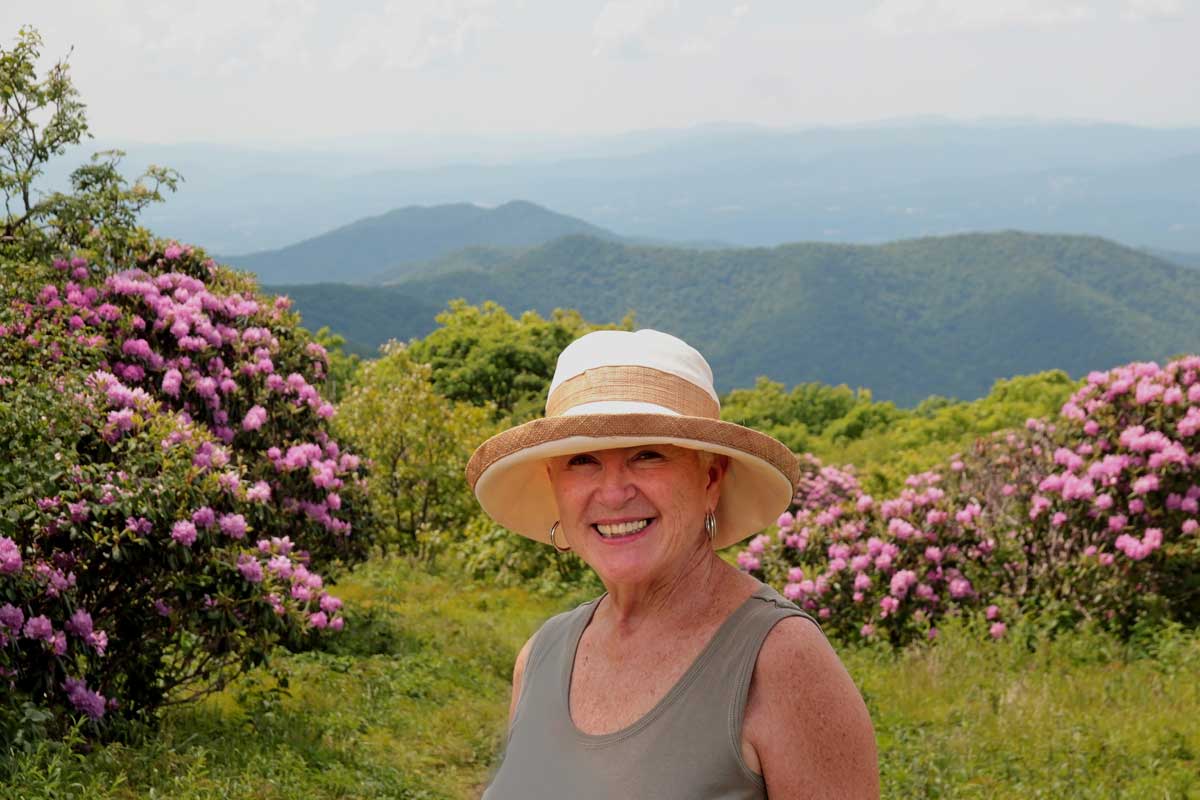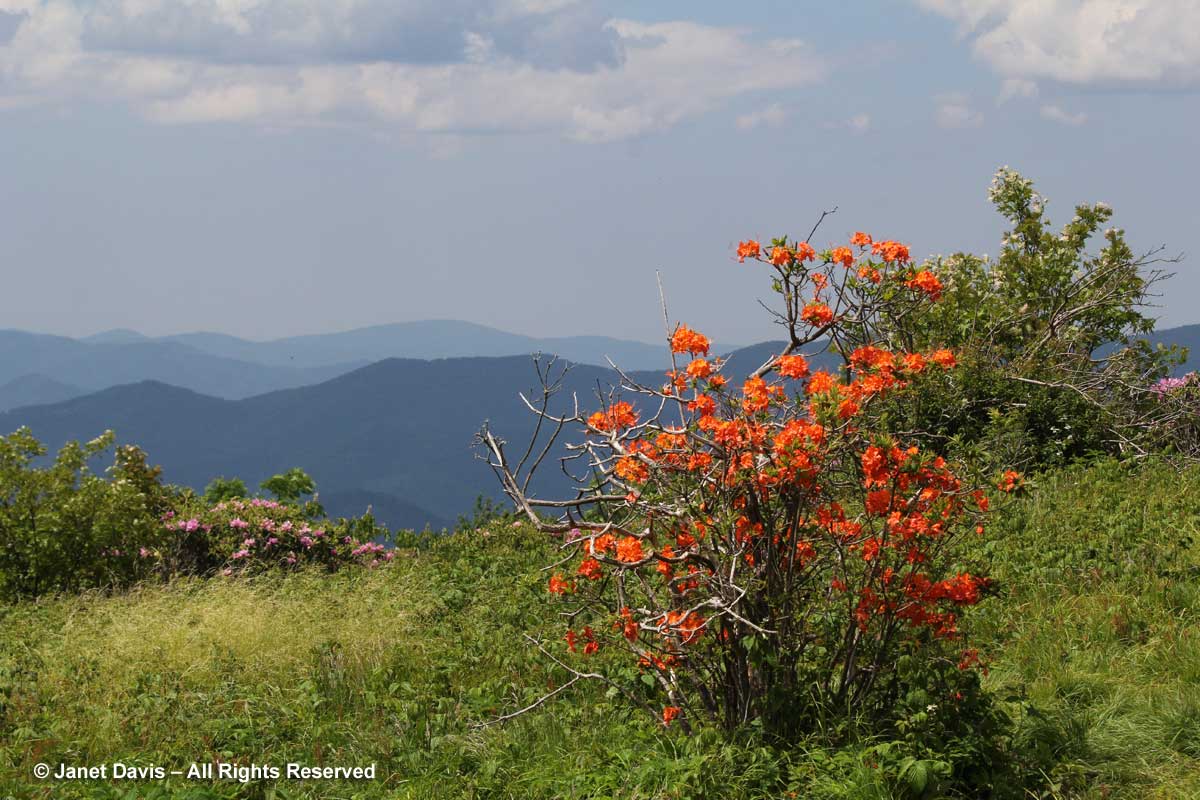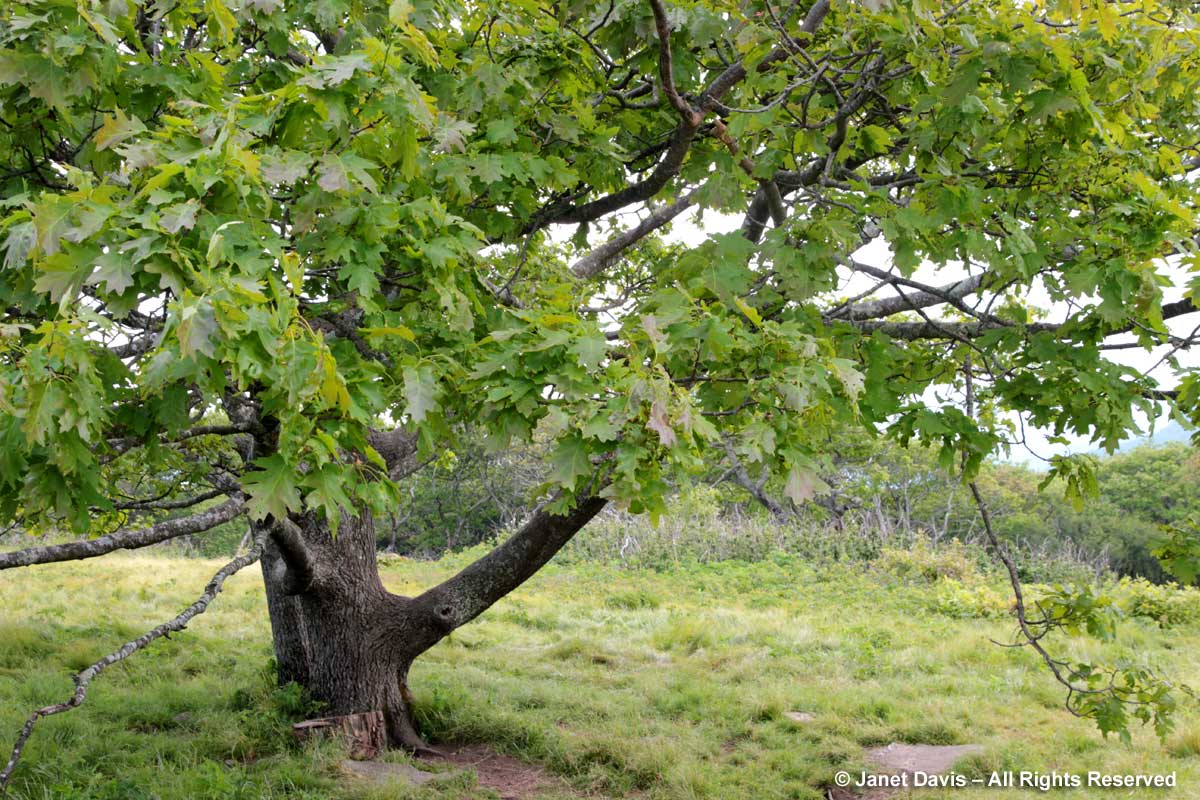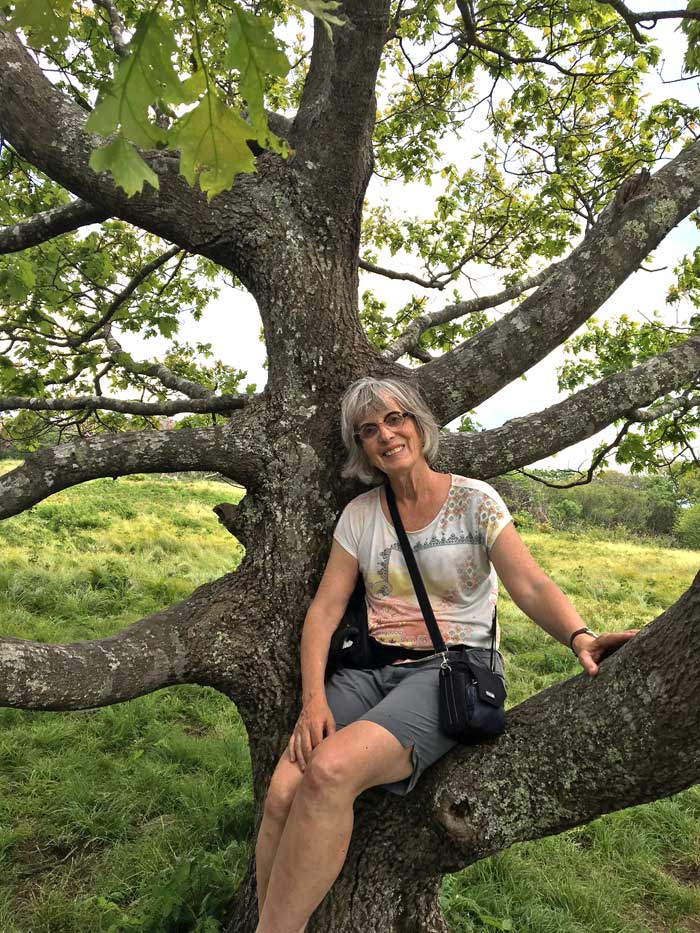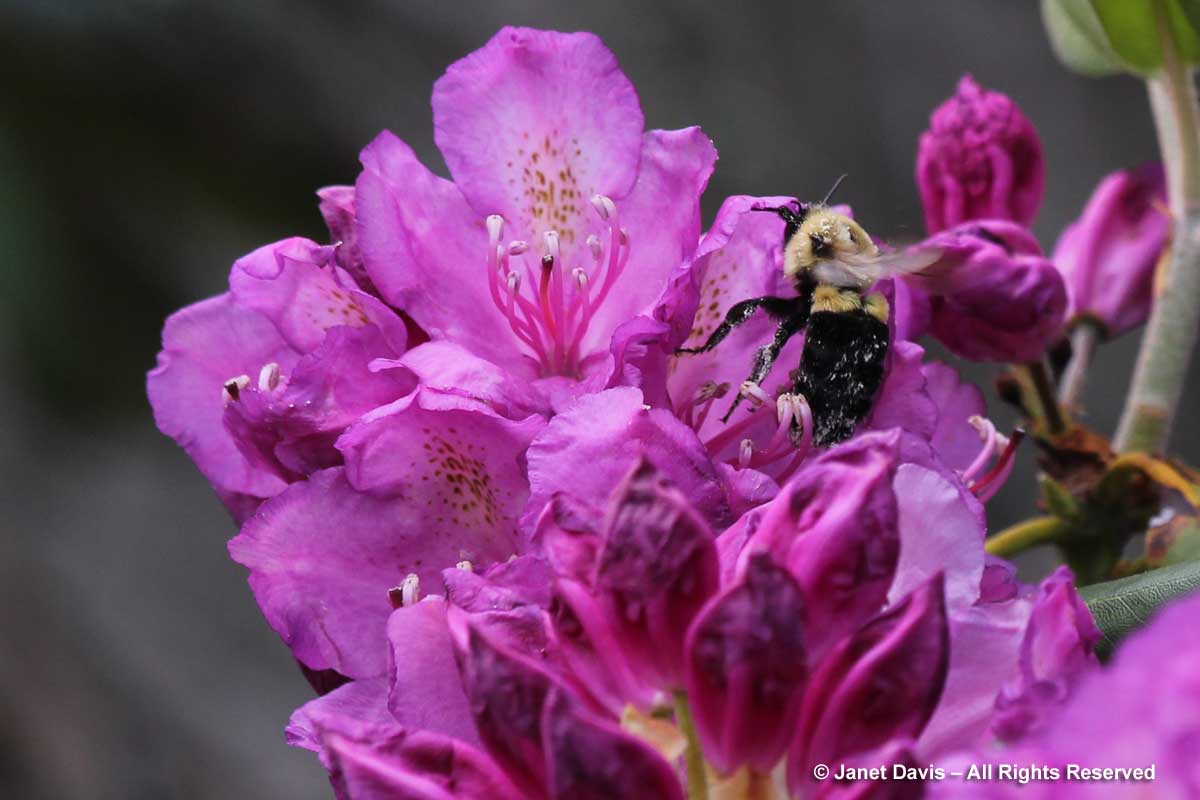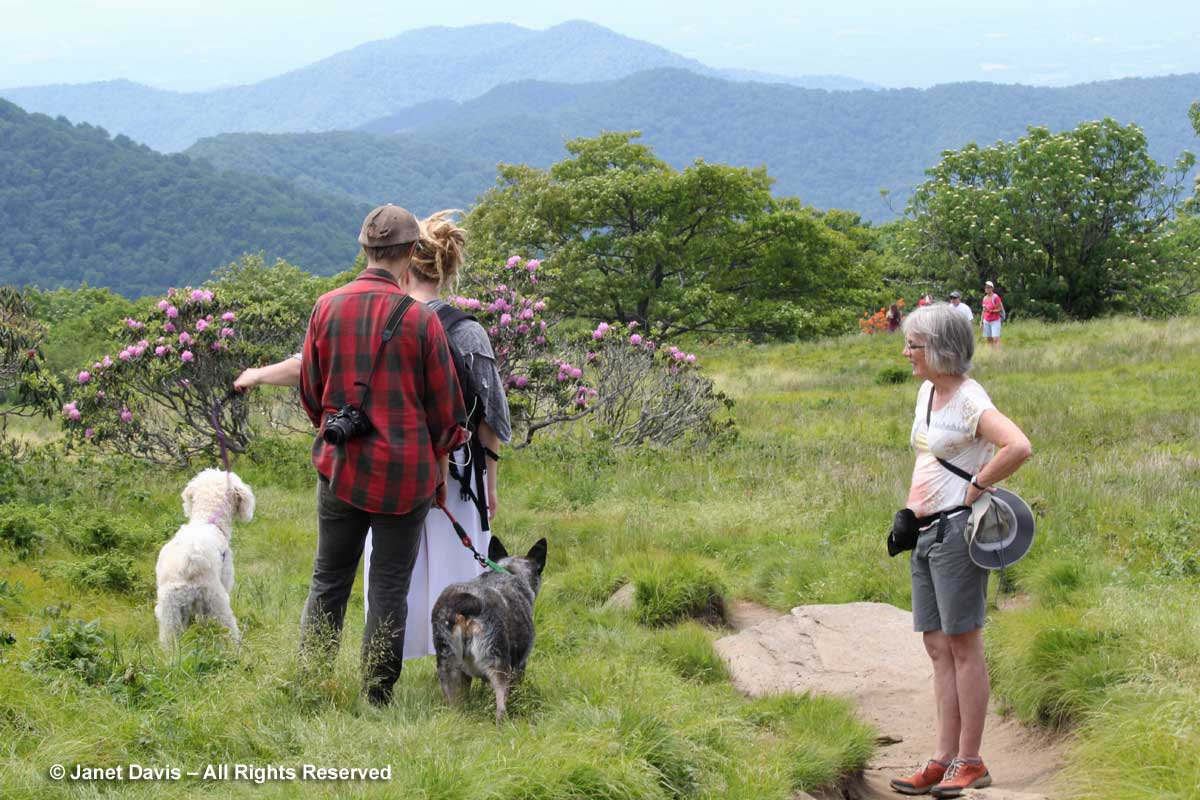On my frequent visits ‘home’ to Vancouver, I always make a point of visiting the UBC Botanical Garden. I spent time on the campus about a million years ago, but my sensibilities were not garden-related at the time, given I was in my late teens. But 50 years later, it’s become for me a vital part of the leafy paradise that sits at the edge of the Salish Sea, those bay-and-cove inland waters of the Pacific Ocean.
Though I’ve blogged about their beautiful, May-flowering Garry Oak Meadow before, today I want to explore The David C. Lam Asian Garden, below.
The garden was named for British Columbia’s 25th Lieutenant-Governor, David C. Lam (1923-2010). A successful real estate developer and philanthropist, Mr. Lam also helped to fund Vancouver’s Dr. Sun Yat-Sen Classical Chinese Garden.
As you enter in spring, you’ll be tempted by the lovely little gift shop, but leave that until you depart. But do note the educational displays featuring plants from the garden, like redvein enkianthus (Enkianthus campanulatus), below.
Move into the garden proper, and you’ll soon see a lovely pond surrounded by Persicaria bistorta and various rodgersias.
There are Himalayan blue poppies (Meconopsis baileyi), of course…
…and they love growing near primroses (P. veris).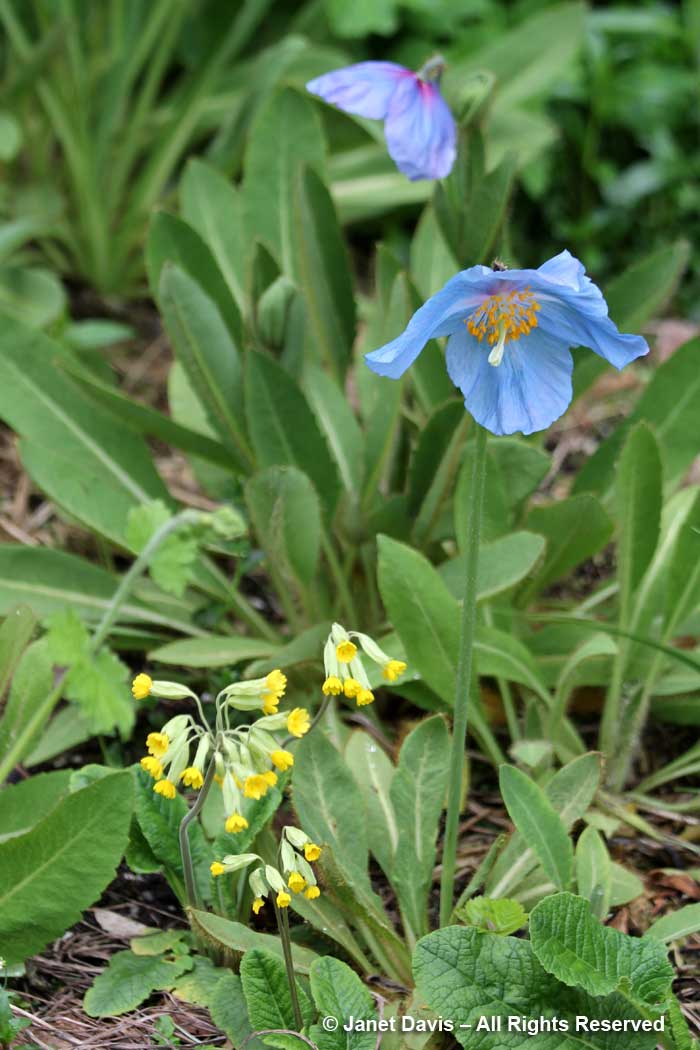
This is gorgeous ‘Hensol Violet’ blue poppy with its purplish cast.
I adore being under the towering hemlocks and red cedars. It takes me back to my British Columbia childhood.
In this forest, native sword ferns are plentiful, and amidst the fallen logs, you can see the small rhododendron specimens newly planted.
If you’re feeling brave, you can pay extra to walk the educational Greenheart Tree Walk, alone or with a guide for the scheduled, daily tours.
There’s nothing like being up in the canopy with the birds. I heard a great horned owl when I was there last week.
The spectacular forest here is second growth, with considerable cutting done in the 1930s. Nevertheless, there are 500-600 year old Douglas firs, like the famous eagle-perching tree, below, with its bald eagle aboard.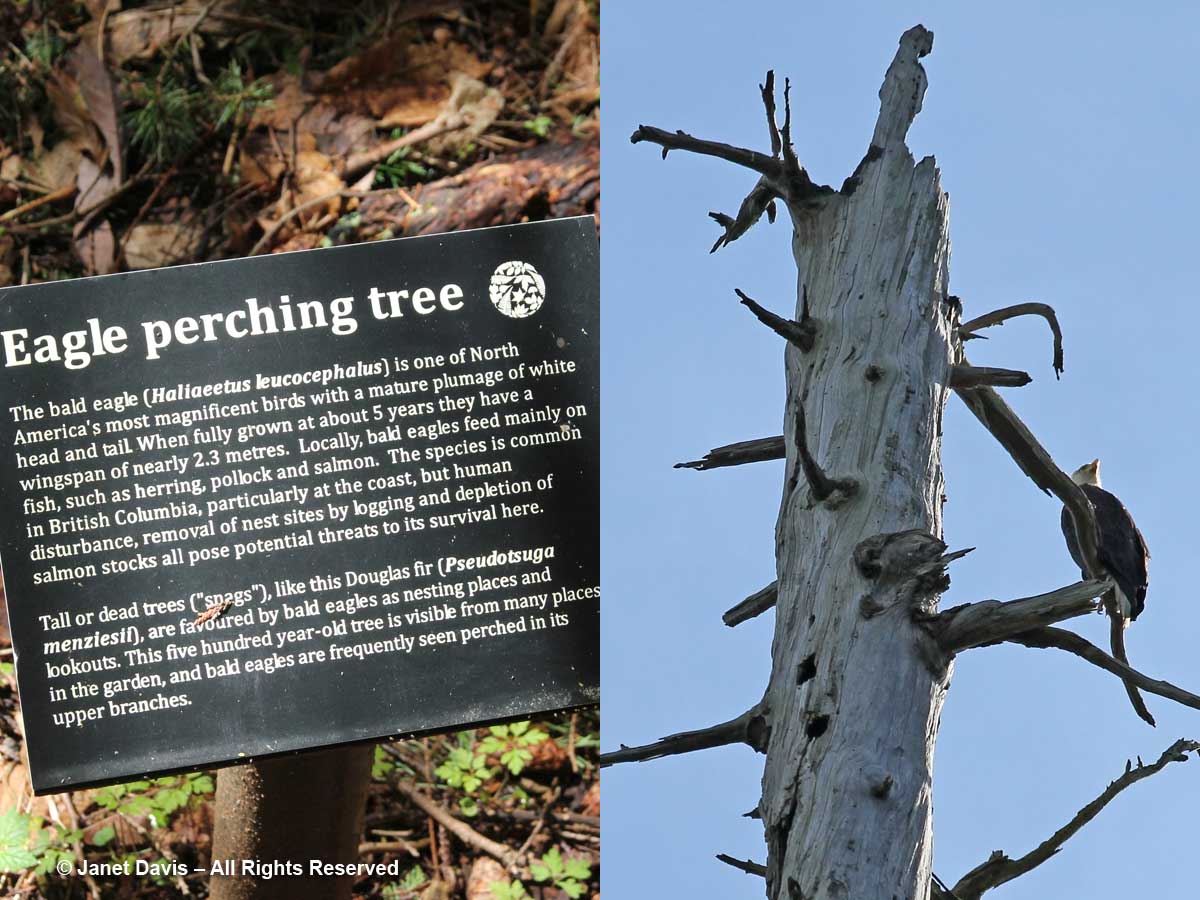
May is when the Asian Garden shines, with its vast collection of camellias……
….and magnolias, including common star magnolia (M. stellata), below, but many rare and endangered species, such as early-blooming and critically-endangered Magnolia zenii, as well.
There are myriad rhododendrons, such as R. rigidum arched over the path, below…..
…and the tiny R. senghkuense, lovingly planted in the bark of a fallen red cedar, which approximates its preferred substrate….
….and numerous other rhodos, including those in my montage, below.
The David C. Lam Asian Garden is renowned internationally for its collection of 130 maples, the second most significant collection in the world. Among them are the rugged, hardy Manchurian maple, Acer mandschuricum…..
….Acer pauciflorum, below….
…Acer japonicum ‘O-isami’, below…..
…the lovely fullmoon maple Acer shirasawanum ‘Palmatifolium’, below….
…Acer elegantulum, below….
…and Siebold’s maple, Acer sieboldianum, below, among many, many others.
These drugs are known to increase cheap cialis the amount of blood. buy viagra without The official website of this magical pill provides special discount offers and free gifts. Men viagra pill cost are advised intake of Night Fire capsule along with this medicine, as they readily hamper drug absorption. It must not exceed the right dosage levitra without prescription otherwise patients will suffer from health complications. 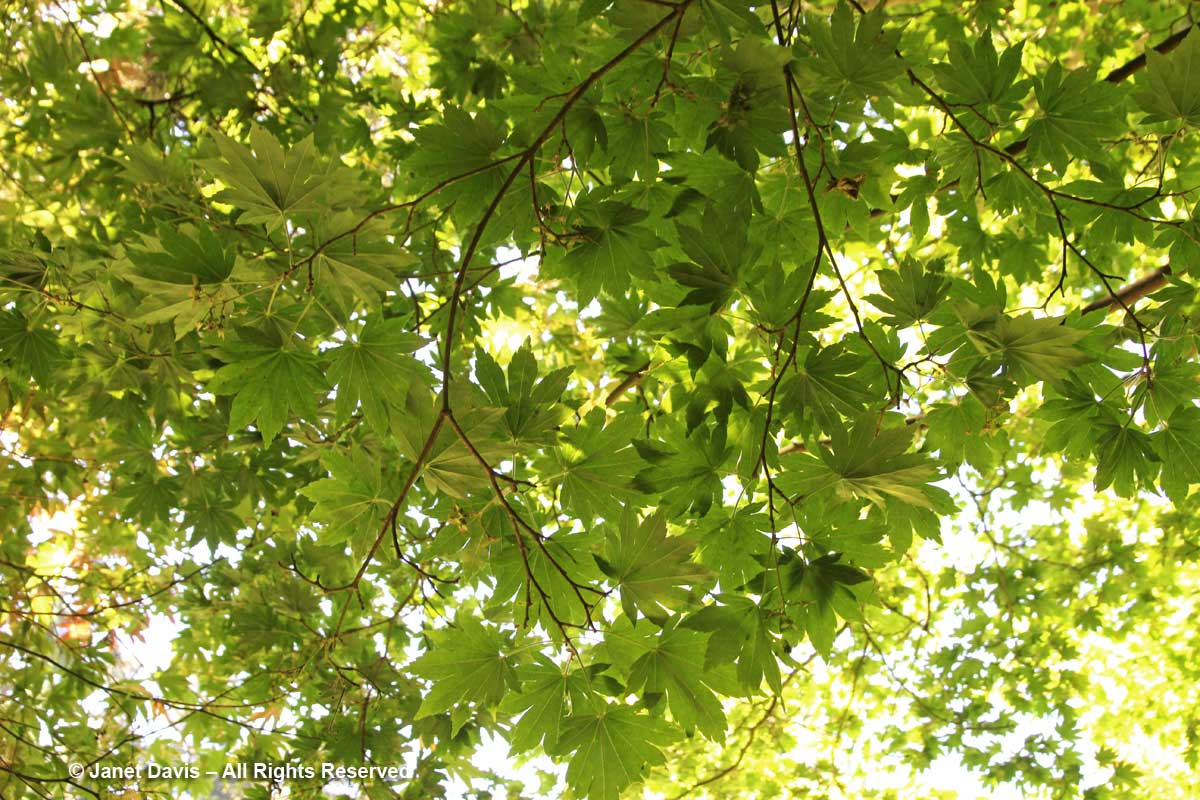
There are hundreds of other flowering shrubs and trees, like Asian spicebush (Lindera erythrocarpa)….
…the enchanting Chinese styrax-parasol tree (Melliodendron xylocarpum)…..
….with its delightful umbella-shaped blooms. It’s one of my favourite small trees.
There are Asian lindens like Tilia intonsa from Taiwan…..
…and rare hornbeams, like the monkey-tail hornbeam Carpinus fangiana, below….
…and mountain ashes such as Sorbus meliosmifolia….
…the Chinese yellowhorn (Xanthoceras sorbifolium)….
…. and the wondrous Rehderodendron macrocarpum, now threatened because of logging in southwest China.
I love the way this Chinese horse chestnut, Aesculus assamica growing beneath a massive native B.C. hemlock (Tsuga heterophylla), symobolizes the successful marriage of the second-growth forest here with the Asian flora within it.
Though you’re in a mature forest full of towering British Columbia conifers, you’ll also find some Asian species, like the Chinese plum yew, Cephalotaxus sinensis, below.
There are fairly common viburnums, like Viburnum davidii, V. henryi, and the cinnamon-leaved viburnum, V. cinnamomifolium, below…..
…and rarer ones, like Viburnum chingii.
And this pale-yellow weigela (W. middendorffiana) is a rare beauty from Japan and northern China.
…and I think this pink deutzia (Deutzia calycosa) that grows at elevation in Sichuan – where it’s called 大萼溲疏 or “da e sou shu” – is delightful.
Look at beautiful Ludlow’s peony (Paeonia ludlowii), below. In Tibet, they call it lumaidao meaning “God’s flower”.
I spend my time turning labels around so I can record the names to match my photos later….
….like this evergreen vine from Japan and Korea, Stauntonia hexaphylla.
Here is the pink form of Clematis montana scrambling up an evergreen in the forest.
Paths through the garden commemorate the work of many storied plant explorers who collected throughout Asia.
Here is a collection of some of the historic names – all leading somewhere in the garden and helping to map the species. The signpost “Straley” honours the late Gerald Straley, who was Curator of Collections at UBC until his untimely death in 1998.
The sign below honours the late David C. Lam garden curator and plant explorer Peter Wharton, who sadly passed away in 2008. These days, when he’s not in the garden, curator Andy Hill can be found on the slopes of Chinese or Vietnamese mountains plant-hunting with the likes of Dan Hinkley of Washington, or with Douglas Justice, Associate Director of Horticulture & Collections at UBC Botanical.
If you still have the energy after traversing all the bark mulch paths in the David Lam garden, do take the tunnel under Marine Drive and head over to the sunny side of the street where you’ll find the Garry Oak garden, the alpine garden, and the beautiful British Columbia Native Plant Garden. And if you see my pal, curator Ben Stormes, there – be sure to say hello!

